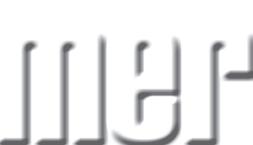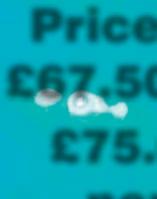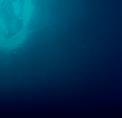























S this month’s issue of Fish Farmer goes to press, we can say for sure that the UK will have a new Fisheries Minister. Mark Spencer, the previous incumbent, failed to retain his Sherwood Forest seat at the General Election, and the government he was a part of has made way for another.
What that might mean for aquaculture in the UK is less clear, and the sector is probably pretty low on the “to do” list for the incoming Prime Minister. We do know that Labour, in its manifesto, promised to champion “Brand Scotland” internationally and that it specifically mentioned Scottish salmon as part of that brand.
Labour has also pledged to reduce the barriers to trade with the European Union, which have been a major irritant for UK finfish and shellfish farmers. This won’t be a quick process, however. Change is coming, but what it means for this sector has yet to be seen.
Meanwhile, in this issue we look at how gene editing – rebranded as “precision breeding” – might be used in aquaculture. This is one issue where Labour and the Conservatives seem to be broadly on the same page, although the Scottish Government is still opposed to this technology entering the commercial space.
Sandy Neil reports on efforts to reinstate the hyperbaric chamber at Dunstaffnage, a key medical resource for diving emergencies.
Vince McDonagh reports on progress across different salmon farming nations towards offshore farming, a move which promises to solve some problems but comes with challenges of its own.
This issue also includes a profile of Vertical Oceans, the company that is looking to change the way shrimp is farmed with a solution that, they say, could work anywhere.
We report on bipartisan moves in the USA to encourage more aquaculture and close the country’s seafood import gap; and on the Irish Government’s plans for sustainable growth in the sector.
Finally, we preview the European Aquaculture Society/World Aquaculture Society conference coming up in Copenhagen next month, and Dr Martin Jaffa considers how consolidation has affected the fish farming industry.
Best wishes Robert Outram
Meet the team
Editorial advisory board: Steve Bracken, Hervé Migaud, Jim Treasurer, Chris Mitchell and Jason Cleaversmith
Editor: Robert Outram
Designer: Andrew Balahura
Commercial Manager: Janice Johnston jjohnston@fishfarmermagazine.com
Office Administrator: Fiona Robertson frobertson@fishfarmermagazine.com
Publisher: Alister Benne�
@fishfarmermagazine
www.fishfarmermagazine.com
Fish Farmer Volume 47, number 07
Contact us
Tel: +44(0)131 551 1000
Fax: +44(0)131 551 7901
Email: editor@fishfarmermagazine.com
Head office: Special Publica�ons, Fe�es Park, 496 Ferry Road, Edinburgh EH5 2DL
Subscrip�ons address: Fish Farmer magazine subscrip�ons, Warners Group Publica�ons plc, The Mal�ngs, West Street, Bourne, Lincolnshire PE10 9PH
Tel: +44(0)177 839 2014
UK subscrip�ons: £75 a year
ROW subscrip�ons: £95 a year including postage – all air mail
Tavish
Nicki
Sandy
Sandy




OTTER Ferry Seafish has been awarded nearly £50,000 to work with Argyll wild fisheries experts to develop a groundbreaking gene bank which could help save threatened wild salmon populations.
The grant for the fish farm and research centre, based at Tighnabruaich on the west coast of Scotland, is one of seven major environmental projects being supported by Scotland’s salmon farmers to help save iconic wild salmon and sea trout.
Almost £140,000 has been granted to organisations this year through Salmon Scotland’s Wild Fisheries Fund to address long-term species decline. The fund is part of a £1.5m commitment from the salmon industry.
The initial four-year project is being developed in partnership with the Argyll Fisheries Trust and the River Ruel Improvement Association.
Organisers hope the project will not only help stock several regional rivers but also become a “blueprint”, paving the way for a wider "genetic insurance" network of banks across the country.
Alastair Barge, Otter Ferry’s managing director, said: “We are very excited to be part of this new initiative funded by the Salmon Scotland Wild Fisheries Fund.
“The project combines the knowledge and expertise of the wild fishery sector with the control provided by our

dedicated staff and versatile aquaculture facilities.
“Working together with the Argyll Fisheries Trust and the River Ruel Improvement Association, we aim to preserve the genetic integrity of the river’s salmon population while giving it a real chance for rapid recovery in the future.”
Preserving the river environment
A separate scheme to tackle erosion on the Ruel, improving the habitat through tree planting and fencing, has received £10,000, marking a third year of funding.
The five other projects awarded funds this year are:
• Ayrshire Rivers Trust – £17,026 to
ACTION to control sea lice numbers on Scottish fish farms has been successful, partly driven by the new requirement to report lice numbers on a weekly basis.
That is the verdict of Charles Allan, group leader of the Scottish Government’s Fish Health Inspectorate (FHI), in the evidence he gave to the Scottish Parliament’s Rural Affairs and Islands (RAI) Committee.
He said: “I think the sea lice situation on farms in Scotland has changed significantly… we have seen sea lice numbers come down on farm. In the last year we have offered no enforcement notices.”
undertake a restoration project that will aim to address riverbank erosion at the Mauchline Burn.
• Galloway Fisheries Trust – £22,697 to reduce acidity in the River Bladnoch using 700 tonnes of crushed scallop shells on forestry roads and feeder burns, improving the ecosystem.
• Uig Lodge Lettings – £10,000 for improvements to the Fhorsa River on the Isle of Lewis, focusing on enhancing spawning areas, reshaping channels, clearing vegetation and helping salmon move more easily.
• Urras Oighreachd Chàrlabhaigh (Carloway Estate Trust) – £6,305 for fishing surveying, analysis, and spawning bed improvements on the Carloway River on the Isle of Lewis.
• River Eachaig Fishery Syndicate –£24,376 for habitat improvements in Argyll, including riverbank strengthening, fencing, rhododendron control, and flood damage repairs.
Jon Gibb, co-ordinator of the Salmon Scotland Wild Fisheries Fund, commented: “The wild fisheries fund provides a rare and exceptional opportunity for rural and coastal communities to access vital funds aimed at improving their local rivers and lochs... wild salmon are currently facing a deep and dire crisis, and the aquaculture sector can play a crucial role in reducing their decline.”
Scan here to see the video

He was giving evidence in the second session of the RAI Committee, which is reviewing the Scottish salmon industry, following a previous inquiry which reported in 2018.

Allan said the level of six sea lice per fish, which was previously the statutory level for mandatory intervention, had been exceeded only once in the last reporting year. Asked whether sea lice numbers had gone down, he replied: “Yes – that’s borne out by the data… and almost never do we see the clinical results of infection.”
Arguing that the management of sea lice in farmed fish populations in Scotland had improved, he stressed that the role of the FHI is not only to enforce penalties but to encourage continuous improvement.
He said: “If I have to apply the stick, I would see myself, as a regulator, having failed.”
SCOTTISH salmon exports in the first four months of this year were up more than a third by value, according to HMRC figures. The data, analysed by industry body Salmon Scotland, shows that the value of salmon exports was up by £65m to £250m, a 36% increase on the same period last year.
On a rolling 12-month basis, the figure was £645m, representing the highest level in five years and an 11% increase compared with the previous year’s £581m. Salmon exports achieved their highest sales value since 2019.
Exports were also up by 35% in volume terms. In the first four months of the year, 26,000 tonnes of Scottish salmon were exported to more than 40 countries, enough for more than 100 million meals.
Salmon Scotland said that if current growth continues, 2024 could set a record for international sales.
Tavish Scott, chief executive of Salmon Scotland, said: “The reputational and economic value of Scottish salmon is immense, as reflected in these latest export figures showing a significant increase in global demand for our healthy, nutritious fish."
The EU continues to be the key destination for Scotland’s salmon exports, accounting for £153m worth of the total between January and April this year.
Sales to the bloc have soared by £53m, while
volume was up by 51% to almost 17,000 tonnes.
France remains the single largest market for Scottish salmon, with sales of £143m.
Elsewhere, exports beyond the EU increased 14% to £97m, with almost one in five salmon exported heading to the US (£56m, representing a year-on-year increase of 13%).


FARMED mussel production in Scotland reached a record level in 2023, while there was a slight fall in the volume of farmed king scallops and oysters.
The figures come from the Scottish Shellfish Farm Production Survey 2023. The survey was compiled for the Scottish Government from returns provided by shellfish producers.
The figures for 2023 show that Scotland produced 10,300 tonnes of farmed common mussels, the largest amount ever recorded and representing an increase of 13%. The number of common mussel producing sites with sufficient spat settlement for production purposes decreased, however, from 88 to 54.
The vast majority of mussel production is based in Shetland, which accounts for around 84% by tonnage.
Pacific oyster production decreased by 4%
during 2023 in tonnage terms, while there was an increase in the production of native oyster from 109,000 to 111,000 shells in 2023. Native oyster production is now back to the levels seen in 2019 after the serious slump which occured in 2021.
During 2023, 3.9 million Pacific oyster shells were produced for human consumption. Almost half came from the Highland region and just under 34% from Strathclyde.
There was a decrease in king scallop production since 2022, from 39,000 to 24,000 shells. Queen scallop information was not reported this year due to the low levels of production and producers.
The financial value of farmed shellfish production was also up. The Scottish shellfish farming sector is estimated to be worth approximately £14.1m at first sale value, an
increase of 36% on the 2022 value.
Employment levels decreased by 4% from the previous year, with 246 full-time, parttime and casual staff being employed in the industry during 2023.
The survey also reports on shellfish health issues. During 2023, 133 out of 294 licensed shellfish production sites were inspected as part of a risk based surveillance programme. Movement restrictions remain in place for the presence of Bonamia ostreae at Loch Sunart and the Dornoch Firth in Highland region, West Loch Tarbert and Lynn of Lorne, Loch Creran and Loch Etive in Strathclyde region. Great Britain remains free of the shellfish diseases bonamiasis, marteiliasis and OsHV-1 µvar, with the exception of specific compartments under movement restrictions.
MEMBERS of the newly formed Young Aquaculture Society (YAS) visited Scottish Sea Farms’ west
coast facilities for a deep dive into how farmed salmon are raised.
The day-long visit took in a tour of the Scottish Sea Farms (SSF) Barcaldine Hatchery near Oban, a Q&A session with the company’s Head of Sustainability and Development, Anne Anderson, the SSF farm at Charlotte’s Bay and the processing and packing facility at South Shian.
A SCOTTISH Sea Farms processing supervisor has won the inaugural Emerging Talent award at the M&S Select Farm Awards 2024. Nicole McAleer saw off competition from other leading food producers to scoop the prize, one of five awarded in
celebration of the M&S supply chain in Scotland. She is pictured, left, receving her award.
The Emerging Talent award, open to anyone aged 35 and under, champions those who are positive role models, making an exceptional contribution to their sector.
McAleer joined the salmon producer over four years ago as a Trainee Processing Supervisor at South Shian near Oban before progressing to her current position and is believed to be one of only two women in the Scottish sector to perform such a role – the other is also working within Scottish Sea Farms.
AS part of the Aqua Agenda series, Fish Farmer will be hosting a free webinar on Wednesday 21 August, on the topic of Recruitment and Diversity. We’ll be looking at how fish farming and seafood businesses can ensure they continue recruiting successfully and what is being done to encourage young people into this field.
Our panel of experts includes: Dr Liz Barron-Majerik MBE,
NEIL Manchester, the Managing Director of Kames Fish Farming who died in May last year, was commemorated with a weekend of fundraising and celebrations in June that brought in more than £4,000 for local causes.
Director of Lantra Scotland; Donald Waring, Learning and Development Manager, Mowi; Jillian Couto-Phoenix, Head of Skills and Talent at the Sustainable Aquaculture Innovation Centre (SAIC); and Jeni Adamson, Industry Engagement Manager with Seafood Scotland. The webinar takes place between 11.30am and 12.30pm on Wednesday 21 August. To register, scan the QR code below.

The company invited current and former staff members, and Neil Manchester’s family, to take part in a Memorial Challenge set up using the sports app, Strava. Kames committed to donating £1 for every mile covered by cycling, walking and swimming. Together the participants covered more than 2,900 miles.
On the Saturday Kames hosted a hog roast along with clay pigeon shooting – an activity Neil Manchester loved.
Together with the JustGiving page set up for the event, just over £4,650 was raised.
The Craignish Community Company, which supports first responders, was the main recipient with £1,500 ringfenced and the rest of the money being split between rural emergency charities near the Kames sites, including the Kilmelford Fire Service and First Responders being two others.
Kames Marketing and Communications manager Cate Cannon, whose husband Andrew Cannon is now Managing Director and whose father-in-law, Stuart, founded the company, said: “First Responders are local volunteers who can be at the emergency scene before the ambulance arrives – bearing in mind that ambulances can easily take an hour to reach rural parts, so they are really important to rural communities. They need funding for training and kit. They came out to Neil within minutes of his collapse and tried to resuscitate him, so his wife was keen to support them.”









THE long-time partner of a Mowi Scotland employee has expressed “disappointment” over the findings of a Fatal Accident Inquiry (FAI) into his death.
Clive Hendry was an Assistant Farm Manager with Mowi, at the Ardintoul farm on the south side of Loch Alsh.
On 18 February 2020, he was disembarking from a workboat, the Beinn na Caillich, onto the farm’s SeaCap feed barge, and became trapped between the barge and the workboat. Although a colleague attempted to rescue him, he slipped out of his life jacket and into the sea. He was recovered, lifeless a few minutes later.
Key marine safety bodies were not represented, she said, the court’s online video application was unreliable at times and not all the evidence was presented. For example, previous accidents, including eight involving crushing injuries, had not been taken into consideration.
Lockhart said the FAI’s failure to make recommendations – the published determination only provides “opinions” and “conclusions” – meant that lessons from the tragic accident had not been learned.
She said: “I feel this will happen again… nothing has changed.”
Sheriff Gary Aitken of Inverness Sheriff Court, said: “There are precautions which could reasonably have been taken that might realistically have resulted in the death, or accident resulting in the death, being avoided… there should have been a specific risk assessment for the transfer of personnel from large workboats such as the Beinn na Caillich to floating structures such as the SeaCap. Secondly, and following on from such a risk assessment, there should have been a safe system of work for such transfers. As a minimum, such a system of work should have required that the vessel be stationary during transfer and mandate that personnel should only embark or disembark from the vessel when signalled by the master of the vessel that they are satisfied that it is safe to do so.”

In May last year Mowi, which pled guilty at Inverness Sheriff Court to a number of health and safety breaches, was fined £800,000 and ordered to pay a victim surcharge of £60,000.
Catriona Lockhart, Hendry’s partner for 28 years, felt the court case had not addressed the underlying causes of the accident and campaigned for an FAI to be opened – but she now feels let down by the process and its outcome.
Catriona Lockhart said of the inquiry, which was conducted online: “It was just a farce.”
BAKKAFROST Scotland has reported a much improved second quarter harvest for this year.The operation produced 11,400 tonnes against 7,300 tonnes for the same April to June period last year.
The development reflects the continuing improvement at its Scottish division which is now getting on top of earlier biological problems.
The Faroe Islands Q2 harvest was 10,200 tonnes against 8,700 tonnes last year, but the figure would have been higher had it not been for a general workers’ strike across the islands during the period.There was, more or less, no seafood processing taking place in the Faroes for up to a month.Truck drivers were also involved in the strike.
The company’s Faroese operations were also affected by an infectious salmon anaemia (ISA) outbreak at the end of May.
Bakkafrost Q2 feed sales remained largely unchanged at 32,900 tonnes.
The full Q2 2024 report will be released on 26 August.
The determination also criticises lax practice regarding life jackets and man overboard training, issues which Mowi says it has now addressed, as well as improving the company's procedures for safe transfer.
Mowi’s Head of Health and Safety, David Filshie, told the Oban Times: "Mowi extends its deepest sympathies to the family, friends, and colleagues of Clive Hendry, who tragically lost his life on February 18, 2020. The findings of the Fatal Accident Inquiry highlight shortcomings in our safety management system which were immediately rectified after the accident. Since the accident, we chose to recognise guilt and focus on improvements and maintaining the highest possible standards for our safety management systems.”



ICELANDIC fish farming company
Laxey has been granted a licence to grow up to 7,000 tonnes of salmon and rainbow trout in a land-based facility at Viðlagafjörður in the Westman Islands, on the country’s south coast.
The company says this is a new operating licence which was submitted to the authorities earlier this year.
Laxey is building a 32,000 tonne a year fish farm for salmon in a flowthrough system. It is expected the project could create about 100 jobs in the Westman Islands region, also known as Vestmannaeyjar.
The smolt-station is located in Farahan and will use a recirculating aquaculture system (RAS). In the
grow-out facility clean seawater is pumped up through the station and cleaned before being returned to the sea. A place has been chosen in Viðlagafjara on Heimaey.
The company says the sea temperatures around the Westman Islands are generally very favourable which is important for a good growth rate and good operating results.
The project appears to be progressing well. A month ago Laxey said it had completed the first grading and transfers between the RAS systems. This had involved a great deal of planning and preparation, the company said.
Two weeks later batch two was transferred from the hatchery to RAS
1. This was the second time that its staff performed this transfer, but this time it was twice as big as the last one with 600,000 fry being transferred between systems.
It said the operation was well prepared which resulted in a safe and efficient transfer. The next batch will arrive this month which will comprise 900.000 salmon ova.
Last week the first grow out tank was erected, having been assembled in less than four days. In total, there will be eight tanks erected this summer and autumn. The tanks are designed by A-Consult, which is also in charge of the installation.
A MAJOR salmon permit auction in Norway in June has netted the government more than five billion krone – or almost £400m.
A large part of the proceeds, which will be paid out later this year, will go to coastal farming communities.
Most of Norway’s largest salmon farmers came away with sizeable volumes, but the biggest buyer was Japanese-owned company Cermaq, which paid more than a billion krone (£74m) for 3,360 tonnes of permitted biomass. Close behind was the combined deep sea fishing and aquaculture company Holmøy Havbruk AS which bought 2,770 tonnes for just over NOK 900,000 (£67m)
buying 2,704 tonnes and 2,274 tonnes respectively. The privately-owned business Nordlaks purchased just over 1,000 tonnes.
In total 17,300 tonnes was successfully sold off for almost NOK 5.3 billion.
Mowi and SalMar also went in big,
Fisheries and Oceans Minister Marianne Sivertsen Næss said:
“New permits in areas with a good environmental situation facilitate further growth in the aquaculture industry.
“I am happy that many players have taken part in the auction, and that there has been a great willingness to bid. This shows that there is a great demand for breeding permits.”
She added: “The farming industry is valuable for Norway. It contributes to sustainable food production, jobs and activity along the entire coast, and is a mainstay in many local communities.”
Just over 50% of the proceeds (around £200m) will be distributed to municipalities and county councils along the coast through the Norwegian aquaculture fund.
DESPITE record revenues and high salmon prices last year, the north Norwegian salmon farmer Nordlaks was left with greatly reduced profits.
The company is firmly blaming higher taxes for the slump in its profitability in 2023.
Nordlaks had a turnover of NOK 4.82bn (£360m) in 2023, representing an increase of NOK 372m (almost £28m) from the previous year. This was mainly due to higher prices and a weaker krone, which increased the value of its foreign earnings.
But the company’s taxes increased by 162% compared with 2022, which means the company will have a total tax bill of NOK 701m (£52m) on last year’s accounts.
Profit after tax was NOK 560m (£42m) – down by NOK 469m (£35m) in 2022.
Chief Executive Eirik Welde said the consequences of a significantly larger share of the profit going to tax meant that planned investments are being delayed.
“That means fewer new jobs and fewer assignments for the supplier industry,“ he added.
Nordlaks’ own production of salmon dropped from 54,000 tonnes in 2022 to 45,000 tonnes in 2023.
CEO Welde said: “It has been a challenging year. We have had attacks by pearl moths [jellyfish], a high incidence of lice due to the hot summer and winter sores.
“That’s not how we want it to be and when it comes to lice and winter sores, we work purposefully with lice lasers and vaccine development.”
On a brighter note, Nordlaks said it has had great success with the use of lasers against salmon lice.
He added: “We avoided lice removal which stresses the fish, which is both good fish welfare and provides better quality for our customers.
“I would also like to commend all our talented employees, who work hard every single day to solve the problems that arise. It is thanks to them that Nordlaks is the company we are today.”
Winter sores have been a major problem in the aquaculture industry for several years, but now all the fish at Nordlaks will be vaccinated with a new type of vaccine this coming winter.
Welde said: “We have tested a new vaccine which has shown good results so far. We therefore believe that the winter of 24/25 will be better when it comes to this problem.”


NORWAY has signed a free trade deal with Chile which is expected to open up business opportunities between the world’s two largest Atlantic salmon farming companies. The agreement was conducted by EFTA (the European Free Trade Association) and also includes Iceland, another important
aquaculture country, as well as Switzerland and Liechtenstein. Norwegian companies such as Mowi already have a sizeable stake in Chile’s fish farming industry, but this agreement, which replaces an earlier 20-year old deal should make further investment much easier, said the Norwegian Ministry of Trade and Fisheries.

KRILL harvesting company Aker BioMarine has entered into an agreement with the US buyout fund American Industrial Partners to sell ownership in its feed ingredients business. The deal is based on an enterprise valuation of US $590m (£463m). The acquiring party will be a newly established company, as yet unnamed, owned 60% by American Industrial Partners and 40% by Aker Capital. The move follows a strategic review announced in February, and is intended to allow Aker BioMarine to focus on its human health and nutrition businesses.
SALMON producer Mowi has taken delivery of a new feed barge with a silo capacity of 1,000 tonnes. The barge, provided by GroAqua, will operate in one of Mowi’s farming sites in the Faroe Islands. With 16 feeding lines, the 39 by 13 metre feed barge is
intended to optimise feeding by having one feeding line per cage, feeding the whole farming site simultaneously. Set up for remote operations, the barge is built for high-energy sites with, the ability to withstand significant wave heights of HS 5.5m.

SAMHERJI, Iceland’s largest seafood business, saw increased revenue in 2023 but its net earnings fell by 39% thanks to restructuring which saw the disposal of some of its operations.The operating profit was €54m.
The company, which is engaged in both aquaculture and conventional fishing, sold its European and North American operations at the start of 2023 to Baldvin Thorsteinsson, the son of the CEO,Thorsteinn Már Baldvinsson.
Overall, Samherji said it had a successful year in aquaculture, fishing and processing and products sales. Revenue totalled €419m (£353.4m) in 2023, marking a 10% increase in product sales revenue from the previous year.
EBITDA (earnings before interest, tax, depreciation and amortisation) was up from €69.9m to €74.6m (£63m) for 2023, but net earnings, after adjusting for the loss of discontinued operations, totalled €58.7m (£49.5m), down from €101.2m (£85.3m) in 2022.
“Core operations” were stronger than in 2022, the company said, with increases in revenue and earnings before depreciation and financial items. Considerable changes have been made to the balance sheet in recent years and 2023 was the first full operating year in which the group’s activities spanned only fishing, fish farming, processing and selling marine products.The actual decline in profits year-on-year was partly down to the effects of restructuring in 2022.
The company’s largest investment during the year involved expanding the land-based fish farming facility in Öxarfjördur, north eastern Iceland, through the subsidiary Samherji Fish
Farming, which has more than two decades of experience in land-based aquaculture.
The investment for expanding the facility in Öxarfjördur amounted to €27m (£23m).The facility is expected to produce around 3,000 tonnes of salmon annually.
The company said the knowledge and experience gained from operating this facility will be utilised in Samherji Fish Farming’s proposed land-based salmon farm in the Reykjanes Peninsula (in southwest Iceland).
CEO Thorsteinn Már Baldvinsson, said: “Samherji’s operations performed well last year, and the company’s finances are strong, as the annual financial statements clearly show.
“During the year, we faced various challenges, and the company’s employees deserve praise for solving them with resourcefulness and diligence.”
Samherji sells almost all its products in foreign markets, where interest rates have spiked due to increased inflation.Wars have also had a major impact on international trade. In such situations, solid business relationships and strong sales networks prove their importance.
He added: “Forces of nature reminded us of their power in the second half of the year when seismic activity began in Reykjanes, forcing the residents of the town of Grindavík to leave their homes.
“This sequence of events had direct and indirect effects on the operations of Samherji Fish Farming. We celebrated Samherji’s 40th anniversary in its current form in 2023, and I can only be optimistic about the future.”
LAND-BASED fish farmer Gigante Salmon successfully raised at least NOK 225 million (£16.6m) in a new share issue in Oslo last month.
The deal was completed through the issue of 34.6 million shares at an average price of NOK 6.50 per share.
Gigante Salmon, which is based in northern Norway, said in a Stock Exchange announcement that it plans to use the net proceeds to fund the company’s projected investment and working capital needs for the construction and operation of the land-based salmon farming site on Lille Indre Rosøy in Rødøy municipality (also known as the “Rødøy facility”) as well as for general corporate purposes.
It continued: “The company is pleased to announce that the book-building for the private placement has been successfully completed.
“On the back of strong investor demand, the company decided to increase the size of the private placement from NOK 200 million to NOK 225 million in gross proceeds through the allocation of
34,615,384 new shares.”
The company is building one of Norway’s most advanced RAS (recirculating aquaculture system) facilities. The development phase is now moving towards conclusion and production is expected to get underway later this year.
in particular because the private placement enables the company to secure equity financing to accommodate the company’s funding requirements for construction of the Rødøy facility on a short timeline.
The Gigante Salmon statement added: “The board is of the view that it will be in the common interest of the company and its shareholders to raise equity through a private placement,


FISH farming giant SalMar may have been hit by a second outbreak of infectious salmon anaemia in less than a month, it is feared.
The Norwegian Food Safety Authority is reporting that a suspected outbreak has been detected at a site in Frøya municipality. The site is owned by SalMar although the fish is owned by Refsnes Laks, in which SalMar has a major stake.
The Food Safety Authority said: “Salmar Oppdrett AS notified the Norwegian Food Safety Authority on 14 June of suspected ILA at site 33737 Olausskjæret [on the central Norwegian coast near Trondheim]. The suspicion is
based on the results of a PCR analysis carried out after sampling at the site.”
The Authority said it is planning an immediate inspection of the plant to take follow-up samples which will be sent to the Norwegian Veterinary Institute, in order to confirm whether the disease is ISA.
ISA has since been confirmed at a SalMar location in Alta municipality, following suspicions based on PCR samples taken at the end of May.
Around the same time possible ISA was detected at a Mowi site in Trondelag county and a suspected case at a Måsøval site was also confirmed.
“Further, a private placement will reduce execution and completion risk, as it enables the company to raise equity efficiently and in a timely manner, with a lower discount to the current trading price, at a lower cost and with a significantly reduced completion risk compared to a rights issue.”
Earlier this year, Gigante changed its CEO, appointing Kjell Lorentsen to replace Helge Albertsen, after it emerged that construction costs at the Rødøy plant were running far above the initial estimate.
Above: Kjell Lorentsen


A POTENTIALLY damaging strike in the Norwegian aquaculture industry was averted late last night.
The employer group Seafood Norway and the trade union organisation Fellesforbundet (“Joint Federation”) have reached a deal much earlier than most people thought. The talks were widely expected to go on into today.
The lead negotiators were Christian Justnes for Fellesforbundet and Geir Ove Ystmark for Seafood Norway, with Torkjel Nesheim as mediator.
Christian Justnes said he was well satisfied with the result which gave extra purchasing power to his members along with other so far unspecified benefits.
There will be relief among companies that a deal has been reached as a strike would have meant a serious setback for the industry at a time when it is facing other pressures including higher costs and taxes and falling salmon prices.
More than 200 fish farms along the Norwegian coast, mostly belonging to the big names in the industry, would have been affected.
Some of the key details include a general pay increase of seven kroner (around 60p) per hour, a NOK 15.77 (£1.10p) increase per hour in the minimum wage rate and a skilled worker allowance increase of NOK 6 (45p) per hour.
Christian Justnes added: “We are happy that we have put in place an agreement that ensures increased purchasing power for our members.
“We have received a significant increase in both the minimum wage, on-call allowance and skilled worker allowance. In this way, we lift both the lowest paid and reward competence.
“We have also put in place very important changes within HSE and on-call arrangements, which will mean a lot for the everyday working life of our members.”
THE land based company Salmon Evolution has this week signed a deal to start building the second phase of its Indre Harøy project.
The agreement is with the flow through, hybrid and RAS technology company Artec Aqua and the construction firm Hent AS.
Earlier in June, Salmon Evolution completed the private placement of NOK 365 million (£27m) and an increase in bank facilities with NOK 675 million (approximately £50m).
It said: “The company has taken the final investment decision for Indre Harøy phase 2 and has accordingly signed an agreement with Artec Aqua and Hent, in which the phase 2 grow-out project moves into the construction phase.”
“Mobilisation will commence shortly, with planned construction start during Q3 2024. In parallel the company is proceeding with the planning and engineering for the additional tank capacity.
“As previously communicated no final decisions or agreements are entered into for this part of the phase 2 project.”
Salmon Evolution CEO Trond Håkon Schaug-Pettersen said: “We are now creating
a foundation for substantial profitable growth, and with phase 2 in full operation we will have a strong cash-flow generating platform with significant annual investment capacity.”
Located on Norway’s west coast, Salmon Evolution describes itself as the global leader within land-based salmon farming with a clear roadmap for 100,000 tonnes HOG annual production capacity.
NORWAY’S salmon farmers could be facing further legal action on top of the price fixing claims from UK retailers, consumers and the European Commission, it emerged yesterday.
This latest threat comes from the country’s anglers and sports fishing groups who were faced with the closure of 33 salmon rivers earlier this week, mostly in the south of Norway.
The government has banned salmon fishing in these rivers because it is worried by the low level of wild salmon
stocks. It is possible that normal fishing activity will not be resumed until at least next year.
So far, most of the rivers in the north of the country have escaped action.
Now the sports groups are threatening to sue salmon farming companies, claiming they are largely responsible for the situation.
Geir Moholdt, Chairman of the sports fishing organisation Gaula Elveierlag told the national broadcaster NRK that his members want the farming companies
to recognise the serious consequences they have inflicted on the wild salmon stocks in Norway.
He said lice, fish escapes and infections were the biggest threat to wild salmon stocks and the companies had to take responsibility for this.
Moholdt said fishermen “were shocked by such a brutal decision” but recognised there were so few wild salmon in some of the rivers, there was very little left to fish for.
He argues that it is now time for the aquaculture industry to bring in closed cages.
In response, the employers’ group Seafood Norway said low wild salmon stocks were happening in countries or areas where there is no salmon farming, citing Sweden and eastern Scotland as two examples.
THE Norwegian seafood export boom which has been making headlines for the past few years has ground to a halt.
Figures from the country’s Seafood Council show that overseas sales in the first six months of this year totalled NOK 80.6 billion (£6bn) but fell by NOK 1.6 billion (£118m) or 2% on the same period last year. Poor June sales were the main factor.
The Seafood Council put a brave face on the news, saying that although there was no growth in value during the first half of this year, it still represents the second highest figure recorded in terms of value. Only 2023 was better.
CEO Christian Chramer said: “A weak Norwegian krone and high prices for cod and salmon boosted value in the first five months of the year. However, the growth stopped in June, which is largely driven by falling salmon prices.”
Fisheries and Oceans Minister Marianne Sivertsen Næss added: “Despite the downturn, the seafood industry is delivering strong figures with the second-best half-year figures ever.
“Nevertheless, weakened purchasing power in key markets, lower export volumes and increased competition from other seafood nations is something we must take very seriously.”

Chramer said salmon still accounts for 70% of the total value of Norwegian seafood exports, so when the price of fresh whole salmon fell by as much as NOK 31 (per kg) in June compared with the previous month, it had a major impact on the total value. Salmon grew in value for 36 consecutive months before stalling in March this year. In the first half of the year, the value fell by NOK 1.8 billion (£133m), or 3%, compared
with the same period in 2023.
Chramer added: “The situation was demanding in the first half of the year. Biological challenges resulted in lower harvesting volumes and a change in product composition towards more fillets.
“In June, global competition from other producer countries also increased, which had a negative impact on prices. The battle for salmon customers has now really intensified.”
We’ll be looking at how sh farming and seafood businesses can ensure they continue recruiting successfully in what can be a di cult market for employers looking for the right talent. The panel will also discuss what is being done to encourage young people into this eld. And we’ll be asking how the industry can become more diverse and o er more opportunities for women and minorities.











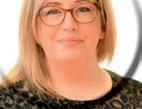




THE Canadian federal government’s decision to ban open net fish farming in British Columbia by June 2029 has been met with dismay and anger by the industry.
Many fear the decision will cost hundreds of jobs and set back the aquaculture industry in the province for years. It could all but wipe out much of Canada’s farmed salmon production.
The government said salmon aquaculture licences will be renewed for five years with stricter conditions, effective from 1 July 2024. After this date only marine or land based closed containment systems will be considered for new licences.


Fisheries Minister Diane Lebouthillier has outlined a transition to closedcontainment salmon farm operations and said she would allow aquaculture farms to renew their licences in a “responsible, realistic and achievable” way.
Grieg Seafood said that based on the announcement the company was suspending investment in BC and would await a draft transition plan to assess further action.
Grieg pointed out that the decision only


applied to British Columbia and had no implications for its operations in Newfoundland.
Tim Kennedy, CEO of the Canadian Aquaculture Industry Alliance, said the government objective was unreasonable because there was no scientific basis to the decision.
He added: “The objective is irresponsible because it threatens 5,000 highly paid and skilled jobs in coastal British Columbia (500 of these jobs held by Indigenous people) during a time of economic stagnation.”
The alliance said over 95% of Canada’s salmon production comes from salmon farms in ocean pens in British Columbia.
The BC Salmon Farmers Association has said an analysis showed the province could
lose up to CA $1.2 billion in economic activity annually if the licences are not renewed.
First Nations groups are divided on the issue, with some supporting a ban but with others calling for it to continue because they depend on it for their livelihoods.
The influential Canadian seafood website Sea West News said the ban has triggered a fierce backlash, adding it has made a mockery of pledges with the First Nations.
Sea West News added: “Denying the science of its fisheries experts that show the marine operations pose less than a minimal risk to wild stocks and bowing to the demands of activists to get their votes, the government’s decision is being described as irresponsible, unrealistic and unreasonable.
“It also makes a mockery of the Liberals’ promise to deliver science-based decisions regarding the future of salmon farming in BC and walks back on the pledge of economic reconciliation with First Nations.”
Mowi described the decision as unfortunate, saying it had been made despite its efforts to pave the way for future sustainable growth and employment.
A NEW global seafood certification system for small scale fishers and their communities is out for consultation.
Community Catch has been tailored to the needs of small scale fisheries, and is based on international standards for sustainability, labour rights and fair trade principles.
The initiative seeks to address a fundamental problem faced by smaller fishers, who can find that compliance with established certification schemes is too expensive.
Community Catch has released its draft bespoke seafood certification scheme for a 60-day public consultation, due to close on 29 August 2024.
The consultation period gives stakeholders and interested bodies the opportunity to comment on the content and relevance of the standard and evaluation process.
Comments from the consultation will be used to inform a revised draft, which will itself be opened for a further 30-day consultation period. It is expected that the scheme will officially launch on the market later this year.
Based on the FAO Code of Conduct for Responsible Fisheries and FAO Voluntary Guidelines for Securing
Sustainable Small-Scale Fisheries, the new social and environmental standard also aligns with the ISEAL Credibility Principles and the Global Sustainable Seafood Initiative (GSSI) Global Benchmarking Tool for seafood certification schemes. It also incorporates relevant aspects of the International Labour Organisation (ILO) convention on work in the fishing sector and the Ethical Trading Initiative (ETI) base code.
The standard includes all forms of fisheries and species, including multi-gear and multi-species, and it provides recognition of those that are demonstrably moving towards the standard.

Dr Andrew Hough, a director of the organisation, said: “We are very proud of what we have developed, and believe that for small-scale fisheries, it offers a cost-effective alternative to other global certification schemes. In particular, the new certification scheme will enable fishing communities to connect to markets that were previously inaccessible.”
For more information go online to communitycatch.org/consultation
PROXIMAR Seafood has pre-sold at least a third of expected annual production for this year from its new land-based salmon farm in Japan.
The company, which is putting the finishing touches to its RAS (recirculating aquaculture system) facility near Mount Fuji, had a standing biomass of 360 tonnes at the end of Q2 (June), more than tripling the 112 tonnes at the end of the first quarter.
Proximar said the first sales agreement has been reached, securing a fixed price per kilogram for a larger part of the harvested volumes for 2024.
The price achievement was in line with its expectations and benchmark, and it also reflected a price premium compared to the cost of imported Atlantic salmon from Norway.
The sales agreement is expected to cover approximately one third of the expected harvesting volumes for this year.
CEO Joachim Nielsen said in an Oslo Stock Exchange message: “We are very pleased to see the positive development in our biomass continuing through the second quarter of 2024.
“The water quality remains good which again is reflected in our growth curves. We continue to see low natural mortality.”

He added: “Our first batch is above 3.25 kg on average, and we remain on track for first harvest in September. We continue to do sample testing for quality and taste, and both internal and external feedback is very positive.”
Proximar’s targeted long-term harvest level is 5,300 tonnes (HOG) per year in Phase 1.
Left: Joachim Nielsen
EARTH Ocean Farms, the Mexican company focused on regenerative aquaculture, has a new brand identity: “Totoaba Santomar”.
This will be the consumer-facing brand for its main product, farmed totoaba (Totoaba macdonaldi).
Earth Ocean Farms (EOF) is based in Baja California, Mexico and raises totoaba, red snapper and oysters in the Sea of Cortez. Totoaba is a native Mexican species which EOF is marketing as a premium seafood product.
EOF stresses the sustainability and traceability of its fish, with a unique QR code for each individual, which certifies and provides transparency about its origin and harvest.
Pablo Konietzko, CEO of Santomar, said: “This new brand represents an important step towards generating a healthy ocean, helping to restore endemic species, and promoting economic growth in our region. Santomar is the name that defines our identity today, a wise choice, as it honours and shows the deep respect we
Above: Totoaba Santomar
have for our sea, its species, and its people.”
The brand name combines the Spanish words for “saint” and “sea”, and the company’s new slogan is “Sit mare gloria” (“glory to the sea”).
The company says its meticulous processes, ensuring absolute traceability, from the handling of broodstock to the production of juvenile totoabas, guarantee optimal conditions for their breeding, making them available 52 weeks of the year.
Santomar collaborates with research centres, government agencies, other organisations, and fishermen on conservation, reconstruction of fisheries and new aquaculture production techniques.





THE former Center for Aquaculture Technologies (CAT) subsidiary in Canada has rebranded as “Onda”. Formerly known as CATC, Onda is a contract research organisation focused on aquaculture. The new name comes from the








Latin word for “wave”. Onda will maintain alignment with its sister company CAT, and continue to be an integral part of the Cuna del Mar portfolio. While operating under separate governance and management structures, both companies say they remain focused on collaboration and delivering high-quality, industry leading service standards.
PLENARY speakers have been confirmed for the Latin American Aquaculture Congress, taking place in Medellin, Colombia this September. They are Dr Benjamin Le Frentz of the US Department of Agriculture, Nélida Rodriguez Osorio of the Universidad de la Republica in Uruguay and Marcela Salazar, Scientific Director of Benchmark Genetics in Colombia.
The Aquaculture in Latin America Congress combines LACQUA 2024, The VIII Latin American Conference On Native Fish Farming And The XI Colombian Congress On Aquaculture. It takes place over September 24-27, 2024, at the Plaza Mayor Convention Centre.
GRIEG Seafood has appointed a new regional Director of Operations for its Newfoundland business.
Elizabeth Barlow, who takes over at Grieg Seafood Newfoundland on 8 July, comes with nearly 30 years of operational and management experience in the aquaculture industry and government.
Grieg CEO Andreas Kvame said: “Elizabeth has extensive operational and management experience spanning from biology and salmon farming to governmental roles in the Province of Newfoundland and Labrador.
AUSTRALIAN salmon company Huon Aquaculture is expanding its Tasmanian farm at a cost of AUS $110 million (£78m)
The project will include a new recirculating aquaculture (RAS) system at its Whale Point facility in Tasmania.
Salmon farming has become something of a controversial issue among certain groups in Tasmania during the past year over claims that it is damaging the environment, but the investment has been widely welcomed in the state.
The project is expected to create at least 150 construction jobs and a number of extra company jobs in the Port Huon area. It should be fully operational within three years.
Huon CEO Henry Batista said the expansion would allow the company to grow larger fish on land.
This in turn would mean that fish going into the sea will be larger and would need to spend less time in open waters.
“Huon salmon already spend most of their lifecycle on land and this expansion strengthens our land-based farming capabilities,” the CEO added.
“This investment will also further improve water use at Whale Point, increasing the amount of water recycled in the RAS to 99%.”
CEO Batista added that the project would enable the company to use existing land and offshore marine sites.
GRIEG Seafood’s salmon farming operations in British Columbia were hit by a “low oxygen event” in May which affected fish health and led to a rise in sea lice levels, the company has reported.
Grieg said: “In May 2024, Grieg Seafood BC experienced a low dissolved oxygen event in Nootka Sound.This is a naturally occurring event which can affect the health and welfare of our salmon. At the same time as the low oxygen event, harmful plankton in the area also impacted some of our fish.
“Due to these adverse environmental conditions and in order to preserve the welfare of our salmon, we were unable to handle and perform sea lice treatments during this time, resulting in higher-than-normal sea lice counts for a short period of time.”
The company stressed that its operations have throughout the

event maintained compliance with both DFO’s regulations and third-party certifier Aquaculture Standards Council (ASC) through the use of its Integrated Pest Management Strategy.
The company added: “We were also able to draw upon the broader industry agreement to share mitigation resources, utilising mechanical and freshwater treatment vessels to treat multiple farms in the area as quickly as possible.”
AQUABOUNTY Technologies has finally sold its land-based farm in Albany, Indiana after putting it on the market earlier this year.
The US $9.5m (£7.5m) cash deal also includes some equipment from the company’s Ohio site.
The buyer is the Wisconsin company Superior Fresh which, unusually, combines salmon farming with growing organic leafy greens such as lettuce.
AquaBounty announced in February that it was putting the Indiana farm up for sale, to raise capital, describing the move as a difficult decision.
In May the company reported a 2024 first quarter net loss of US $11.2m (£8.8m) against $6.5m (£5.1m) in Q1 2023. Costs for AquaBounty’s farm in

Pioneer, Ohio – currently under construction – have increased dramatically, adding to the company’s need for capital.
It is thought that part of the proceeds will be used to reduce a long term loan. The sale is expected to be completed over the next few weeks.
AquaBounty has developed a strain of genetically modified (GM) Atlantic salmon, under the brand name AquAdvantage.
In contrast, Superior Fresh is clear that its salmon are non-GM and the company does not even allow GM ingredients in its feed.
The company’s salmon are grown on land using freshwater tanks in what is an almost closed system, with 99.9% of water treated and recycled within the facility.
The fish waste is put to good use through a nutrient recycling process. Using a microbial biome that mineralises the waste and releases its nutrients, the waste is repurposed and is used as fertiliser for vegetables.
THE first 2024 anchovy season in Peru’s north-central fishing zone ended in June with more than 98% of the quota fulfilled, the marine ingredients organisation IFFO reports.
IFFO said this was a very positive sign for the fishing and feed sectors, considering that Peru accounts for around one-fifth of global fishmeal supply in an average year. A second fishing season will take place later in the year, based on independently set quotas taking into account the size of the biomass.
In Peru’s southern fishing zone, the season ended with slightly more than 10% of the first season’s quota landed. A new quota has been announced for the second



season, beginning on 1 July 2024.
In the first five months of 2024, cumulative fishmeal production in the countries analysed in IFFO’s report (Peru, Chile, Denmark / Norway, Iceland / North Atlantic, USA, African countries, Spain) increased by 40% compared to the same period in 2023. The significant year-on-year increase of the Peruvian supply was the main factor behind such a positive trend. When it comes to fish oil, cumulative output through May 2024 was approximately 10.8% higher year-over-year, again driven by the increased supply from Peru. All other regions analysed in this report showed a decline in their supplies of fish oil in comparison to the first months of the year 2023. Aquafeed production in the first half of the year 2024 remains below the amount reported during the same period in 2023. IFFO expects that reduced aquaculture activity in the first five months of 2024 might further weaken the demand for feed ingredients.
















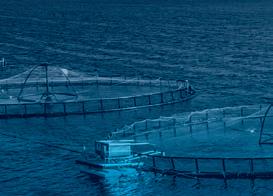






























A GROUP of representatives from award-winning fish and chip shops in the UK have been visiting Norway on a study trip, courtesy of the Norwegian Seafood Council.
The 2024 National Fish and Chip Award winners were accompanied by the Norwegian Institute of Marine Research and the Norwegian Directorate of Fisheries, and several media representatives from both the UK and Norway.
Also on the trip were representatives
of Winners were also joined by the National Federation of Fish Friers (NFFF), organisers of the National Fish & Chip Awards.
The three-day trip took in Ålesund, including a voyage on board one of Norway’s largest Frozen at Sea vessels, Østerfjord and a visit to Ellingsøy, the northernmost island in Ålesund, which gave the winners an opportunity to visit Brødrene Sperre, one of Norway’s leading producers of frozen at sea whitefish.
Victoria Braathen, Norwegian Seafood Council UK Director, said: “It’s been an absolute pleasure and truly inspiring to host the winners of the 2024 National Fish and Chip Awards on this educational study trip to Norway for knowledge sharing and networking.
“It’s of great value to us to celebrate the successes of this incredible sector and we believe that by offering operators a chance to experience first-hand just where their fish comes from, and the lengths the Norwegian seafood industry is going to ensure the future of sustainable fishing, we’re developing a joint understanding of the role of sustainable seafood in fish & chips and building partnerships for the future.”
“We’re developing a joint understanding of the role of sustainable seafood ”
A GROUP representing British consumers is pressing ahead with a claim for compensation from Norwegian salmon farmers over alleged price fixing – and it has put a figure on it.
The action, filed at the specialist UK Competition Appeal Tribunal, seeks redress of as much as £382m in compensation for consumers who bought certain farmed Atlantic salmon products from UK grocery retailers between October 2015 and May 2019. Some of the biggest names in salmon farming are being sued, including Mowi, SalMar, Lerøy, Scottish Sea Farms and Grieg.
and at various meetings and “working dinners”. It is claimed that this was cartel behaviour and a breach of competition laws.

The claim was lodged by Waterside Class Ltd, a company established to pursue the claim. It said the defendants unlawfully colluded to increase global prices for farmed Atlantic salmon, leading to increases of up to 20% in the prices paid by consumers.
According to Waterside, the six defendants worked together to increase the price of farmed Atlantic salmon through various methods, according to the claim. The defendants are accused of manipulating benchmark prices for Norwegian Atlantic salmon by using related entities to purchase salmon at inflated prices, and unlawfully exchanging commercially sensitive information about the price and volumes of sales of farmed Atlantic salmon. Senior executives at rival companies allegedly planned to rig prices via email correspondence,
According to the claim, this unlawful overcharging of consumers continued until 31 May 2019, shortly after the European Commission raided the offices of various salmon farmers as part of a major investigation into price-fixing in February 2019. In January 2024, the Commission expressed its preliminary view that various Norwegian companies had indeed colluded to fix short-term farmed Atlantic salmon prices in Europe between 2011 and 2019.
Waterside’s sole director and representative, Anne Heal, was previously the Director of Regulatory Affairs at BT. She said: “By bringing this collective action, I want to give a voice to affected consumers across the UK, and see them properly compensated for their losses. I also want to bring attention to market practices which harm consumers, and hold the defendant companies to account for their alleged wrongdoing.”
Meanwhile, UK retailers themselves are also pressing a claim for compensation.
Price fixing allegations in the United States and Canada were settled out of court last year.
The companies concerned have strenuously denied allegations of price fixing in both the EU and North America.
THE global alternative investment platform Slate Asset Management has acquired the World Seafood Center in Oslo for a figure close to £100m.
The Center is a state of the art new-build refrigeration and distribution facility, based at a logistics hub near Oslo’s main airport. The purchase figure is NOK 1.3bn (£95.4m).
Slate said the acquisition adds to its portfolio of essential real estate assets in Europe.
Explaining the reason for its move, the company added that seafood is the second largest industry in Norway with a growing export volume benefitting from strong demographic tailwinds, that are driving high demand in the region for industrial space for the seafood industry.
The World Seafood Center is a 55,000 square metre facility strategically located in the rapidly developing Gardermoen region within Oslo Airport City with immediate access to main transport networks to Europe and the overseas markets in Asia and America. Salmon would almost certainly be the principal species going through the facility, and one of the Center’s largest tenants is the salmon giant Mowi.
The property is let to some of the largest seafood tenants in the world
MOWI, the world’s largest supplier of farm-raised salmon, has started produc�on at its new combined slaughterhouse and processing plant at Jøsnøya in Norway’s Hitra region. It has a produc�on capacity of 100,000 metric tons – enough to process around a third of Mowi’s produc�on in Norway – and it replaces Mowi’s factory at Ulvan.
The new plant consists of a produc�on building with administra�on and technical wing, a seawater sta�on, cleaning and by-product building and a floa�ng pier.
The new processing plant at Hitra will receive fish from sea harvest vessels only. Mowi Norway is now using four sea harvest vessels to supply its
processing plants, and the South Region in Norway is already fully based on this technology.
Building on this experience, Mowi intends to increase the capacity of these vessels and, in the long term, subs�tute wellboat transport with sea harvest vessels which represent an improvement in fish welfare.
Speaking about the new facility at the groundbreaking back in in 2022, Olaf Skjærvik, director of Mowi Mid Region, described the new plant as: “…a state-of-theart factory built for the future.”
Code IT, already a supplier to Mowi in 16 countries, provided key so�ware for the new plant from its CodeIT Enterprise™ range, including labelling and tracking modules, scanner systems and weighing systems.
under long lease terms indexed to inflation, which are expected to provide stable and resilient cash flows.
The facility derives 100% of its energy supply from green and renewable sources and is equipped with robotics and artificial intelligence technologies, which further contribute to its high levels of operating and energy efficiency.
“We are pleased to be increasing our exposure to European essential real estate with the acquisition of this premier cold storage and distribution facility,” said Sven Vollenbruch, Managing Director at Slate.
He added: “The World Seafood Center has established itself as a critical part of the food supply chain globally, providing consumers across Europe, America, and Asia with access to high-quality Norwegian seafood.
“As global demand for sustainable seafood continues to grow, we look forward to working together with the leading tenants at the World Seafood Center to further enhance the quality, efficiency, and resiliency of this facility, ensuring it remains a major seafood export hub for years to come.”
KLAUS Nielsen is stepping down as CEO of Danish seafood processor Espersen after nearly 25 years in the role. His successor is Tino Bendix, who will take over as CEO both of Espersen and its parent company, INSEPA, on 5 August.
Espersen’s headquarters are in Denmark but also runs the former UK operation of Iceland Seafood International, based in Grimsby, which it acquired in August last year.
In total, Nielsen has been at the company for 37 years.
Tino Bendix is currently CEO of Kruuse, a supplier of veterinary equipment, and has experience at management positions in a number of companies across the food and fast-moving consumer goods sectors.
Paying tribute to the outgoing Chief Executive, Chair of the Board Flemming Enevoldsen said: “I have cherished our close cooperation which has been strengthened during recent years of international turmoil including the pandemic, the war in Ukraine, our exit from Russia and the very volatile inflationary business environment.”
He added: “I am pleased to welcome Tino Bendix as our new CEO. Tino was selected amongst a strong field of candidates in a thorough process, and I am confident that his personality, international background, and strong food industry experience compile the right fit for Espersen.”

Consolidation in the salmon sector is based on hard economic realities, argues
THE salmon sector in Norway appears to be embarking on a journey that Scottish producers took many years ago –the journey of evolving from being an industry of many producers to just a handful.
I have heard many explanations of what happened, including claims that the Scottish industry was acquired by Norwegian owners to avoid the supposed constraints of Norwegian regulation. In fact, what happened to the industry was entirely predictable.
At the end of the 1980s, Highlands & Islands Enterprise set out a view of how they perceived a future Scottish aquaculture sector might look. They believed that the sector would consist of producers of a wide range of different fish and shellfish species. However, this model never materialised, and instead it was the salmon industry that dominated the sector for many years to come. Why salmon led the field was simply down to its similarity to the poultry sector.
Chicken used to be expensive and a real treat. In post-war Britain, investment was made in food production and consequently chicken became much more widely available to consumers.
The problem for producers was that there was only a small part of the market prepared to pay a high price for this “special treat”. If the market was to expand then the price had to reflect the higher demand.
I always use the analogy of Rolls Royce cars and the question that if they were produced in the same numbers as the Ford Fiesta, would consumers still be prepared to pay £330,000? The answer is no – Ford Fiestas used to sell in the large volumes they did because they were priced at £19,000.
This is what happened to chicken. The producers were growing more and more chickens and such large scale production meant that the costs decreased, along with the profit margins. The
larger farms continued to be profitable, however, because whilst the margin on each bird was low, they were producing many more chickens. BBC’s Countryfile has just discussed this issue, pointing out that 80% of UK pig production is in the hands of 30 businesses, whilst 75% of UK chicken production is accounted for by just three companies.
The same process applies to salmon farming. Overnight, in the late 1980s, the salmon industry evolved from a low volume industry to one of high volumes. This change also meant that high margins became much lower. The industry faced a choice: cut back production and recreate salmon as a luxury treat, or expand production, making salmon an everyday food choice. We know which route the industry chose.
The problem for farmers was that the loss of margin needed to be addressed, and this was best achieved by cutting costs. Feed was one of the highest costs for the farmer, and to get a more favourable price it needed to be bought in larger quantities, to benefit from economies of scale. Bigger businesses could cut costs more easily than smaller ones. Even the smallest of businesses can compete, however, if they can become highly specialised and find a way charge a premium price for their product.
This is what happened in Scotland in the late 1980s and early 1990s. The 180 or so farms that were pioneers in the early days of the sector realised that the days of charging high prices for their fish were numbered, and that competing in future would be extremely challenging.
Whilst some promote the narrative that foreign owners came looking for farms to buy, the reality was that it was Scottish owners who were keen to sell. Over the subsequent years, the ownership of the


Scottish industry changed, with fewer but much larger businesses. Today there are just six finfish farming companies operating in Scotland and whilst the critics complain that most owners come from overseas, the reality was that the industry was never really all in Scottish ownership. The first pioneers were Anglo-Dutch.
The pattern of consolidation seen in the chicken sector did not just focus on production. There was also a move towards processing the finished product for the retail sector. The salmon industry has taken a long time to follow this example but companies like Mowi now produce both branded and own label consumer products.
The question now is: why is such
consolidation now on the agenda in Norway? The answer is that back in 1972, Parliament proposed that it was undesirable to have large facilities that affect the character of the sector. Salmon farming was seen as an extension of fishing and agriculture and initially ownership was restricted to a single licence. Today, there are almost 100 farming companies in Norway of which 17 account for 80% of the volume.
Can this structure still survive the pressure to change? Some of the smaller companies cooperate to obtain the economies of scale but these owners face competition, not only from other Norwegian producers but also in an international marketplace.
According to Dag Sletmo of DNB Seafood, it is those farmers that are stuck in the middle between the smallest and largest operators who are struggling with lower margins and profits. Thus, the much slower pace of change experienced in Norway may speed up so that Norwegian production looks more like that of Scotland – or Chile, where just 11 companies account for 80% of production.
A consolidated industry means that companies are better served to maintain much tighter control over their costs and thus ensure that they can supply a wide range of diversified products across the retail sector every day of the year. Salmon is such a versatile protein that the opportunities are endless, but these could never be met if the industry structure in Scotland had remained as 180 separate small businesses.


Salmon Scotland chief executive Tavish Scott highlights the work being done to protect Scotland’s iconic wild salmon
CAPTAIN James T Kirk: it is a name from one’s youth, depending on age.
Or if one is the same age as my kids, a baffled look along the lines of “gosh Dad, you are old.”
In the classic sci-fi series Star Trek, Kirk promised to boldly go where no man has gone before. The actor William Shatner, a Canadian, has just done that.
In response to the Canadian federal government’s appalling decision to ban salmon farming sea pens in British Columbia, Shatner has released a foul-mouthed rant on social media attacking, in Anglo-Saxon terms, the salmon sector – and, by definition, the thousands of Canadians who work in it.
Unfortunately, the Trudeau government has taken a decision based on politics, not science or jobs.
The Canadian Liberals currently have MPs in Vancouver and other affluent areas in BC – but the party is way behind in the opinion polls and an election is looming.
As with all political parties in trouble (see the Conservatives in the UK today or Labour after the 2015 defeat), they are appealing to their political base. But this political decision risks jobs and livelihoods and will hurt coastal communities the most.
Trudeau’s Liberals have encouraged rich, fashionable antisalmon farming activists to use recognisable faces to attack the sector in this foul-mouthed manner.
Of course, Shatner is quite entitled to make his point.
He is extremely rich and doesn’t want for anything in life, and people will make up their own mind on his motivations.
But what is unacceptable is the language used. People going to work in any walk of life do not deserve abuse whether they be a former Hollywood A-lister or a hardworking Canadian fish farmer.
Yet Shatner and co have called open house on the men and women of the BC sector.
I hope that normal Canadians will see this for what it is: rich egos dictating what the working man or women should think.
What this brings home back here in Scotland is the need for our sector to work hand and glove with local communities.
Our member companies run fantastic local initiatives to support the communities where they are based, recognising the importance of being good neighbours.
And as a sector, we arrange initiatives such as Salmon Scotland’s Wild Fisheries Fund.
Almost £1400,000 has been granted to organisations across the country this year from the fund to help save iconic wild salmon and sea trout.
The fund is part of a £1.5 million
People going to work in any walk of life do not deserve abuse

commitment from Scotland’s salmon farmers to support the conservation, restoration, and sustainable management of wild fish numbers.

Galloway Fisheries Trust has received £22,700 to tackle high acidity levels threatening fish numbers on the River Bladnoch; Tighnabruaich-based Otter Ferry Seafish has been awarded £49,404 to work with Argyll wild fisheries experts to develop a gene bank to boost threatened salmon populations; and community landowners Urras Oighreachd Chàrlabhaigh (Carloway Estate Trust) and Uig Lodge Lettings have each received grants.
Scotland’s salmon farmers are determined to find solutions, engaging constructively with the wild fish sector and taking meaningful action to save wild salmon.



We actively contribute to reversing this decline by supporting community-led projects to restore our rivers and lochs, making a positive global impact.
I doubt Shatner is aware of this vital work which is taking place.
But we will certainly make sure that MSPs are aware of it when the Scottish Parliament Rural Affairs and Islands committee meets with the sector following the summer recess.
To date, the committee has heard from a number of witnesses, including activist groups determined to spread misinformation and shut us down.
I look forward to providing factual information to MSPs in the autumn.
One of the issues that has repeatedly come up has been the issue of declining wild salmon numbers.
MSP Elena Whitham asked if environment regulator SEPA had “identified any evidence of significant harm to wild salmon from farmed salmon sites”.
I was pleased that Lin Bunten, Chief Operating Officer for Regulation, Business and Environment with SEPA, responded to

the committee: “I am not aware of a direct link between farmed salmon and wild salmon per se.”
The latest data from the Scottish Government shows that catches of wild salmon are the lowest ever since records began in 1952.
But since 2010, the decline of wild salmon catches from rivers on Scotland’s east coast – hundreds of miles from the nearest salmon farm – is at exactly the same rate as the declines from rivers within the salmon farming heartland.
If salmon farms were responsible for the decline in wild fish numbers, then surely the rate of decline would be seen to a much greater extent on the west coast?
The fact that the figures show that isn’t the case is an inconvenient truth for the anti-salmon activists here at home, and the celebrities in Canada.
When I think back to the adventures of Captain Kirk, boldly going where no one had gone before, I recall just how many intergalactic scrapes the crew of the Starship Enterprise got into.
Leadership was required, yes, but vitally so was teamwork and collaboration.
It is collaboration that is key to reversing the decline in wild salmon numbers, and Shatner and his friends would do well to remember that.
Tavish Scott is Chief Executive, Salmon Scotland.






ILOVE oysters, and really miss having oyster farmers for neighbours! In my local fishmongers, No 3 oysters are sold for £1.50 each, making them an expensive treat. In restaurants, they are even more expensive because someone else is doing the work of opening them. I recently forked out more than £40 for half a dozen with a glass of champagne, and whilst they were delicious, I couldn’t help thinking about the several years of nurturing, back-breaking bag turning and grading the oyster farmer had gone through to receive a fraction of the final selling price.
On a recent trip to France, I was able to buy a box of 24 oysters for less than €18 (£15.30) – which is less than half the price in the UK, and far more affordable! On another occasion, I enjoyed three oysters and a glass of white wine for just €6 (£5.10).
However, the oyster industries on each side of the English Channel are vastly different in scale. The UK is very much the poor relation when it comes to shellfish aquaculture, yet with a positive political and regulatory environment, it could achieve far greater things.
Production in the EU was just under 98,000 tonnes in 2020, and France accounted for 80,796 tonnes of this. The UK, by comparison, produces around 3,000 tonnes per year.
According to EUMOFA, the European Market Observatory for Fisheries and Aquaculture, French production was stable between 2011 and 2020, apart from a sharp decrease in 2015 due to significant mortalities.
of oysters in 2020. According to France AgriMer, the national body promoting seafood and agricultural products, home consumption of oysters in that year was 22,925 tonnes, leaving much to be enjoyed in restaurants and cafés. Christmas is the most popular time to eat oysters, and more are eaten in December than at any other time of the year.
Large-scale retail and outdoor markets accounted for 80% of the sales volume in 2020 and oyster producers travel for many


France is the main intra-EU oyster exporter, selling 10,035 tonnes in 2020, worth more than €66.5 million (£56.5 million). It is also the main importer from its neighbours, bringing in 6,541 tonnes worth €36 million (£30.6 million) that year.
To match its prowess in production, France boasts the largest apparent consumption, with consumers enjoying 76,000 tonnes



I tried to tell her that these were the tastiest bits!






hours to sell their product inland at local markets. I enjoyed chatting to several producers in the markets about the trials and tribulations of their industry.
Oyster production
Oyster spat in France may be produced in a hatchery or collected from the wild, where the larvae settle naturally on submerged chalked tiles or plastic discs threaded onto poles. Hatcheries allow for more control over the quality and characteristics of oyster spat and produce single seed, whereas wild spat is generally clumped together and needs to be separated before ongrowing in bag and trestle or floating systems.
The main ongrowing areas are Normandy, Brittany, Loire-Atlantique including the Vendée, Charente-Maritime, Arcachon and the Mediterranean.
The Arcachon Basin provides much of the natural spat used throughout the oyster farming regions.
Aficionados may enjoy oysters that have been fattened in claires (ponds) before sale. These are variously classed as fine de claire, spéciale de claire or spéciale pousse en claire, depending on the time spent in the water, which can be up to eight months.
Fine de claire verte oysters are fattened in ponds containing special green algae (Haslea ostrearia), which produces characteristic green gills. I enjoyed a plate of these in La Trinité a few weeks ago and watched as an English lady on the adjacent table carefully cut away all of the green parts. I tried to tell her that these were the tastiest bits, but she replied that the look of them had put her off!
Marennes-Oléron oysters benefit from PGI (protected geographical indication) status, while Cancale oysters from Normandy are on the UNESCO List of Intangible Cultural Heritage.
The little town of Bélon in Brittany is still famous for its flat oysters, but producers there also grow plenty of cupped oysters. To protect their reputation and also to avoid recent issues with mortalities, the oyster farmers of Marennes-Oléron decided this year to stop refining their oysters in the claires between 1 June and 31 August. The decision was motivated by global warming, which has been making the waters of the claires too hot in summer and has affected the quality of the oysters. To compensate farmers and to maintain interest from consumers, a new brand called “La Baigneuse” (the bather) was launched.
Wild oysters have been harvested in France since the Palaeolithic era, and shell mounds discovered by archaeologists, which evidence significant oyster consumption, date back several thousand years.
Between the 1st and 5th centuries, the Bélon flat oyster was harvested for transport to Rome, where it was known as “callibléphares”, which translates as “beautiful eyelids”. Historians have found no evidence that the flat oyster was cultivated during this time, though. It
was not until the 17th century that oyster farming emerged in France.
Initially, oyster seed was collected from rocks or from natural beds, then raised in reservoirs in the salt marshes of the Atlantic coast. Later, specially constructed basins began to emerge in the Marennes-Oléron region.
During the 18th century, salt lost its monetary role in society, which freed up large areas of salt marsh along the Atlantic coast for oyster farming, which started to proliferate. However, the continued reliance on wild oyster seed led to devastation of the natural populations. By the 1850s, exploitation of oyster beds was restricted and in some areas, prohibited.
Plato once wrote: “Our need will be the real creator.” This has roughly been translated as the English saying, “necessity is the mother of invention”. And so it was in France, where the sudden unavailability of oyster seed led to the idea of collecting it on submerged stakes, and the resurrection of the industry.
Around the same time, people living in the Arcachon basin began to import Portuguese cupped oysters (Crassostrea angulata), and this species was found to grow far more rapidly than the flat oyster. So much so, that by the early 1900s, along the Atlantic coast, two-thirds of production had been turned over to Portuguese oysters.
Flat oysters went into decline around this time, and heavy losses pushed them to the brink of extinction. As a result, the Portuguese oyster was introduced to all areas, and made up 80% of production volume by the 1960s. The rise of this oyster was followed by a devastating fall in production the 1970s, when disease wiped out the entire population. The Japanese or Pacific oyster Magallana gigas (formerly Crassostrea gigas) was introduced to restart the French industry and is its mainstay to this day.

The diving industry is backing calls to reinstate the hyperbaric chamber at Dunstaffnage, as Sandy Neil reports
MORE than 25,000 people have backed an online petition calling for the reinstatement of a hyperbaric chamber on Scotland’s west coast.
This medical facility, which allows the patient to breathe in oxygen at high pressure, is a key treatment for divers suffering from decompression sickness – sometimes known as “the bends”.
In January 2024, NHS Grampian suspended the chamber’s life-saving services near Oban with immediate effect. Then, in April, it withdrew future funding. The clinical support that was available had included five doctors trained in diving and hyperbaric medicine who were on call 24/7.
As soon as news broke of NHS funding being pulled from the clinical support for sick divers at the Dunstaffnage facility, letters and messages of support flooded in, according to Dr Martin Sayer, Chief Executive of Tritonia, the subsea technology company that runs the chamber.



As the only NHS registered facility of its kind on Scotland’s west coast, the chamber is relied upon by commercial divers servicing more than 100 local businesses with a 20-mile radius of Oban, from aquaculture, fisheries and ferries, to shipping, military, police and tourism.
Under the Diving at Work Regulations, each is subject to an Approved Code of Good Practice requirement that the nearest recompression chamber should, under no circumstances, “…be more than six hours travelling distance from the dive site.”
The ongoing suspension of the chamber, however, and decision to withdraw funding, means that any diver experiencing difficulties will be transferred to the next nearest facility in Aberdeen – but not without serious risk to life, argues Dr Sayer.
He says: “As with any emergency, time is of the essence. Even a minor delay to the right treatment can have a major impact on recovery and, in serious cases, survival.
A HYPERBARIC chamber is a sealed chamber where the air pressure is increased to higher than normal atmospheric pressure. It is used in hyperbaric oxygen therapy (HBOT) for medical treatments.
The primary purpose is to allow patients to breathe pure oxygen at high pressure. This increases the amount of oxygen dissolved in the blood and enhances oxygen delivery to tissues throughout the body.
As well as decompression sickness, hyperbaric chambers are used to treat a range of conditions including carbon monoxide poisoning and severe infections.
“To suspend such a critical service without notice or explanation is nothing short of reckless, demonstrating a complete lack of understanding as to the necessity of swift, specialist medical attention.”
He adds: “It’s not just the lives of commercial divers that have been put at risk by the decision but recreational divers too.”
The petition, launched on April 3, appeals: “Since 1972, the recompression chamber at Dunstaffnage, near Oban, has treated over 400 divers for decompression illness… and is the only NHS registered chamber on the entire west coast of Scotland.
“As of April 1st 2024, NHS Grampian have withdrawn funding and support of this vital infrastructure. This facility provides vital support for all diving operations on the west coast of Scotland and the islands.
“Billions of pounds worth of industry rely on divers and diving, including aquaculture, fisheries, ferries, shipping, military, police, and tourism. Over 100 businesses within a 20 mile radius nominate the Oban chamber as their standby for diving operations. The chamber provides 4 full time jobs, over 20 part time roles, and supports 5 local GPs, all highly trained in diving medicine. Increased time to treatment could have health implications and would add additional burden for local ambulances.”
The Change.org petition attracted 1,300 signatures in just 24 hours of it being launched. By June 27, it had reached over 26,000 signatures.
Oban-based commercial diver Richard Ross says losing the chamber would present a danger to life. “It comes down to time,” he adds. “The risk factor massively increases the longer a diver with decompression illness is not treated. The sooner they get treated, the better. It could mean the difference between being able to walk or being in a wheelchair if it attacks the nervous system. Worst case scenario, it could end in death.
“Aberdeen is about four hours away by road and there could be incidents along the way that could lead to a longer delay. You could be one or two hours away from land even before getting a diver to the shore.







“There’s a massive range of complications to consider if the nearest chamber is in Aberdeen. It could also make a job is unviable due to safety concerns. It’s a worry.”
”As with any emergency, time is of the essence
Although Ross has not needed the help of the hyperbaric chamber himself, he knows people who have. One of his diver friends had to be in and out three times for a few hours each session.
“I don’t know what would’ve happened if he’d not been able to get to Dunstaffnage,” Ross says.
“Recreational divers would be in danger too.
I hear what comes over the VHF radio on the boat. There’s a lot of wrecks here that people want to explore, so they go deeper. They don’t always have the experience,” adds Ross, who also flags up another safety concern.
According to Health & Safety Executive regulations, a dive boat must carry enough oxygen to get a diver in need to the nearest chamber. Ross says: “That poses another risk, as it’s a dangerous gas. Just think how much more would need to be carried if the nearest chamber was in Aberdeen.”
Mike Morgan from Puffin Dive Centre at Gallanach, Oban says the NHS had “not fully grasped” the importance of Oban having the extremely useful and valuable resource.
“The sea around the town is used commercially and extensively by owners and operators of small businesses and companies. It is home to many of them, who take comfort in knowing the hyperbaric chamber is on their doorstep, as well as there for the huge numbers of divers who want to visit some of the best waters in the UK,” he adds.
Although the Puffin Dive Centre has its own recompression chamber, it is used mainly for training commercial divers.
The protocol is for injured or ill divers to be given oxygen first, taken to a safe haven


and then transported to the nearest NHS emergency rooms to be
and then transported to the nearest NHS emergency rooms to be checked by a specialist dive doctor who will make the correct diagnosis for onward treatment – including if they need hyperbaric chamber treatment.
Morgan adds: “Nine out of 10 times if that’s what’s needed from Oban, they would go to Dunstaffnage. The proximity of the chamber to the patient is important. It’s the same as having an A&E department close by. If that help is further away, it doesn’t necessarily make the situation worse but it does not guarantee it getting better. I’m extremely concerned. The loss of it is not easy to bear.”
In an open letter of support the founder and director of Vectis Expeditions, Andrew Hunt, wrote: “Not having a chamber there makes logistics significantly harder and is causing me to have to think twice about whether I should base some of my expeditions out of Oban or shift location.
“The Sound of Mull is one of the most popular locations for scuba diving in Scotland, second only to Scapa Flow in Orkney. Orkney has a recompression facility. The Sound of Mull doesn’t at present. I cannot therefore see the logic of closing the recompression facility.”
A spokesperson for NHS Grampian says: “We have carried out a site visit at the facility in Oban and we are now compiling the results of that visit. They will be shared with the team there when ready. In the meantime, the national hyperbaric service continues to operate from a Category 2 chamber in Orkney and the main Category 1 chamber in Aberdeen.”
Dr Sayer says the need for resolution of the matter is pressing: “We need to be told the reasons for the suspension, we need to be told what changes are required to lift that suspension and we need NHS Grampian to re-think its decision. With lives at risk, and with no response from the health board itself, we’re now calling for the matter to be escalated to a parliamentary debate.”



The RSPCA’s own President says it should drop its farming certification scheme, as Sandy Neil reports
THE campaign group Animal Rising is calling on the RSPCA to drop its ethical food labelling scheme, RSPCA Assured, following what it calls “the biggest scandal in RSPCA history”: a report cataloguing “catastrophic failures across 45 farms assured by the charity”.
Chris Packham, the RSPCA President, then urged the charity to suspend its RSPCA Assured scheme. Will it? Do retailers and consumers still trust it? What could take its place?
Amidst “an utter scandal” for the RSPCA, on 9 June Animal Rising released covert footage from over 40 UK farms which the charity’s animal welfare scheme assured as “high welfare”.
The report alleges: “We have found pigs lying dead in the middle of pen aisles. Chicks dead from dehydration and starvation. Salmon and trout with eyes and body parts missing. Laying hens having lost their feathers from distress. Sheds holding up to 64,000 chickens at a time.
“Publicly, the RSPCA claims to be against intensive farming. Yet they continue to put
their stamp of approval on these farming methods through their assurance scheme.”
Rose Patterson, Animal Rising Co-Director said: “This investigation has blown the lid off the RSPCA’s dirty secret; it is happy to rubber stamp cruelty on factory farms and industrial animal abuse. Some of the scenes we’ve seen in the sheds endorsed by the RSPCA are beyond barbaric.
“The world’s oldest and most respected animal charity has clearly lost its way. The work they do for cats, dogs, and other
animals is evidently not making its way to others like chickens and pigs. As the charity nears its 200th birthday it has a choice to make; will it step up, protect animals, and drop the Assured Scheme?”
The RSPCA’s 200th birthday weekend was overshadowed by controversy as 100 protestors gathered at the RSPCA HQ in Horsham to voice their opposition to the RSPCA Assured food labelling scheme.
The RSPCA President, Chris Packham, called the footage “utterly indefensible”. The BBC Springwatch presenter told The Times: “I cannot sleep easily as the president of the RSPCA knowing that those pigs are out there in the dark, those chickens are in those sheds and those salmon are swimming around with no eyes.”
He suggested that customers who are buying meat and fish under the RSPCA banner at supermarkets are being misled. “I know you are going to ask me whether [these RSPCA Assured schemes] are deliberately misleading or defrauding the public because they come with a brand which implies that there is a standard of welfare that the public would expect,” he said. “What we’ve seen in

that footage is not a standard of welfare that any member of the public would accept. It’s not acceptable.”
A catalyst for change?
In response, an RSPCA spokesperson told us: “We are proud to have Chris Packham, a passionate campaigner for animals, as our president and, while we don’t always agree on everything, we share his desire to create a better world for all animals. The RSPCA has been working to improve the lives of farmed animals for 200 years but we know there is still more to do.
“Salmon farming is an industry that involves billions of sentient individual fish and the RSPCA and RSPCA Assured are deeply concerned about the many challenges it faces. We are working hard with RSPCA Assured members, the salmon industry, and other experts to find ways to address these challenges as we move forward.
“Any concerns about welfare on RSPCA Assured farms are taken extremely seriously, and RSPCA Assured is acting swiftly to look into these allegations. After receiving the footage, RSPCA Assured launched an immediate, urgent investigation.
“RSPCA Assured’s specially trained animal welfare assessors have already visited the vast majority of the farms and have been able to verify some are not members of the RSPCA Assured scheme. Visiting the farms is just one stage of our investigation process and our enquiries are ongoing. If we find any evidence to suggest systemic issues, we will carry out a review to ensure the integrity of the scheme.
“RSPCA higher welfare standards have been independently proven to make lives better for millions of animals every year. It means salmon have compulsory veterinary health welfare plans, and stocking density is half that seen in America.
“Every member of the RSPCA Assured scheme, which is non-profit and the UK’s only animal-welfare focussed assurance scheme, receives an annual assessment by highly-trained specialist assessors and may be subject to additional spot checks. Last year less than 1% of members had breaches significant enough to warrant suspension or withdrawal from the scheme.
“While the majority of people (94%) still choose to consume animal products, it is the right thing for us to work to improve the lives of animals on farms now. There is currently no specific legal protection for salmon, trout, turkeys, dairy cattle, beef cattle and sheep, and without our standards, many millions of farm animals would live worse lives. If we stepped back from RSPCA Assured, we risk leaving millions of farmed animals with even less protection.”
On the salmon sector, the charity said:
I cannot sleep easily as the president of the RSPCA


“Salmon producers have to meet over 700 species specific welfare standards, which are far above the minimum legal standards, to qualify for RSPCA Assured membership. The standards have been a catalyst for change throughout the entire salmon industry with most farms now adopting these standards.
“We made veterinary health and welfare plans compulsory and the rest of the industry has followed.
Our stocking density was always set at 15kg/m3. This has now encouraged much of the industry to follow suit by lowering their stocking densities. We introduced a ‘15 second rule’ which means fish can only be removed from water for as short a period as possible during any handling procedures such as grading and not removed for more than 15 seconds.
“We introduced water quality requirements designed specifically to help promote good skeletal growth. In 2010 we wrote the first set of guidelines to help ensure the welfare of cleaner fish used to help control sea lice – the only standards for cleaner fish that exist in any assurance scheme. We have also improved handling procedures, such as grading, the transport of fish using wellboats and slaughter standards by eliminating manual slaughter methods.
“This year, in 2024, the new salmon standards made CCTV mandatory for the whole slaughter process and prohibited asphyxiation and carbon dioxide gassing (and other inhumane methods) as methods of slaughter.
“In addition to this, the new standards introduced over 80 new cleaner fish welfare standards as well as requirements for regular welfare outcomes assessments to be conducted. The new welfare standards also featured standards that are the first of their kind in any assurance scheme and made significant changes to the administration of non-medicinal treatments, such prohibiting fish undergoing more than one non-medicinal treatment in a 28 day period, unless advised by a veterinarian.
“If it wasn’t for the RSPCA choosing to work with the salmon farming industry these, and many other significant welfare improvements, would never have been made.”
Salmon Scotland said it was happy to contribute to the RSPCA’s recently revised standards which update existing requirements and add new ones which reflect modern salmon farming best practice.
Virtually all Scottish salmon farms are independently certified by RSPCA Assured, which requires stocking densities no greater than 98.5% water to 1.5% fish when the fully grown, it said.
Are major UK supermarkets standing by RSPCA Assured?
Andrew Opie, Director of Food & Sustainability at the British Retail Consortium, told us: “All major UK food retailers take their responsibilities to animal welfare very seriously and ensure it is a key part of the production standards for all the meat they sell. RSPCA is one of the standards used by British supermarkets and grocers as part of their commitment to be global leaders in animal welfare.”





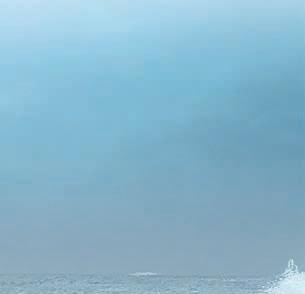



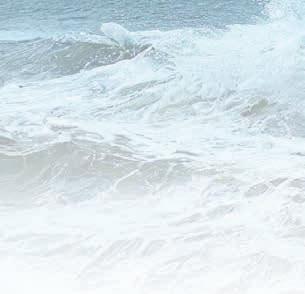


Iceland has joined the list of countries looking at whether fish farming could expand into more challenging ocean locations, as Vince McDonagh reports
ICELAND has become the latest major seafood country to explore the possibilities of offshore fish farming.
A decade ago it was barely into aquaculture at all, but development is moving at such a pace that Iceland is now looking further into the future.
While a number of RAS (recirculating aquaculture system) farms are either under construction or being planned, most salmon farming is currently carried out in coastal fjords and this has attracted a lot of opposition, especially from sport fishing groups.
Offshore farming is also seen as an answer to that issue, although the country’s severe weather particularly during winter does present more than a few challenges.

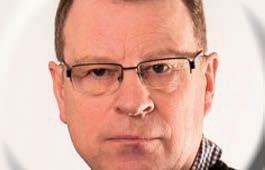
Bakkafrost of the Faroe Islands, midway between the two countries, has said offshore is firmly on its radar.

Cost, rather than technical challenges, remains the main stumbling block. Offshore is expensive – far more expensive than traditional fish farming or land-based operations.
Norway, which has similar weather conditions, is at a more advanced stage than most other countries. Its experience in building oil and gas platforms is obviously an advantage and the Norwegian offshore energy sector may well be a source of expertise Iceland could make use of.
Salmon producers Nordlaks and SalMar, through its subsidiary SalMar Aker Ocean, have large offshore platform currently in production and they seem to be working fairly well at a technical level.
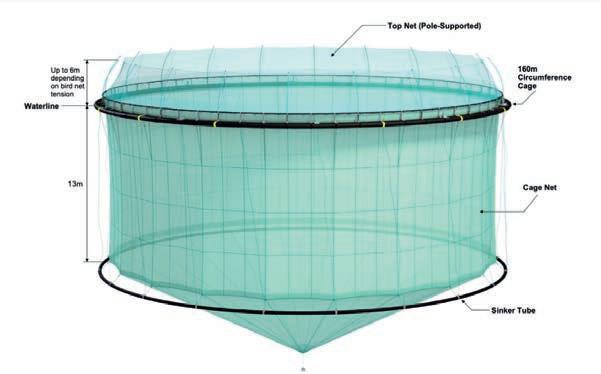
This
Ocean Farm; Guðni Guðbergsson; Sco�sh Sea Farms planned pens, Shetland
Opposite: Nordlaks
offshore fish farm
The Iceland Aquaculture Bill, which sets out a long term strategy for the industry, is currently being debated and is expected to become law by next year at the latest.
Reykjavik sees the south of the country, in an area near the volcanohit town of Grindavik, as the most likely location but its Marine and Freshwater Research Institute thinks a lot of research is needed.
The legal framework for offshore development is now included in the Ministry of Food Bill.
If and when the bill is eventually approved, the government will be able to grant experimental offshore licences.
Iceland, however, is being ultra-cautious as companies seeking licences will still have to obtain approval from the Marine Research Institute and the Environment Agency.
It also has to be noted that many of the new salmon aquaculture projects now underway are land based.
Arnarlax was granted a 10,000 ton licence extension recently, so traditional open pen farming in the fjords is not going away.
The bill states that the Marine Research Institute and the Environment Agency
Environmental factors related to operational safety… must be studied


can by themselves or in cooperation with others conduct basic research on possible areas for offshore sea fishing and its effects on the ecosystems and the wild fish population. This will become a prerequisite when applying for a licence.
The Bill also says that the Minister of Food can direct the Norwegian Marine Research Institute to start to look for suitable areas inside its territorial waters for potential offshore forming.
The aim of the research is to map out possible areas where the conditions for growing fish are best and where farming will have the least impact on ecosystems, wild populations and the seabed. It will also have to establish if offshore
farming is actually viable in what are some of the roughest waters in the northern hemisphere.
“Furthermore, environmental factors related to operational safety, such as currents and wave height, must be studied as well as issues related to fish welfare, such as stress due to parasites and diseases,” the Bill adds.
Everyone agrees a lot of work needs to be done before the first production platform is installed.
Guðni Guðbergsson, director at the Marine and Freshwater Research Institute, says that while he has heard of interest in offshore aquaculture, no-one has yet come forward with a formal application.
He thinks the seas off southern Iceland present as the most likely area because the water is generally warmer, but says a lot of work still needs to be done.
Iceland is unlikely to have any offshore platforms within the next decade, but the fact that it is looking to the future indicates that it aims to become one of the world’s seriously large salmon producers, embracing all aspects of the industry.
Ministry Food spokesperson Dui Landmark said the issue is still at a conceptual stage but both Icelandic and foreign businesses were showing an interest and the Bill was creating a framework in which that interest can proceed.
The first tentative steps have now being taken – but a long and possibly stormy journey lies ahead.

SCOTLAND too is dipping its toes into the world of offshore fish farming, although not quite on the same scale as Norway. But it is a start.
As reported in this magazine (Green light for Scottish Sea Farms’ Shetland plan, Fish Farmer June 2024) Shetland Islands Council recently gave its approval to Scottish Sea Farms’ proposed offshore salmon farm at Billy Baa.
The move is part of a strategy of modernising and consolidating the company’s estate in Shetland into fewer but larger farms.
Four existing consents to farm in the more sheltered, shallower waters of Sandsound Voe – Brei Geo Inshore (1,209 tonnes), Brei Geo Offshore (2,635 tonnes), Sandsound Voe (100 tonnes) and Sandsound Bixter (1,000 tonnes) – will be surrendered.
In their place will be one new farm, Billy Baa (4,091 tonnes), sited slightly further offshore where, the company says, hydrodynamic modelling found there to be even better growing conditions, but without any increase to overall environmental load.
The proposed farm comprises nine 160 metre salmon pens and one 120 metre pen, secured by a 125 metre mooring grid and with a surface area of 19,480m2.
OFFSHORE farming is probably more suited to warmer and less demanding waters than those in the northern hemisphere.
Already a number of projects are being looked at for South America and parts of the Caribbean.
The government of Aruba, a Caribbean island that is part of the Kingdom of the Netherlands, has just approved Petros Aquaculture’s plans to establish a 3,000-tonne open-ocean fish farm off the island’s southwest coast.
The 3,000-tonne facility will be located eight kilometres off the coast and will be used primarily to raise northern red snapper for the US and Caribbean markets.
The farm will be built in three phases. Once completed, it will have 16 submersible pens and a landbased hatchery.
The pens will utilise a proprietary design developed by aquaculture technology company Innovasea.
As Vince McDonagh reports, a study by Norway’s Institute of Marine Research has added to the evidence that farmed salmon are not spreading diseases to their wild counterparts
MARINE researchers in Norway now believe there is little risk of farmed salmon infecting their migrating wild cousins with viral and bacterial diseases.
The Norwegian Institute of Marine Research (IMR) says this was shown by an investigation last year which monitored viruses and bacteria in migrating post smolt wild salmon and sea trout.
The study’s results should help to counter some of the claims frequently made against salmon farmers.
Those sections of the media which are anti-salmon farming frequently carry reports about diseases spreading to the wild population from farmed stock.
This is in spite of an earlier Canadian Department of Fisheries and Oceans report concluding that there is no, or minimal, connection between net-pen Atlantic salmon farming and the spread of disease in wild Pacific salmon.
The Norwegian Institute does concede that infectious disease in Atlantic salmon farming in Norway is a serious problem which has an impact on welfare of infected salmon.
It also says that the problem leads to

substantial financial losses, something which was borne out in recent financial reports from some of the main salmon farming companies.
Each year, IMR checks whether wild fish have been infected with four selected viruses that also affect farmed fish. Bacteria that cause serious disease in salmonids were also added to the check list.
Institute researcher Abdullah S. Madhun says that some 138 fish were examined and only three tested positive for salmonid alphavirus, more commonly known as SAV.
A further six tested positive for heart inflammation known as PRV-1 and 10 for piscine myocarditis virus or PMCV.
No fish tested positive for the bacterium Renibacterium salmoninarum, he added.
While all of these viruses can cause diseases in the fish, the levels of virus that

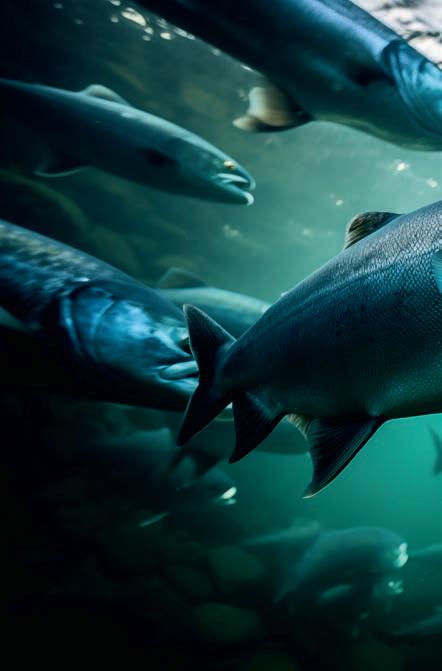
were found are characterised as “very low”.
The findings of viruses are uncertain since there were indications of very low levels. For that reason, it can be a false positive result, says Madhun.
The investigations were carried out on 50 post-smolt salmon caught in a large fjord in Rogaland known as the Boknafjorden, 50 post-smolts from the Hardangerfjord in Vestland county and 38 sea trout taken outside Hitra in Trondelag.
Madhun says: “These are farmingintensive areas where the farmed fish have different disease profiles. If wild fish are affected by the farmed fish in terms of infection, then we expect to find such infection in wild fish caught in these areas.”
The Institute of Marine Research also investigated the prevalence of infectious salmon anaemia virus (ISA), salmonid alphavirus (PD virus), and bacterial kidney disease (BKD) infections in wild post-smolt Atlantic salmon and sea trout caught in 2023 in three aquaculture production areas.
The fish were collected as part of the national monitoring programme for salmon lice. The post-smolts were taken in outer parts of Boknafjord and Hardangerfjord by trawling during May and June.
The Institute believes these findings complement and confirm its previously reported data and may indicate that the prevalence of pathogen infections in wild salmon post-smolt and sea trout is not significantly affected by the occurrence of these infections in fish farming.
In 2023 the researchers also investigated whether the wild fish were infected by the bacterium Renibacterium salmoninarum, which can cause the notifiable and serious more commonly known as bacterial kidney disease (BKD).
“Before 2022, the last known detection of this bacterium was from 2019. Then it
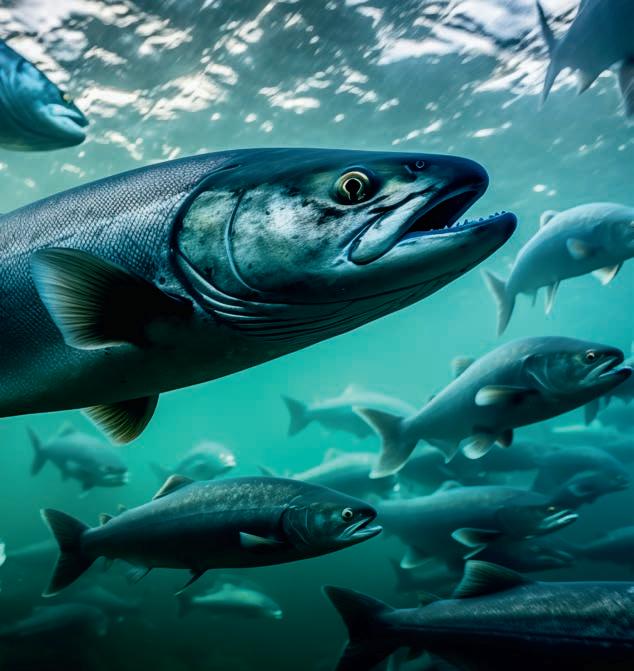
was found in wild-caught broodstock for cultivation in Western Norway, but from December 2022, BKD has been detected or suspected at 14 breeding facilities in Norway,” says Madhun.
This increase in outbreaks meant that a test for this virus in wild fish was also introduced last year in Norway.
“The sea trout that was tested was caught in an area that had nine BKD outbreaks last year, but the mail smolt was from areas without BKD detection. None of the fish, neither sea trout nor post smolt, were infected with this bacteria,” he says.
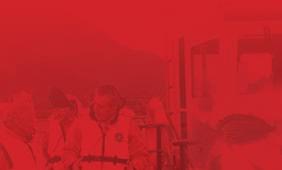
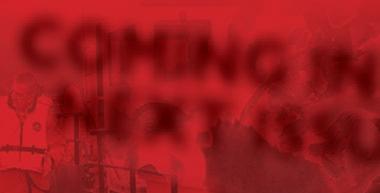


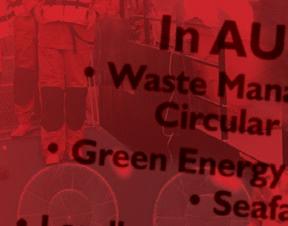


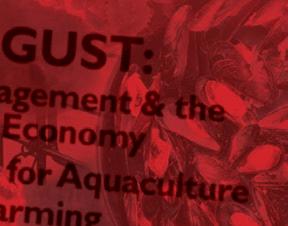
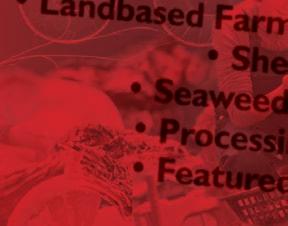

The Institute says that the findings in this year’s report complement and support previous monitoring results.
Madhun concludes: “The results of the monitoring programme indicate that there is a very low incidence of infection in migrating wild salmon and sea trout.”
The study also suggests that there is a low incidence of infection from farmed fish to wild fish.
“It appears that the prevalence of infections in wild fish, caused by the examined viruses and bacteria, is not significantly affected by the occurrence of these infections in fish farming. The results may also indicate that it is unlikely that wild fish act as a reservoir for the investigated viruses and bacteria,” says Madhun.
This monitoring is carried out annually on behalf of the Norwegian Food Safety Authority. The samples are taken from fish that are collected as part of the monitoring programme for salmon lice on wild salmon (NALO).
It is unlikely that wild fish act as a reservoir for the investigated viruses
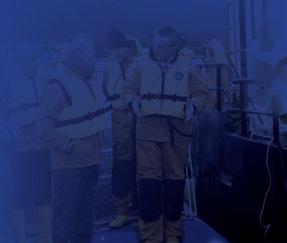


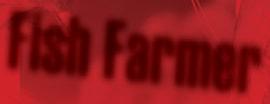

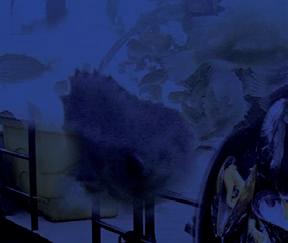




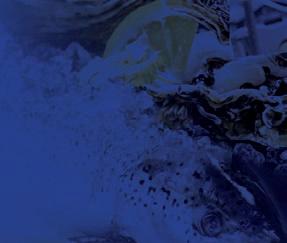

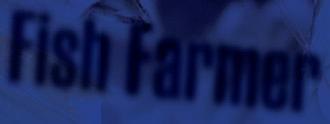


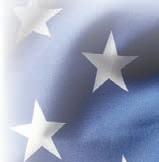





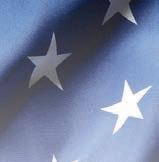
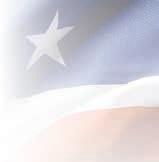
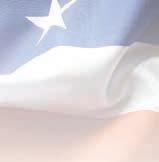

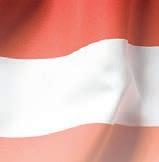



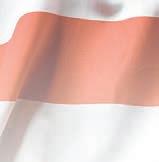








As Julia Hollister reports, bipartisan support for expanding US aquaculture does not mean it will get an easy ride
THERE is a storm brewing across the USA. But don’t board up your windows, stock up on canned foods or check your home insurance.
The storm concerns the arguments over how America can close the gap between the seafood it consumes and what it produces – and the advocates and critics of aquaculture are at odds over the issue.



















So, is support for aquaculture a bipartisan issue or will it be another politically contested question?





of American Aquaculture (AQUAA) Act. So far, industrial-scale aquaculture has been limited to coastal or inland waters, but now there’s a push to expand it into the open seas. There, proponents say, it can help feed a growing global demand for seafood with less environmental impact than coastal aquaculture, being farther from sensitive coastal habitats and creating less concentrated pollution in deeper, higher-flow waters.



A set of agribusiness giants and other corporate interests are pushing to expand industrial finfish aquaculture into US federal waters – the open seas – where proponents argue that it will help feed a growing global demand for seafood and have less environmental impact. They want Congress to pass legislation establishing a federal aquaculture system.
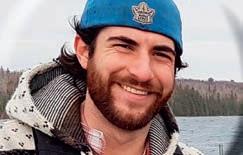
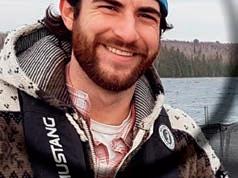
In 2020, then President Donald Trump issued an executive order that gave the industry a boost, and government agencies have begun the permitting process for several projects in which finfish would be raised in open-ocean pens miles out to sea.
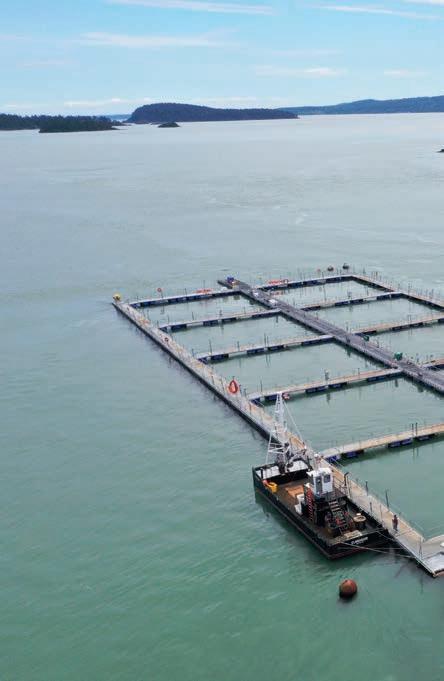
sustainably at home to support our growing population.”
Despite its bipartisan support, however, the bill has yet to make it out of the committee stage in either the Senate or the House of Representatives.
Tyler Sclodnick is a scientist with Innovasea, a company headquartered in Boston, Massachusetts, with operations across the US, including in Louisiana, Maine, and Washington. Innovasea provides aquaculture solutions ranging from submersible cages and feeding systems to land-based facilities and environmental consulting.
Stronger America Through Seafood (SATS), an industry group that includes large players such as Cargill, Merck Animal Health and Sysco, argues there is now widespread support from academics, environmentalists, seafood experts, and Members of Congress from both sides of the aisle, for the idea that America’s offshore aquaculture industry needs to grow.
To achieve this, SATS says its focus is to secure passage of the bipartisan Advancing the Quality and Understanding
In June 2023, the bill setting out the AQUAA Act was reintroduced to both the US Senate and House. It seeks to establish regulatory standards and investment in research and technology for an industrial aquaculture system in federal waters.
The Co-Chairs of the Aquaculture Caucus, Republican Congresswoman Kat Cammack and Democrat Ed Case introduced the bill. Representative Cammack said: “Aquaculture should be one of our priorities as we grow our focus on food security. In Florida, we’ve seen the benefits of aquaculture firsthand –breeding, raising, and harvesting shellfish, fish, and aquatic plants in our waters. We’ve demonstrated that it’s possible to provide healthy, fresh food that’s produced
“Research and development in the last few decades have positioned aquaculture as a sustainable form of protein production,” Sclodnick says. “Today, with computer modelling, artificial intelligence (AI), sensors, and camera systems, aquaculture farms are more sustainable than ever before.”
Innovasea is committed to sustainability, and its technology is helping farmers optimise performance to benefit the farmer’s bottom line and the environment, ensuring good water quality and healthy fish. The company offers a wide array of technologies for different problems and farm environments.
Sclodnick explains: “We are actively innovating in several areas, but I want to focus on our Open Ocean Aquaculture solutions to highlight some exciting new technology.
“Precision aquaculture is a fully integrated system that’s helping revolutionise open ocean aquaculture. Innovasea offers sophisticated sensors and high-resolution cameras that provide real-time visibility into


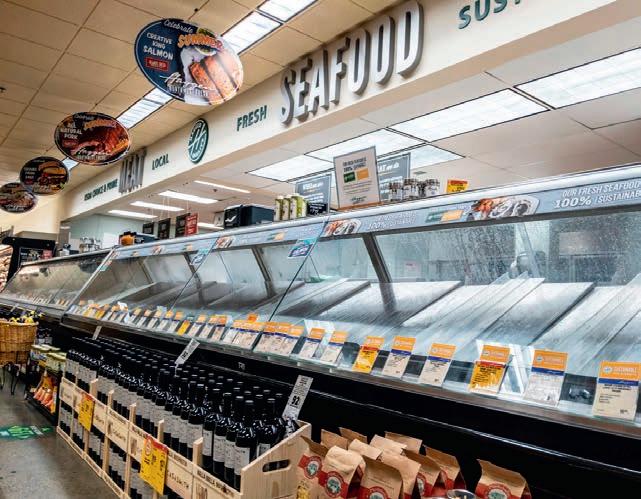

feeding so that farmers can improve their efficiency and optimize growth. High-quality feeds are an expensive cost for farmers. Our feed cameras support AI capabilities so farmers can optimize the feeding protocols for their fish, reducing waste and boosting their profits.
“Innovasea is building on water temperature and dissolved oxygen data from sensors to create deeper insights into fish growth. We are using this data to forecast temperature stress or hypoxia events before they start to stress fish. With our communications systems, farmers have an accurate inventory of fish stocks underwater and can conduct fish growth modelling in real time”
The case against
There are, however, lobby groups opposing a growth in aquaculture for the US.
Environmental advocates, including the campaign group Don’t Cage Our Oceans (DCOO), are fighting against the proposed congressional bills, calling for a reversal of the executive order and a stop to the proposed projects in US federal waters.
While some aquaculture has social and environmental benefits, providing a secure source of protein that has a much lower carbon footprint than most livestock alternatives, farming carnivorous finfish on an industrial scale has numerous potential negative impacts. These can include, according to critics: chemical and nutrient pollution, overfishing of forage fish to feed penned fish, threats to indigenous and small-scale fisher livelihoods if wild




stocks are affected by infections spreading from farmed fish.
Government agencies have avoided stepping too deeply into the controversy.
The National Oceanic and Atmospheric Administration and the California Fish and Wildlife told Fish Farmer: “We do not respond on pending legislation.”
Earlier this year, Cooke Seafood abandoned plans to win back leases at its two Washington state steelhead trout farms in the US, blaming delays by the state’s administration which it says make the case futile.
The group’s subsidiary, Aquaculture Pacific, has filed a motion with the Superior Court of the State of Washington to dismiss its appeal against the Washington State Department of Natural Resources, which has ordered the shutdown of Cooke’s farms. These were the last remaining net-pen fish farms in America’s Pacific northwest.
Cooke said: “As a result of the Department of National Resources arbitrary decision, over 100 Washington fish farming professionals including farm managers, veterinarians, hatchery technicians, truck drivers, processing plant workers and vessel crew have since been forced out of their jobs by the baseless closure of locally established fish farms.”
It is clear that a bipartisan approach at the federal level does not amount to a broader political consensus either for or against fish farming at sea. Expect more storms over this issue in the years to come.
Find out more
Stronger America Through Seafood www. strongerthroughseafood.org/advocacy AQUAA Act https://cammack.house.gov/ media/press-releases/reps-cammack-caseintroduce-aquaa-act-support-domesticaquaculture

This
Washington State; US supermarket – Could the AQUAA Act put more US seafood on the shelves?; Salmon in US market
Aquaculture farms are more sustainable than ever before





Oceans’ modular stacking RAS system for shrimp will work anywhere, say the company’s founders. Robert
reports
SHRIMP farming is big business. Just one species – Pacific whiteleg shrimp – accounted for well over six million tonnes in the global seafood trade, according to the UN Food and Agricultural Organisation.
The shrimp farming model is broken, however. So says John Diener, CEO of Singaporebased Vertical Oceans – and he has a plan to fix it.
Vertical Oceans raises whiteleg shrimp (L.vannamei) in the company’s own, self-designed recirculating aquaculture system (RAS). At present, it is operating at demo level – although if you are lucky enough to live in Singapore you can already order freshly harvested shrimp from Vertical Oceans –but the plan is to scale up to commercial production with a new plant that could be up and running next year.
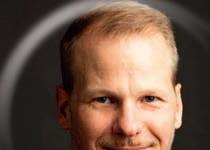
As he puts it: “We had to reinvent pretty much everything… to get the optimum result required a closed recirculating system, and I couldn’t see anything already out there that could get the result we wanted.”
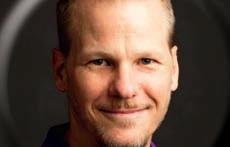

Around 10 years ago, Diener was CEO of Gold Coin Nutrition, part of the Gold Coin group, an aquaculture feed and genetics co based in Singapore. The company was focused on shrimp farming customers and Diener had the opportunity to see many farms in operation.
He says: “I visited probably around 500 shrimp farms. I saw a pattern, with shrimp farming in coastal pools cycling water from the ocean and dumping it back into the ocean, often with little or no treatment. That effluent has a negative effect on water around the farm and then they are sucking that water back in.
“It was an inefficient model.”
Vertical Oceans offers an alternative vision – shrimp raised in clean, filtered and recirculated water, close to consumers so that not only is less transportation required, but also the product arrives at the restaurant or dinner table within hours, not days, of being harvested.
With no “off the shelf” solution available, however, Diener and his colleagues had to develop their own system from scratch.
One priority was to make the tanks movable so that the shrimp could be moved as the grew, to ensure that population density levels were not exceeded. Overcrowding can lead to stress and mortalities.
Diener explains: “We needed to be able to split populations and move them into new tanks. And we need to stock new batches on a continuous basis. It’s a 365 day a year process.
“Frequent small batches make it work more like a continuous system. With smaller tanks you can control the environment for each batch.”
The classic model for a shrimp RAS system is a biofloc setup, using particles and selected microorganisms to filter the water.
The Vertical Oceans approach is a little different, with macroalgae playing a key role.

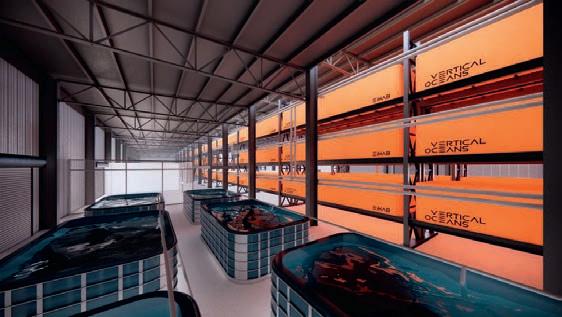



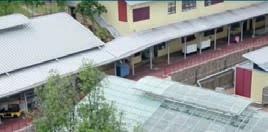
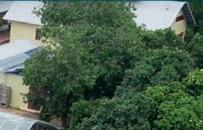




There are two elements to the filtration system: first, removing solids from the water and concentrating them, and secondly, removal of ammonia and nitrogen through biofiltration, using the macroalgae for which these dissolved elements act as a fertiliser.
“We are cost-competitive”.




Patrick Vizzone, co-founder and Chief Financial Officer, points out that typical shrimp farming does not factor in its very real environmental costs. He also stresses that the “location-agnostic” nature of the Vertical Oceans system means that it can produce shrimp where its consumers are located, a potentially important advantage given that the world seems to be moving away from unfettered international trade.







Vizzone says: “There are tariff and nontariff barriers, which we have seen particularly over the past six or seven years. The US, for example, has levied anti-dumping duties on certain countries in Asia.


The highly automated nature of the process also makes any potential international expansion easier, since a degree of expertise can be built into the system.


Diener says: “We could set up a facility in less than a year.”

The company hopes to start setting up its expanded facility in Singapore this year, for production to come onstream in 2025.

As Diener explains, macro algae are easier to control, even if not easy to grow. The algae biomass can also be sold for some economic value. And, he adds, it’s good for shrimp health –and their taste.
The company hopes to start setting up its expanded facility in




The new facility is planned to be capable of producing 100 metric tonnes per year in Singapore initially, but the optimum scale is between 500 and 700 tonnes.
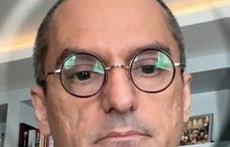

The microbiome within the system is still hugely important, however, and it is closely monitored to ensure that beneficial organisms flourish and potential pathogens are minimised.
The tanks can be stacked for greater efficiency and the modular nature of the system means that it is easy to grow an existing facility.
Vertical Oceans also had to develop bespoke technology for a range of functions, including, for example, underwater cameras able to assess biomass, and an automated feeding system.
The offering, the company says, is a good quality seafood product that is affordable for most consumers. In Singapore, Vertical Oceans can deliver fresh shrimp, typically within four hours of harvest.
But surely a RAS system, using water and energy, must incur a lot more costs than a coastal pool?
Diener says: “Our overall expenses are the same as for a pond in India or Vietnam, for example, but the mix of costs is different. Feed and labour and seedstock are the big costs. Energy is not a major cost for us.


Addressing concerns that were heightened by the Covid-19 lockdowns and their impact on trade, Singapore’s “30 by 30” goal is to produce 30% of its own food domestically by 2030
According to Vertical Oceans, one scaled plant of about 80,000 sq ft could produce 18% of Singapore’s domestic seafood supply, with a very small footprint in terms of space and energy.
As Vizzone puts it: “It makes a ton of sense for a country like Singapore”.
The sheer efficiency of the RAS system also means, says Diener, that any doubts about the plant’s water consumption – another issue for Singapore, which relies on neighbouring Malaysia for much of its water supply – can be laid to rest. In fact, he says, the facility uses less water than the average restaurant.
Anyone concerned about what a shrimp farm next door might smell like, or whether it would be producing effluent on a grand scale also has nothing to fear, he stresses. For example, the disinfectant used for the tanks is a biological, vinegar-based treatment.
If the Vertical Oceans concept is as successful as the teams hopes it will be, northern hemisphere shrimp lovers may, sometime soon, be enjoying freshly harvested tropical shrimp grown in their own home town.
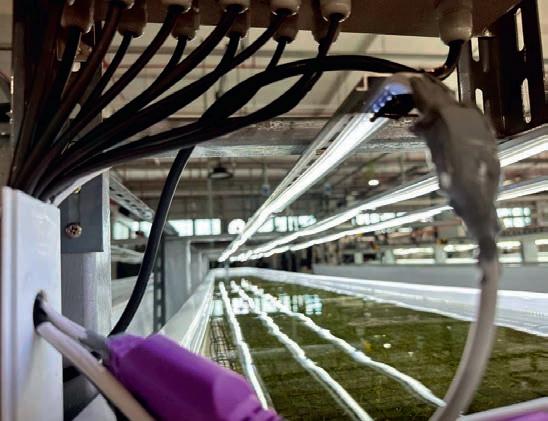
”
We had to reinvent pretty much everything




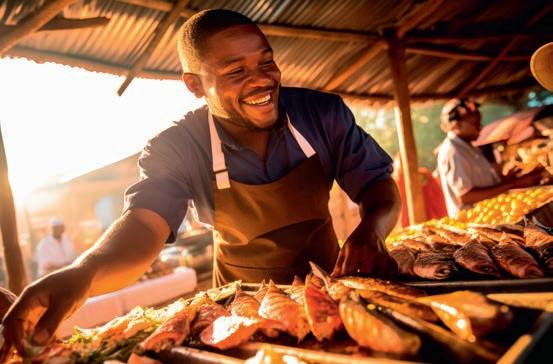


With aquaculture now producing more than catch fisheries for the first time in human history, has the age of the fish farm arrived?

Aquaculture produces record amount
In 2022 aquaculture surpassed capture fisheries as the main producer of aquatic animals for human consumption. Global aquaculture production reached an unprecedented 130.9 million tonnes, of which 94.4 million tonnes are aquatic animals, 51% of the total aquatic animal production.
Aquaculture growth indicates its capacity to further contribute to meeting the rising global demand for aquatic foods, but future expansion and intensification must prioritise sustainability and benefit regions and communities most in need.


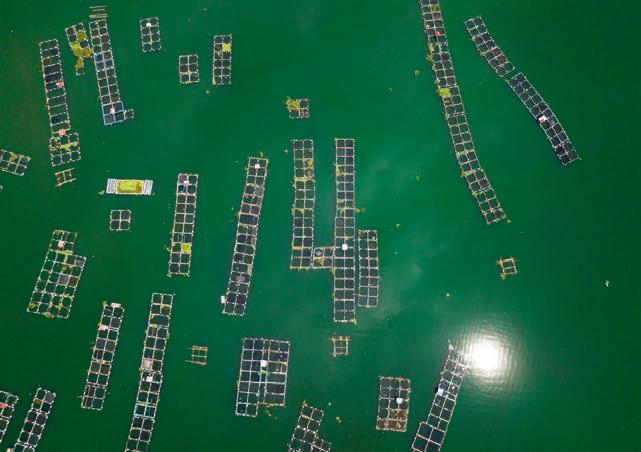



WORLD fisheries and aquaculture production has hit a new high, with aquaculture production of aquatic animals surpassing capture fisheries for the first time in human history, according to a new report published by the Food and Agriculture Organisation of the United Nations (FAO).
The 2024 edition of The State of World Fisheries and Aquaculture (SOFIA) shows that global fisheries and aquaculture production in 2022 surged to 223.2 million tonnes, a 4.4% increase from the year 2020. Production comprised 185.4 million tonnes of aquatic animals and 37.8 million tonnes of algae (seaweed).
“FAO welcomes the significant achievements thus far, but further transformative and adaptive actions are needed to strengthen the efficiency, inclusiveness, resilience and sustainability of aquatic food systems and consolidate their role in addressing food insecurity, poverty alleviation and sustainable governance,” said FAO DirectorGeneral QU Dongyu, introducing the report. “That’s why FAO advocates Blue Transformation, to meet the overall requirements of better production, better nutrition, a better environment and a better life, leaving no one behind.”
At present, a small number of countries dominate aquaculture. Ten of them – China, Indonesia, India, Vietnam, Bangladesh, the Philippines, Republic of Korea, Norway, Egypt, and Chile – produced over 89.8% of the total. But many low-income countries in Africa and Asia are not using their full potential. Targeted policies, technology transfer, capacity building and responsible investment are crucial to boost sustainable aquaculture where it is most needed, especially in Africa.
Global consumption of aquatic foods rises again
Record production of aquatic foods underlines the sector’s potential in tackling food insecurity and malnutrition. Global apparent consumption of aquatic animal

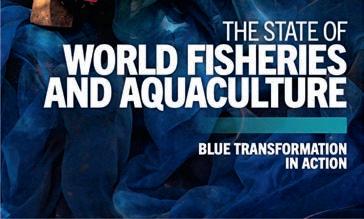



Further transformative and adaptive actions are needed

foods reached 162.5 million tonnes in 2021. This figure has increased at nearly twice the rate of the world population since 1961, with global per capita annual consumption rising from 9.1 kg in 1961 to 20.7 kg in 2022.



Of total aquatic animal production, 89% was used for direct human consumption, and fisheries and aquaculture play a critical role in maintaining global food security. The rest was destined for indirect or non-food uses, mainly fishmeal and fish oil production. Supporting further consumption from sustainable sources is crucial to foster healthy diets and improve nutrition worldwide. Aquatic foods provide high-quality proteins – 15% of animal proteins and 6% of total proteins worldwide – and key nutrients including omega-3 fatty acids, minerals, and vitamins. In 2021, they contributed at least 20% of the per capita protein supply from all animal sources to 3.2 billion people.
Most capture fisheries production comes from sustainable stocks
Global capture fisheries production has remained stable since the late 1980s. In 2022, the sector produced 92.3 million tonnes, comprising 11.3 million tonnes from inland and 81 million tonnes from marine capture. Despite the growth in aquaculture, capture fisheries remain an essential source of aquatic animal production. The proportion of marine stocks fished within biologically sustainable levels, however, decreased to 62.3% in 2021, 2.3% lower than in 2019. When weighted by production level, an estimated 76.9% of the 2021 landings from stocks monitored by FAO were from biologically sustainable stocks.
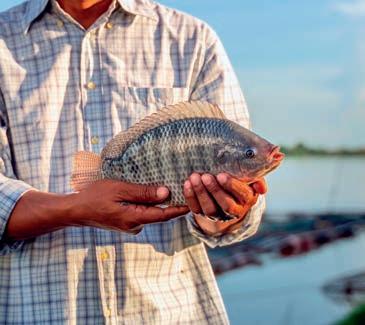

All figures are from 2022 unless otherwise specified.
Production
Global fisheries and aquaculture production: 223.2 million tonnes.
Aquatic animals: 185.4 million tonnes.
Algae: 37.8 million tonnes.
Global aquaculture production: 130.9 million tonnes.
Global capture fisheries: 92.3 million tonnes.
Aquatic animal production by region: Asia (70%), Europe (9%), Latin America and the Caribbean (9%), Africa (7%), Northern America (3%) and Oceania (1%).
Main producers of aquatic animals by country: China (36%), India (8%), Indonesia (7%), Viet Nam (5%) and Peru (3%).
Estimated total first sale value of fisheries and aquaculture production: US $472bn.
Estimated total first sale value of aquaculture production: US $313bn.
Proportion of sustainably fished marine stocks monitored by FAO (2021): 62.3%.




















says, as production projections may not keep up with population growth. This is especially alarming for sub-Saharan Africa where many countries are dependent on aquatic foods to meet their nutritional needs, particularly animal proteins and micronutrients.






These numbers demonstrate the role that effective fisheries management can play in facilitating stock recovery and increased catches, highlighting the urgent need to replicate successful policies to reverse the current declining trend.
FAO predicts rise in production and consumption
SOFIA also contains FAO’s outlook for fisheries and aquaculture, which projects increases in world production and apparent consumption for the period up to 2032. Aquatic animal production is expected to increase by 10% by 2032 to reach 205 million tonnes. Aquaculture expansion and capture fisheries recovery will account for this rise.
SOFIA projects that apparent consumption will increase by 12% to supply on average 21.3 kg per capita in 2032. Rising incomes and urbanisation, improvements in postharvest practices and distribution and dietary trends are expected to drive most of this increase.
However, per capita apparent consumption in Africa will continue to decrease, the report
The report also presents a scenario showing the potential implications of population dynamics on the supply of aquatic animal food up to 2050. Due to the rising global population, to maintain through to 2050 apparent consumption of aquatic animal foods at the 2022 estimated level of 20.7 kg per capita would require an increase in the total aquatic animal food supply of 36 million tonnes, a rise of 22%.
This highlights the need to accelerate Blue Transformation priority actions in a world where aquatic foods play a more significant role in ending hunger, malnutrition and poverty.
In addition to nutrition and food security, fisheries and aquaculture are an important source of livelihoods. According to the latest data, an estimated 61.8 million people were employed in the primary sector of fisheries and aquaculture in 2022, down from 62.8 million in 2020.
Women made up 24% of the overall workforce but 62% in the processing subsector. Gender inequality issues remain, including differences in wages, insufficient recognition of women’s contribution to the sector, and gender-based violence.
Proportion of sustainably fished marine stocks level monitored by FAO weighted by production (2021): 78.9%.
Global apparent consumption of aquatic animal foods (2021): 162.5 million tonnes.
Global apparent consumption of aquatic foods per capita (2021): 20.6 kg.
Increase in global apparent consumption of aquatic foods per capita: from 9.1 kg in 1961 to 20.6 in 2021.
People employed in primary production: 61.8 million.
Workers by sector: fisheries (54%), aquaculture (36%), sector not specified (10%).
Percentage of jobs by region: Asia (85%), Africa (10%), Latin America and the Caribbean (4%), Europe, Oceania and Northern America combined (1%).
Top exporters of aquatic animal products: China, Norway, Viet Nam, Ecuador, Chile
Top importers of aquatic animal products: USA, China, Japan, Spain, France
Value of international trade of aquatic products: US $195bn (£153bn).
The State of World Fisheries and Aquaculture (SOFIA) 2024 can be downloaded from bit.ly/SOFIA-2024-global














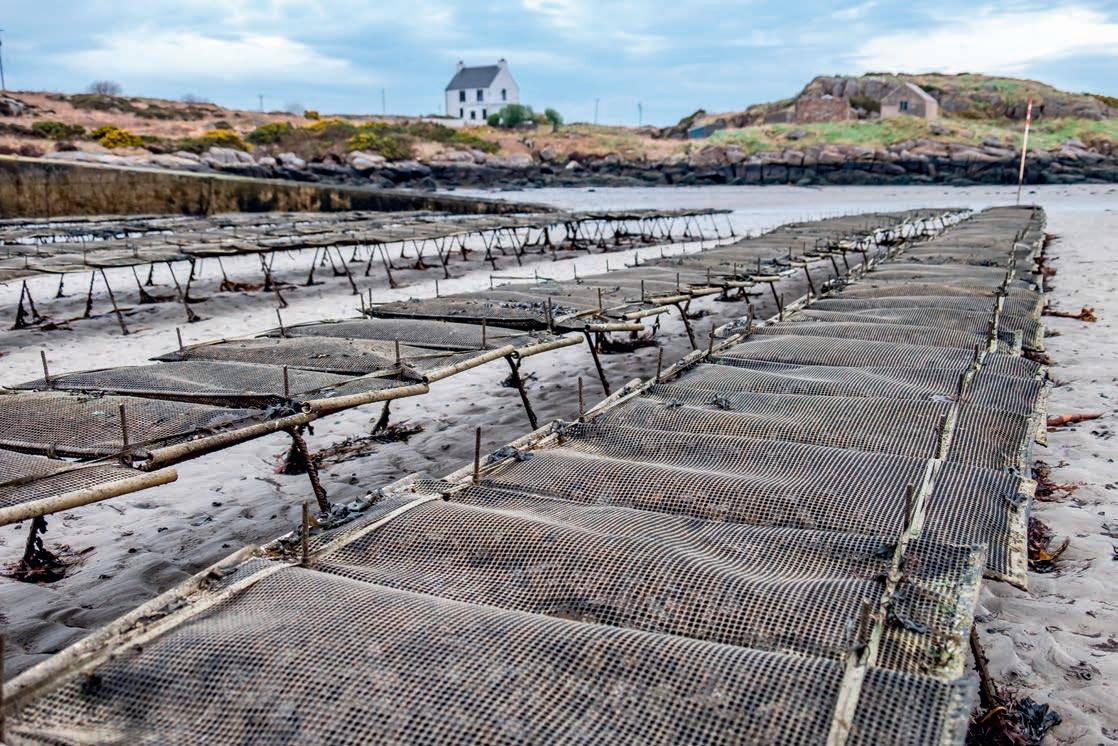






The Irish Government has a plan to grow the country’s aquaculture sector sustainably
AQUACULTURE in Ireland has grown significantly since the 1980s and today the sector produces nearly 43,000 tonnes of high value finfish and shellfish, while directly employing around 2,000 people, mainly in rural locations.

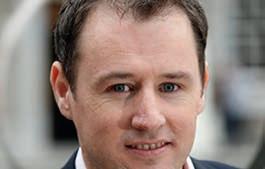
There is a fear, however, that Ireland may still be punching below its weight as an aquaculture nation. Last year the Irish Government came out with a plan aimed at growing the sector in a way that is compatible with sustainability and care for the environment.
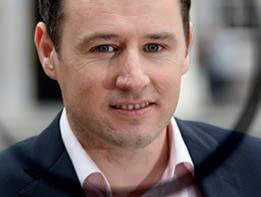
The National Strategic Plan for Sustainable Aquaculture Development (NSPSA) 2030 sets out a vision for a sector that maintains its competitive edge through low-impact production, while building commercial resilience through technical innovation and diversification.
This in turn, the document says, supports a more diverse consumer and market base aligned to increased recognition of Irish aquaculture’s growing status as a key provider of sustainable, low carbon and healthy food.
Introducing the NSPSA, Ireland’s Minister for Agriculture, Food and the Marine, Charlie McConalogue, said: “With the publication of the NSPSA I am putting in place the necessary building blocks for the continued development of a sustainable, profitable, competitive and marketfocused aquaculture sector in Ireland, positioning it to make the maximum long-term economic and social contribution to our coastal communities and Ireland as a whole, while optimising environmental performance and supporting the natural capital upon which it depends.”
The NSPSA, the successor to the 20142020 plan, will be rolled out over a 10year period to 2030. As a member of the European Union, the Irish Government has drafted the plan to be compatible with the EU’s new “Strategic guidelines for a more sustainable and competitive EU aquaculture for the period 2021 to 2030”, as well as the programming period (2021 to 2027) of the European Maritime Fisheries and Aquaculture Fund (EMFAF).
This is Ireland’s second strategic plan for
aquaculture. The first covered 2014-2020, and this time round some lessons have been learned, including: the need for more regular and systematic monitoring and evaluation of the progress and achievements of the plan; better engagement with stakeholders; and the need to build in resilience to deal with unexpected shocks such as Brexit and the Covid-19 pandemic.
The plan’s four core objectives are also those of the EU strategic guidelines:
• Building resilience and competitiveness;
• Participating in the “green transition”;



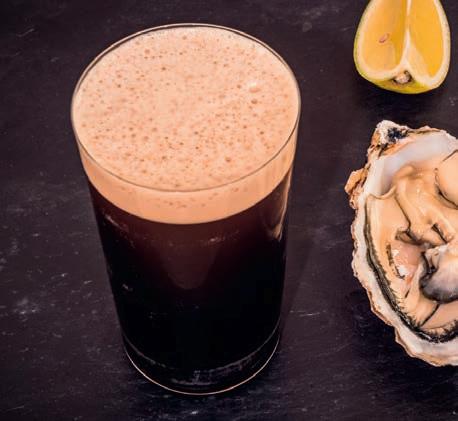




















I am putting in place the necessary building blocks ”
• Ensuring social acceptance and consumer information; and

• Increasing innovation and knowledge.
Technology will play a key role in taking the plan forward. For example, in terms of disseminating information about the aquaculture sector, the Irish Government launched AQUAMIS (Aquaculture Application and Monitoring System) which provides information about finfish and shellfish farming sites and licences in Irish waters.
Phase I created a platform to allow members of the public and the industry to view the information, and now Phase II, which will involve the creation of an online licensing process, is being developed.
The NSPSA also commits to the development of a monitoring system for norovirus in farmed oysters, and to the development of a formal reporting protocol for farmed fish escapes.
Animal welfare is high on the agenda, and the plan pledges to bring in an industry-wide code of practice for animal welfare in Irish aquaculture, and a system for near real-time animal health reporting.
There is a commitment to investigate the establishment of an Aquaculture Innovation Centre for Ireland and to review and address fragmentation in the industry, which is a particular issue for the shellfish farming sector.
The plan acknowledges the frustration producers face with the slow pace of the licensing process, with a commitment to tackle the licence application backlog.
Overall, the plan’s vision is to move towards organic production where possible, a theme for which Ireland’s salmon production is already.
Central to making the plan happen is Bord Iascaigh Mhara (BIM), the state agency responsible for developing the Irish seafood sector.

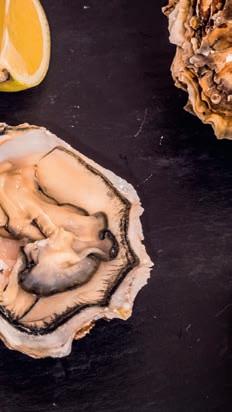

BIM publishes an annual report on the aquaculture sector, with the latest figures (released earlier this year) relating to 2022.
The latest report finds that despite a reduced number of businesses due to consolidation within the shellfish segments, employment increased in both the finfish and shellfish sectors. In 2022, the sector contributed 208m (£176m) to the economy, supporting 2,008 jobs, with a full-time equivalent (FTE) of 1,177 across the 292 PUs. The average individual salary for the year was €34,372 (£29,101) per worker.
A total of 44,623 tonnes of aquaculture products were sold directly at the farmgate, generating sales of €186m (£157m). This represents a 4% increase in both volume and value compared to the previous year.
Atlantic salmon remained the largest contributor to national sales value,
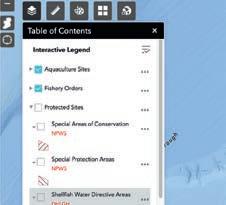




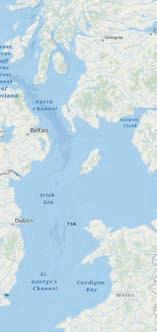



amounting to €104m (£88m) in 2022. With significant economic impacts locally and nationally, this diverse segment demonstrated multiplier effects evident in turnover, employment, and gross value added, the report says.
The mussel and oyster producing segments led the sector in terms of employment, with 1,693 people working across 260 production units. These segments generated €76m (£64m) in 2022, with shellfish operations dispersed across all maritime regions of the country. A survey conducted on the sector’s technical challenges highlighted the struggle of shellfish segments in sourcing or retaining suitably trained staff. To address this issue, businesses are exploring technologies that have the potential to reduce or eliminate labourintensive tasks in production.
While the aquaculture sector in Ireland experienced overall positive growth, BIM said, it is important to note that achievements were not uniform across all segments. The shellfish sector displayed robust output volume during the period, up 10% to 31,796 tonnes, and maintained a healthy average unit sales value, with total revenue up 13% to €76.1m (£64.4m).
Conversely, the finfish sector faced challenges, witnessing a decline in output volume, despite a rise in average unit sales values. Finfish output was down 7% to 12,295 tonnes, while revenue held more or less steady, dropping 1% to €110m (£93.1m).
One key role for BIM involves funding investment and innovation in the seafood sector, either through direct grants or through support for initiatives such as the BIM Aquatech Innovation Studio, delivered by aquaculture accelerator Hatch Blue.

One of the companies taking part in the latter is award-winning aquatech start-up, Konree Innovation, which is developing a technology-based solution to the long-running problem of sea lice in salmon farming.



























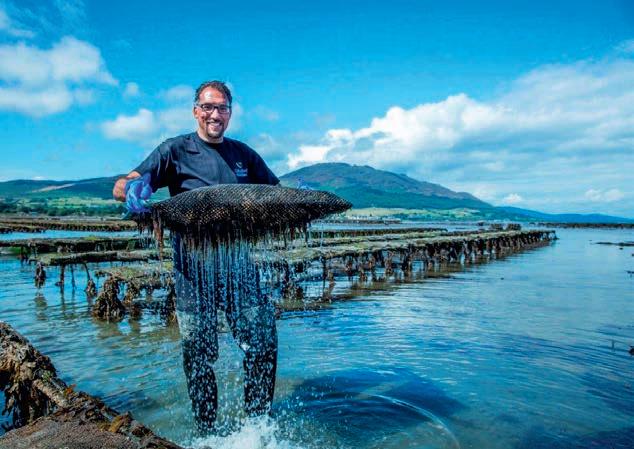


recommended by the Irish Government’s Seafood Taskforce
The scheme is funded by the European Union under the Brexit Adjustment Reserve.
Carlingford Oyster Company was founded by Dutchman Peter Louët Feisser. Peter is now officially retired and the farm is run by his son Kian, with Kian’s wife, Mary.
According to Kian Feisser the investment has seen significant improvements and efficiencies at the company.
“Oyster farming is very labour intensive and the investment was designed to make the company more competitive, and to secure the livelihoods of our team and my family,” says Kian. “The premises were built in 1992 and it was a big open space and we really needed to upgrade.
“The work included extending our production facility, adding equipment to help us segregate and grade oysters and improvements in the dispatch areas. Modernising our working environment has supported us meeting the evolving requirements of food safety inspectors, and the expectations of our customers when visiting our premises.”


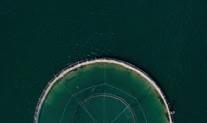

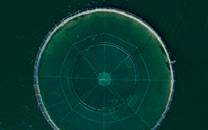


The new process being developed by Konree will be able to detect sea lice in the salmon pen. According to Margaret Rae, the company’s co-founder, this costs the global salmon production industry between €3bn and €4bn annually.
In addition, the company added new depuration tanks with cutting edge water skimming technology to mitigate the risk of norovirus, a forklift, a pallet truck, a new water grader and floating oyster growing bags.
Said Kian: “All of these machines have helped us not only improve efficiency and working conditions, but they have also helped improve the quality of our oysters and therefore our customer satisfaction.”



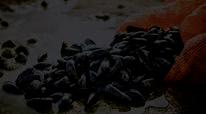



Talking last year to BIM, she said: “Everything is going in the right direction, and we are very excited about what the rest of the year will bring. This will be a game changer in the salmon production industry. The solution we are developing to control sea lice is a drop-in solution, designed from the start to be a sustainable non-polluting technology. The salmon farmer does not have to invest in any special infrastructure to support it.”
She said the Aquatech Innovation Studio had been a very worthwhile experience: “I would recommend any young aquatech company to apply. We had two weeks of really intense work every day from nine to five. It was a great litmus test for the business.”
The world is their oyster
In April this year, the Carlingford Oyster Company described the impact of a grant from BIM which enabled it to invest more than half a million euros in new machinery and production facilities.
At its peak last summer, the business employed 30 local people, something which Kian is very proud about. Sales to the UK represent about 60% of total sales with approximately 20% of sales in Ireland. He is currently focusing on sales in mainland Europe with support from BIM and Bord Bia.
Carlingford Oyster Company was one of the first farms to grow gigas oysters, the frilly Pacific variety that is now well-loved across Ireland but was rather novel at the time.
“Without the support of BIM and the Brexit funding we would not have been able to achieve all we have under this investment, and we are very grateful. The future is certainly looking bright,” said Kian Feisser.
At the start of this month, two new schemes were announced under the €258m (£218.4m) Seafood Development Programme, cofunded by the Government of Ireland and the EU under the European Maritime, Fisheries and Aquaculture Fund 2021-2027 (EMFAF).
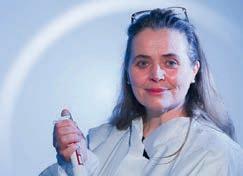
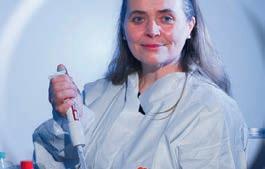

The County Louth business, which celebrates its 50th anniversary this year, is producing 250 tonnes – the equivalent of 2.5m oysters – a year, and has its eyes set on increasing exports to Europe.
The business invested €535,000 (£453,000) in upgrading its facilities with the support of a €142,000 (£120.2m) grant under the Brexit Sustainable Aquaculture Growth Scheme
The future is certainly looking bright
The Aquaculture Capital Investment Scheme will provide grant aid to support capital investment in the aquaculture sector. These investments will enable the sustainable growth of aquaculture operators; will encourage the entry into the sector of new aquaculture operators; and will support the evolution of smaller operators, allowing them to scale-up, and boost their competitiveness.
The Seafood Training Scheme will provide assistance to those working in the sector who wish to develop their skills and knowledge through attendance at recognised training and education courses. It assists with costs associated with the training, such as exam fees.
Both schemes are currently open for applications.
Launching the schemes, the Minister, Charlie McConalogue, said: “These two new schemes… clearly demonstrate the breadth of supports provided under our EMFAF Seafood Development Programme. They provide the investment needed to support the resilience and sustainability of the seafood sector, both commercial and environmental. They will help to ensure that in the face of challenges such as climate change and ever-changing market conditions, the Irish seafood sector will continue to provide a high quality product and remain competitive in a global market.”
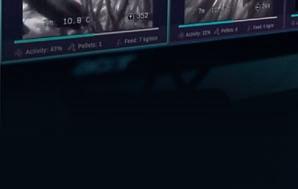


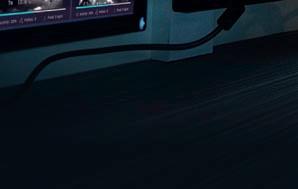




•No upfront costs
Enjoy hassle-free delivery with fully project managed installation included.
•Redeployment allowance
Benefit from full service commissioning of equipment approximately every 18 to 24 months.
•Comprehensive support
Remote support provided 7 days a week by support team. Access to strategically located field-based engineers
•Stay up to date
Software and minor hardware enhancements are included throughout the rental term.
•Zero service and maintenance costs
Wear and tear, servicing, maintenance, and rectification of equipment, and service visits to resolve on-site issues are included.
•Maximize uptime
Replacement equipment provided at no extra cost. Outbound postage and packaging included.
•All inclusive
Fixed monthly invoicing amount ensures accurate budgeting and improved cash-flow.
•End-of-term ease
When the rental period ends, or during extended fallow periods, AKVA can take care of removing and storing the equipment, ensuring a hassle-free transition for your business.
Seamlessly integrate withAKVA connect 4* and AKVA observe*
*Additional subscription required.

Science offers a way to bring about dramatic improvements in livestock –including salmon – but not everyone is happy about it, Robert Outram finds
GENE editing is a divisive and, some would say, scary concept, but fear not. The UK Government has rebranded it as “precision breeding”. While this may reassure some people, it is unlikely to put the debate about it to bed.
Technology such as CRISPR has made it possible to understand and manipulate genetics in ways that would once have been dismissed as science fiction. Desired genes can be added to the mix and those with a harmful effect can be removed.
It is important, however, to understand the different categories within the technology. Genetic modification (GM) can include the insertion of genes from a completely different species to achieve the desired effect, whether that is a drought-resistant strain of corn or a faster growing chicken.
In contrast, gene editing (GE) is limited to genes that would naturally occur within a given species. It could mean, for example either removing a gene associated with a hereditary defect, or ensuring that genes

linked to specific disease resistance, or growth, are spread more widely.
To some extent gene editing replicates what can be achieved by selective breeding, but in a way that takes many fewer generations to achieve – hence the term “precision breeding.”
GM is not permitted on a commercial basis in many jurisdictions, including the UK and European Union, and up until now that has included gene editing. The EU shows no signs of changing its stance in a hurry, but in England the Precision Breeding Act came into force in March last year. This legislation opens the door to gene editing at a commercial scale for plants and, potentially, animals.
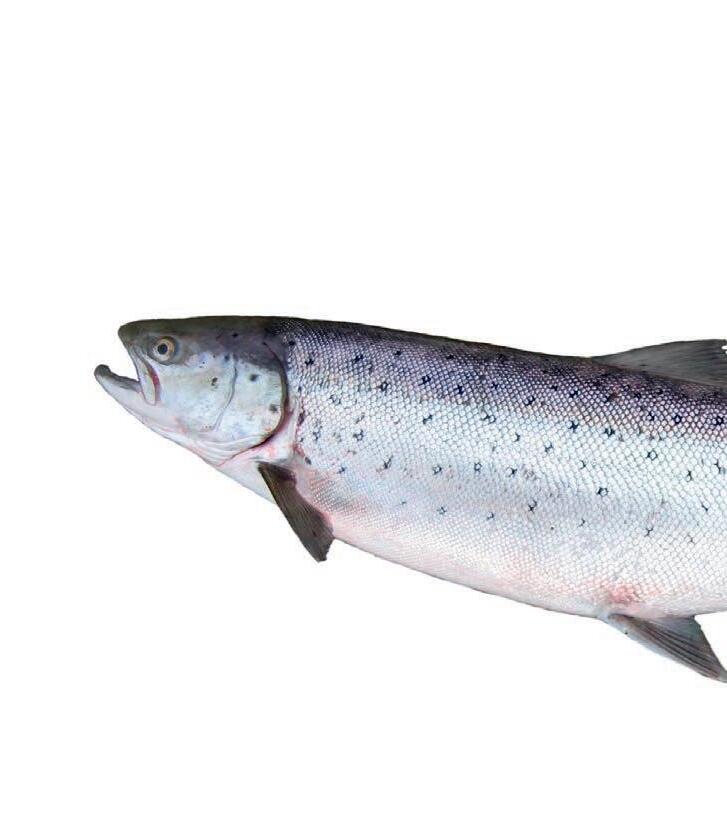
This, some argue, could be a game-changer for aquaculture. At Aqua UK in Aviemore this May, Dr Janet Talling, Head of Genetic Technology and Farm Tenancy Policy in the Innovation, Productivity and Science Division, Defra (the Department for Environment, Food and Rural Affairs) explained what it could mean.

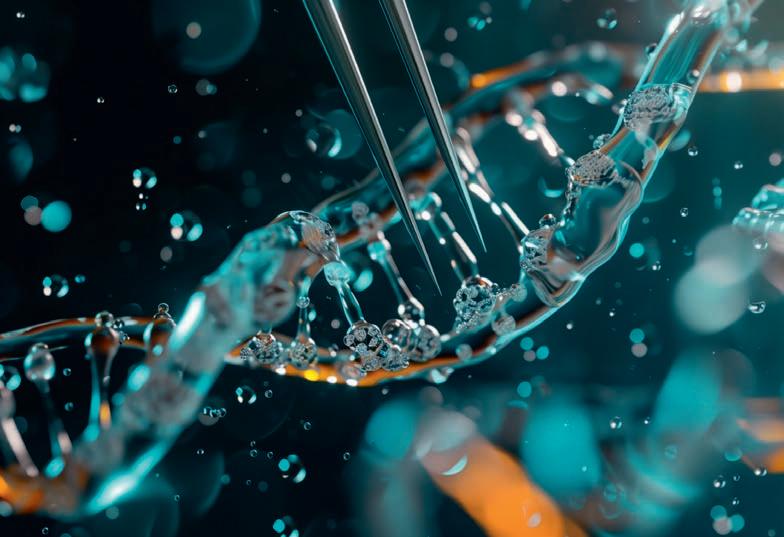




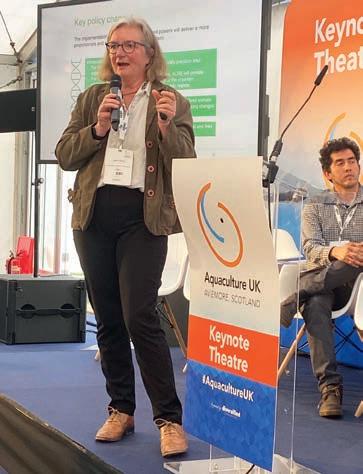
Defra has already drafted regulations to cover PBOs (precision bred organisms) for plants only, she said. Statutory instruments were expected to be laid in summer 2024 –although this was before the general election was announced.
In England, this legislation does not appear to be a party political issue. Vet Record, the news publication of the British Veterinary Association, has reported that, in opposition, Labour offered a cautious welcome to the plans, albeit with a few caveats such as the need for tighter and more transparent regulation.
As of now, the Food Standards Agency is developing a new authorisation framework to regulate the use of precision-bred organisms in food and feed products in England. This framework will consider any risk these organisms pose on a case-by-case basis and will ensure that all associated food safety risks are proportionately assessed, managed and communicated to ministers to inform their decision on whether the organism is safe to be marketed for use in food and feed.
Defra is also now starting consultation on potential animal welfare issues around
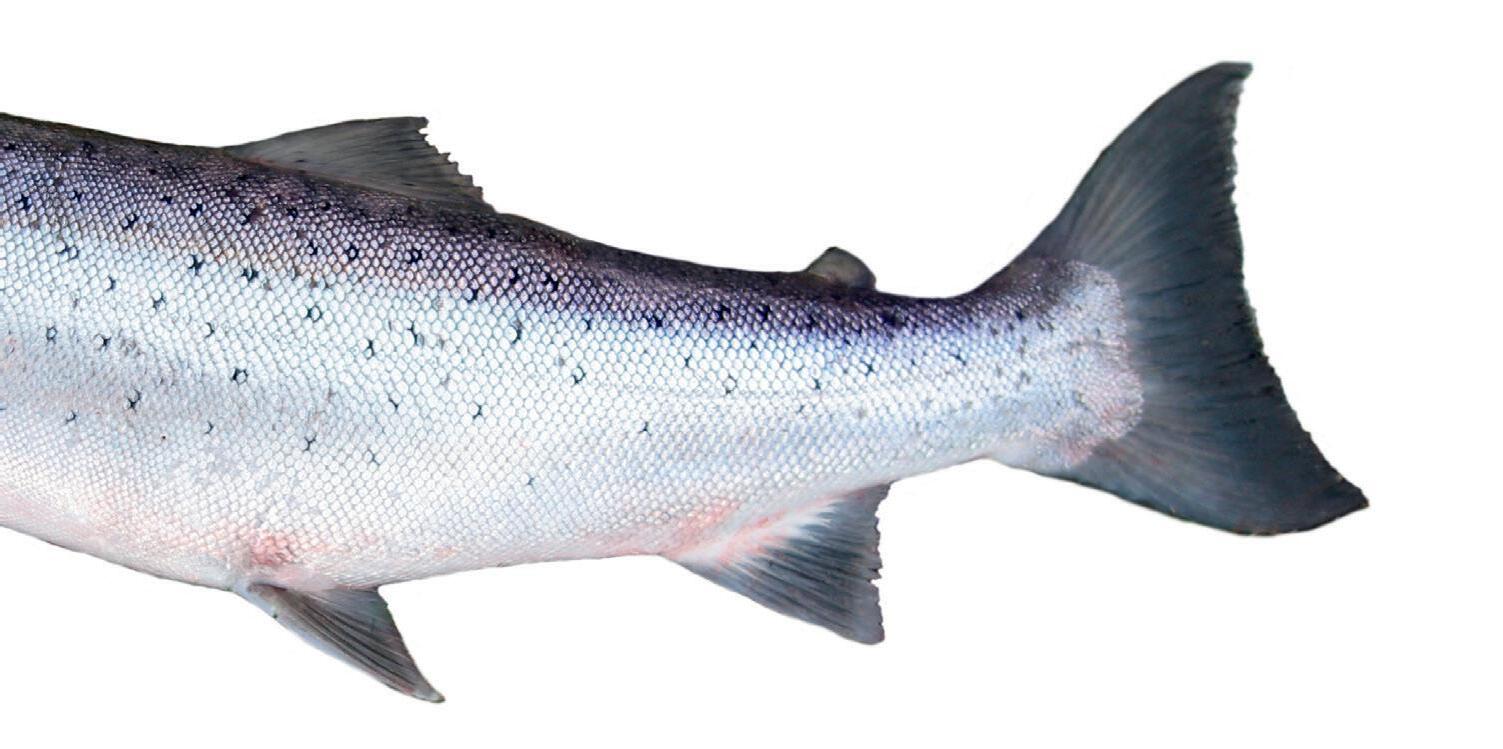
The devolved administration in Wales is still considering its position on the issue. Meanwhile, gene editing is already permitted throughout the UK for research purposes. SRUC (Scotland’s Rural College) has a project underway to understand d the implications of precision breeding for animals, focusing mainly on the three species most likely to be candidates for the new approach: pigs, poultry and Atlantic salmon.
The aim is to set out “…a welfare assessment framework that will allow the effects of precision breeding technologies on welfare to be assessed on a general and edit-specific basis”.




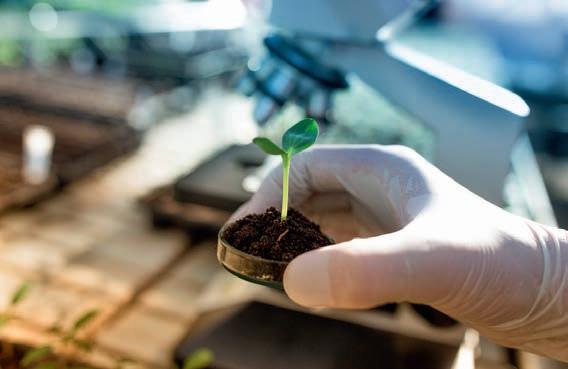

PBO and has established a Precision Breeding Working Group. The department would need to grant a market authorisation for any PB animals to be marketed in the UK.
When applying, the company concerned would need to confirm that the health and welfare of the animal concerned, and its progeny, are not expected to be adversely affected by any trait resulting from precision breeding.
Each application would be reviewed by the government’s Welfare Advisory Body, which would report to the Secretary of State, who would then in turn decide whether to grant the authorisation.
Even if granted, there may be post-market monitoring requirements to identify any health and welfare problems that might emerge.
The animal welfare framework also involves the Home Office, which sets rules for animal experimentation.
Meanwhile for plants, legislation will be amended to ensure that PB varieties can be registered. Talling said research is measuring the impact of PB traits, taking a holistic assessment.
Public consultation is due to take place on PB for animals through 2025. The aim is to bring out draft legislation the following year and companies will be invited to make applications to start using PB commercially.
The position taken by the Scottish Government is very different, however. Agriculture is a devolved policy area and the SNP administration in Scotland has made it clear that it will continue to treat PB organisms as GM – which means they could not be produced commercially.
The legislation covering the UK single market means, however, that while the Scottish Parliament could prevent the production of PBOs in its own jurisdiction, it could not stop PBOs produced in England being sold in Scotland – potentially putting Scottish farmers at a disadvantage.
Also speaking at Aviemore, Alejandro Gutierrez, Director of Genetic Services UK at CAT, the Centre for Aquaculture Technologies (CAT) who is based in Stirling, argued that gene editing will mean a “step change in the rate of genetic improvement”. This has already been shown in for example Argentina, where PB is not being treated as the same as GMO. Significant advances in yield, growth and feed conversion rate were seen in PB tilapia. In Japan, PB has also been used with red sea bream.
But Gutierrez also warned that some precautions are essential when raising gene-edited fish, above all to ensure that they cannot have the opportunity to interbreed with the wild population. These include sterility – which he called “a fundamental requirement” – and effective biocontainment.
In fact, he said, there is a paradox: “Farmers want fertile animals but need sterile animals.”
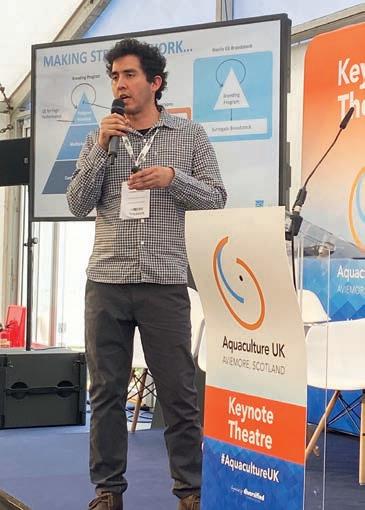
Gene editing presents a major opportunity for aquaculture
Fortunately there is a solution, he added, in three steps:
1. develop desirable GE strains, and breed high-performance individuals that are sterile, with inactive gonads but viable germ cells;
2. extract germ cells and transfer to sterile GE surrogate broodstock with active gonads but no germ cells; and
3. breed surrogate broodstock to produce many sterile offspring.
Gutierrez stressed: “We need to educate the public to explain that no new DNA will enter the animals.”
CAT’s research suggests that, for Atlantic salmon, GE could mean a 15% increase in growth rates and a 7% improvement in feed conversion ratio among other benefits. He said that, worldwide, the sector could see an increase in value of $1.8bn (£1.4bn).
For and against
Ross Houston, Director, Genetics and Innovation with Benchmark Genetics, is also an advocate of the technology. He says: “Gene editing presents a major opportunity for aquaculture by improving animal performance, health, and welfare in a sustainable manner.
“The majority of ongoing research and development initiatives in this area focus on the trait of disease resistance, for which gene editing presents an opportunity to develop fully resistant animals. Prevention of disease is a better approach than treatment, and layering genetic resistance into the DNA or eggs is the ultimate in disease prevention. As such, there is transformative potential to address some of aquaculture’s biggest health, welfare, sustainability, and social licence issues. For example, major projects are targeting resistance to sea lice in Atlantic salmon, and considering the impact that a full genetic resistance could have in terms of avoiding the need for physical or chemical treatments, handling of the fish, and associated licence to operate.
this sector. It is hard not to be supportive of something that has the potential for such high impact commercially, environmentally and on welfare.”
Not everyone is so supportive, however, and a number of animal welfare organisations are concerned regarding the potential downsides of gene editing.
Penny Hawkins, Head of the RSPCA’s Animals in Science department, says: “The RSPCA believes that serious conflicts can arise between animal welfare and human interests. In our view, gene editing to increase animal productivity is unacceptable, because many farmed animals are already at their physiological limits, and around 12 % of animal protein produced globally is wasted every year.

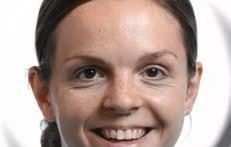
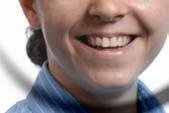
“Gene editing technology is potentially of major benefit to aquaculture breeders, but the main benefit would be to the industry in general.”
He adds, however: “Gene editing is not in any way a replacement for selective breeding programmes, which focus on cumulative and permanent improvement of many beneficial traits, while preserving genetic diversity. This practice, enabled by innovations in technologies related to genomics, high-throughput phenotyping, and cryopreservation will continue to be the backbone of genetic improvement and seed supply. Rather, gene editing technology will need to be integrated with such a programme to give significant added value.”
“The UK Genetic Technology (Precision Breeding) Act 2023 will include secondary legislation that is intended to minimise risks to animal welfare, but this is yet to be drafted and there is no framework at all within the Act for ethical decision-making around the purposes for each gene edit. This is of concern to the public as well as the RSPCA.”

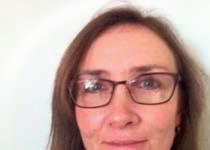
While she can see some benefit in developing greater resistance to disease in livestock, she stresses that GE should be a last resort and not a substitute for adequate veterinary care and surveillance.
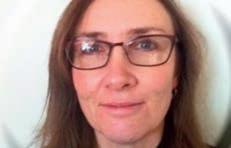
Also, Hawkins says: “Using gene editing to modify animals so that they can better tolerate environments that do not meet their welfare needs, or poor husbandry, should be unthinkable and should never be permitted.”

Dr Matias Medina, Aquagen’s director of R&D, based in Norway, says: “Allowing the use of gene-edited animals in a regulated way will benefit all farm production and will contribute with the development of a sustainable food system. Targeted gene editing will improve efficiency and welfare of the animals being produced.
“This would be the case for aquaculture too, where gene editing could potentially contribute with the solution of environmental, welfare and health-related challenges. Specifically, breeding and egg producing companies will benefit from gene editing by taking advantage of existing beneficial variation within the species being farmed as well as by increasing the pace of genetic changes, while keeping a balanced selection.”
Marie Smedley, Head of Breeding Programmes with Xelect, based in St Andrews, Scotland, says: “Gene editing has potential for huge benefits to the animal breeding industry and key technology from advanced terrestrial breeding can be readily transferred to the aquaculture sector.
“Xelect is part of the Genus group, world leaders in developing and commercialising gene editing as demonstrated by the recent successes of PRRS (Porcine reproductive and respiratory syndrome) resistant edits in porcine. PRRS costs the pork industry an estimated U$2.7bn [£2.13bn] annually, highlighting the significant benefits in

Gene editing, subject to regulation, is already entering the commercial sphere in countries like the USA, China, Australia, Brazil and Japan. While the UK is taking a cautious approach, it looks as if we will see it in some form in England – and this will create a dilemma for the other devolved nations.
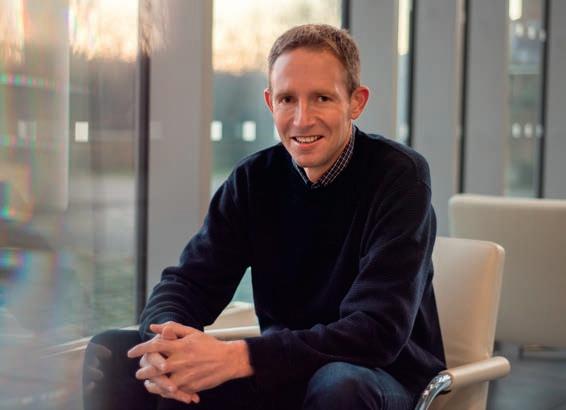


TROUTLODGE is the world’s leading producer of eyed trout eggs. We maintain four strains of rainbow trout, which allows for security of supply for our customers all year-round. Our breeding program is designed to maximize value to customers by optimizing hatching rates, feed conversion, growth, and product quality.
With customers all over the world, it is important to develop products that will perform well for our customers, each with their own unique production plan, farming method and environmental conditions. It’s critical that our breeding program consider the environment in which our trout will be grown. This can include varying factors including temperature, oxygen levels, feed formulation, density, production system, water quality, light cycle etc. Troutlodge has invested heavily in field testing with certain customers to evaluate performance in various conditions, leading to a product suited for their specific environment.
Many different production systems exist in trout farming, and for the majority, our standard product will perform well. In certain environments, such as intensive RAS, or extreme water parameters in open systems, specific selections may be needed to achieve the desired performance.
In collaboration with certain customers, Troutlodge has performed field testing over multiple generations, leading to a product designed for enhanced efficiency in unique conditions. This is one example of how Troutlodge seeks continuous improvement through collaboration and input from customers.
To take this a step further, Hendrix Genetics also provides Genetic Service Agreements to businesses for them to develop a unique product suited to their own environment. We design together with the customer a breeding program using our mutual assets. Under this agreement, the customer will have the benefit of the Hendrix Genetics’ industry leading breeding database and resources to support their objectives.
”High quality genetics are designed to maximize value for our customers
High quality genetics are designed to maximize value for our customers and help support our vision to set the standard for sustainable animal breeding. To learn more about our commitment to R&D along with our products and services, visit troutlodge.com
Hendrix Genetics is a leading multispecies animal genetics company with primary activities in layer-, turkey-, swine-, aquaculture -and traditional poultry genetics. Hendrix Genetics provides expertise and resources to animal protein producers in more than 100 countries, with operations and joint ventures in 25 countries and more than 2.900 employees.
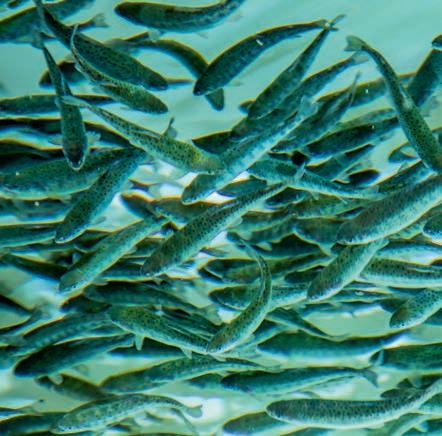
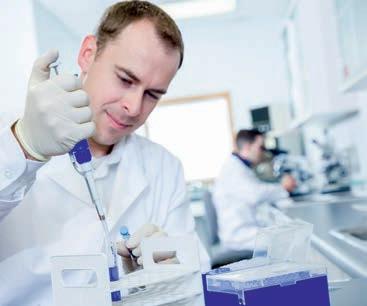
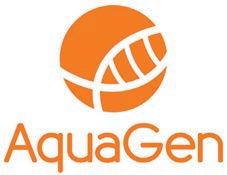
A ban on imported salmon eggs from Norway led AquaGen to come up with a UK-based solution






When Scotland banned the import of Norwegian salmon eggs in 2019, due to a perceived risk of infectious salmon anaemia (ISA), AquaGen Scotland immediately stepped up efforts to support the domestic industry by using local salmon populations to duplicate the breeding work of its parent company in Norway. These efforts would not have been possible without continuing support from local salmon farming companies, keen to benefit from the ability to shorten production time in seawater, maximise utilisation of sites, reduce pathogen and sea lice risk and cut costs.
Norwegian Elite eggs, which originate from fish selected for performance and with broad enough genetics to support further multiplication from the long established AquaGen strain, were imported to Scotland between 2018 and 2022. These have been used to produce multiple new Elite populations in each generation, and
www.fishfarmermagazine.com
to produce high genetic merit production eggs for sale into the local market.
Using locally held genetic material together with genomic and performance data from the wider breeding programme in Norway, we have continued to select for the high performing and robust production traits that are attributed to our highly selected Gain and Shield product lines. Gain stocks are the faster growing fish of the two strains, but both offer high protection against IPN (infectious pancreatic necrosis), CMS (cardiomyopathy syndrome), PD (pancreas disease) and HSMI (heart and skeletal muscle inflammation disease).
One of the major benefits of local broodstock production is the opportunity to develop a strain that copes well with specific local challenges. This is achieved by incorporating feedback from harvest data and gill scores, which are evaluated against individual genotypes, to ensure that the most similar fish from broodstock groups fish are used for further breeding.
Breeding is a long-term business, however, and it is only one of the tools in the toolbox available to farmers. The good news is that the broodstock being managed in Scotland continue to match the performance of the Norwegian programme, and ongoing input from our Norwegian and Chilean colleagues is a major factor in helping us to achieve this.
Salmon performance is complex, with multiple variables across life stages, production populations, geographical sites, husbandry, feed regimes and health challenges, making the direct comparison of generations year on year difficult to evaluate, and to appreciate the benefits provided by improved breeding.
To enable us to demonstrate the tangible improvements in performance that can be attributed to developments in the AquaGen strain, we recently undertook a study that looked at how our customers’ fish were performing and assessed what further improvements might mean for future gains in the industry.







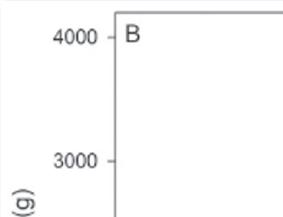

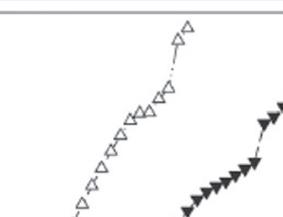
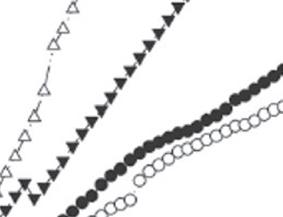
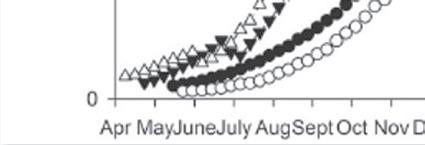



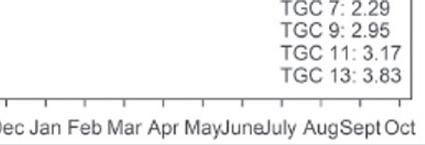
The study used eggs from a single female population, fertilised with several different generations of males, whose milt had been cryogenically preserved. The fertilised eggs were mixed and reared together in the same environment, in what is often referred to as a “common garden“ experiment.

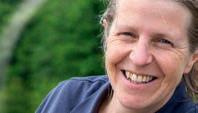
The results of the trial can be seen in the graph below, but bear in mind that the benefits shown are limited to the male component only; the combined benefit from both parents could be argued to be close to a three kilo increase in harvest weight across the generations considered in the trial. These beneficial gains are already integrated into our products, and future improvements in selection will continue to have significant impacts on the industry. Primarily these will be around shortening sea water cycles and reducing exposure to health and environmental risks at sea.
AquaGen celebrated the official opening of its Profunda facility near Ålesund in November 2023. This was an important milestone, as the full-cycle, land-based facility offers a separate and highly biosecure section that will allow for export of pathogen-free salmon eggs throughout the year, for delivery across the world.





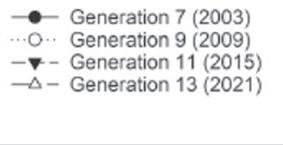

am thrilled to have joined a dynamic and forward-thinking company investing in innovative breeding solutions at such an exciting time for sustainable aquaculture,” she said.

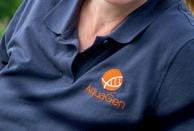



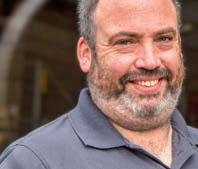
“Selcoth won Sustainable Aquaculture Business of the Year in 2023, and my ambition is to see if AquaGen can do the same in 2025.”
David Roadknight joined us in April 2024, making the difficult decision to leave Loch Duart after 15 years as their freshwater manager, working in one of the most remote areas of the country.


In this facility, the fish stocks are physically separated from the environment, and grown in fresh and marine groundwater drawn from deep wells in glacial deposits formed during the last ice age.
To enable the export of eggs to the UK, the facility must obtain pathogen free status from the World Organisation for Animal Health (WOAH) plus agreement from the Office for Phytosanitary and Sanitary Trade Assurance within DEFRA, which requires a two-year surveillance period. AquaGen is confident that the integrity of the new facilities will enable pathogen free status to be achieved.
Shara Routledge joined the team in May 2024, with a background in freshwater rainbow trout production at Selcoth Fisheries Ltd. She brings expertise in systems analysis and quality management systems implementation, with a particular focus on welfare and sustainability.
“After fifteen years at the coalface of rainbow trout production, I

“I joined AquaGen Scotland as Site Manager, and having seen the challenges as opportunities over the past few months, I am thoroughly excited to be part of a supportive team with the oldest scientific breeding programs for Atlantic salmon and rainbow trout,” he said.
I look forward to the future working with AquaGen, continuing their mission to preserve the unique starting point for creating a healthy and sustainable aquaculture for future generations.

Opposite from top: Aerial view Holywood Breeding Centre, with Dumfries in background; View inside Holywood farm; Power of gene�cs results showing the effect of the male parent from different genera�ons This page from top: AquaGen growout data showing performance improvement across the genera�ons; Shara Routledge, Quality Management Systems Co-Ordinator; David Roadknight, Site Manager
future improvements in selection will continue to have significant impacts
Copenhagen
is the venue for an event that will bring together aquaculture expertise from all over the world
THE eyes of the world’s aquaculture sector will be on Copenhagen this August, when the city hosts AQUA 2024, a joint event co-organised by the European Aquaculture Society (EAS) and the World Aquaculture Society (WAS).
The AQUA events are held every six years. Past events took place in Nice (2000), Florence (2006), Prague (2012) and Montpellier (2018).
AQUA 2024 will take place from August 26-30 at the Bella Arena in the Danish capital of Copenhagen. It will comprise a scientific conference, trade exhibition, industry forums, workshops, student events and receptions. The event will highlight the latest aquaculture research and innovation to underpin continued growth of this exciting food production sector.
Denmark accounts for around half the European Union’s production from recirculating aquaculture systems (RAS). The main aquatic species farmed in the country are rainbow trout (Oncorhynchus mykiss) raised in fresh- and saltwater, and blue mussels (Mytilus edulis). The increasing use of intensive recirculating aquaculture schemes (RAS), however, has also introduced new species (Atlantic salmon, kingfish and pikeperch).
Denmark is also a leading player in the production of technology for RAS farming, as well as fishmeal and fish oil processing and aquafeed production, making it an important part of the aquaculture sector as a whole.
AQUA 2024 will be a showcase for Denmark, and its innovation leadership in several key technologies crucial for future aquaculture, but also a meeting and exchange platform for experts from around the world.



The overarching theme of the event is “Blue Food, Green Solutions” and the scientific conference will include
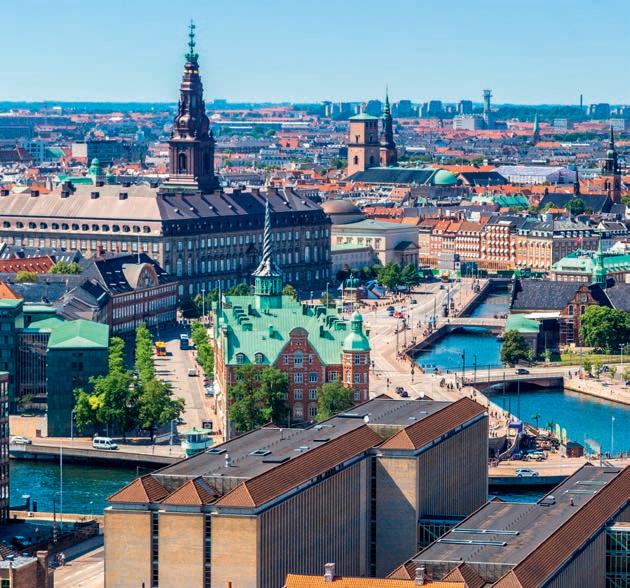




more than 60 sessions covering all aspects of aquaculture research. The organisers say: “Food systems transformation is a crucial requirement to mitigate climate impacts and offer enhanced food safety and security to billions.















Aquaculture has demonstrated its resilience to change and is increasingly recognised for its environmental responsibility, reduced footprint and high efficiency in protein transformation and provision.
“As our knowledge increases, so does our potential ability to offer Green Solutions throughout the aquaculture (and seafood) value chain. These solutions need not only to be financially feasible, they must also be based on the intelligent and sustainable utilisation of resources to maintain a measurable and limited footprint.”
AQUA 2024 has been organised with the support of local partners, the Danish Export Association Fish Tech, the (the International Council for the Exploration of the Sea (ICES), the National Institute of Aquatic Resources (DTU AQUA), the University of Copenhagen, EUROFISH and the Copenhagen Convention Bureau.
The Gold sponsor for the event is BioMar; Silver sponsors are Biorigin, US Soy, University of Stavanger and the Blue Planet Academy; and Aquasoja is a session sponsor.
Programme highlights
The programme grid, showing sessions over the days is now online at was.org/meeting/pdf/AQUA24_ProgrammeGrid.pdf

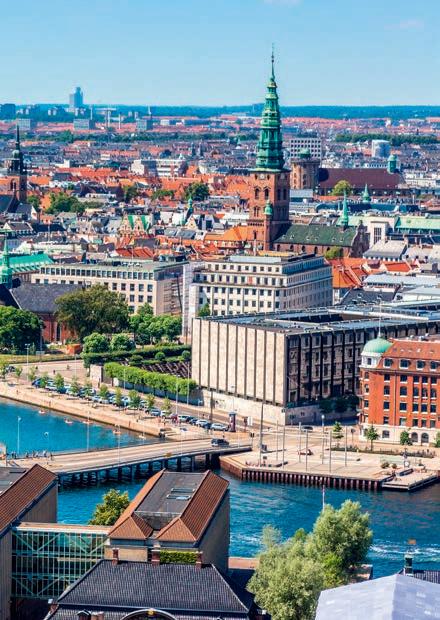
aquaculture production by at least 75% by 2040 if we are going to limit global warming to 1.5C. Dag Sletmo will share his top-down financial perspective on what it will take to grow aquaculture production significantly. The demand drivers are in place, the challenge is increasing supply and at the same time reduce the environmental footprint. That will require new technology, better farming practises, and better regulations. As an industry depending very much on government regulations, it also needs a strong social license in order to achieve these goals. And where will the money come from?
DNB Bank’s aquaculture activity is very focused on salmon, but Sletmo will also address aquaculture more generally. DNB is the leading bank in Norway and the largest bank globally in salmon farming with clients in Norway, Faroe Islands, Iceland, Scotland, Canada, Chile and Australia.
Prior to joining DNB, Dag Sletmo worked in Cermaq, the global salmon farmer, and ABG Sundal Collier, a Nordic investment bank. He holds an MBA from Columbia Business School in New York and has studied economics and philosophy at NHH and UiB in Bergen.
Where can AI take us?

Signe Riemer-Sørensen will be speaking on Friday 30 August, the
The event will highlight the latest aquaculture research and innovation
It shows the parallel abstract-based scientific sessions, as well as the forums and special sessions that will take place and specifically targeted towards operators and producers.
Plenary speakers
Speaking at the first plenary session on Tuesday 27 August, Dag Sletmo will address the issue of “Analysing the future”.
The UN Food and Agricultural Organisation says we need to increase sustainable
• Expected conference delegates: 1,400
• Total expected participation: 2,500
• Countries represented: 90
• Conference sessions: 60
• Special sessions, industry forums and workshops: 12
• Tradeshow booths: 240
• Tradeshow visitors: 1,200

Make decisions 100x faster for disease management, feeding strategy and animal welfare using microfluidics.
The Biomark X9™ System for High-Throughput Genomics delivers cost-effective, comprehensive and scalable sample profiling with minimal operator contribution on a completely new platform.
Shift paradigms with the only real-time PCR and NGS library prep system on the market. For Research Use Only. Not for use in diagnostic procedures.






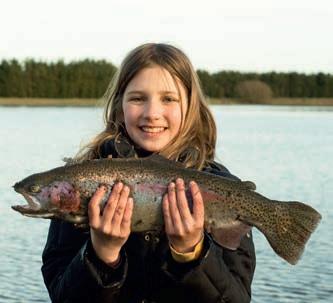
last day of the conference.
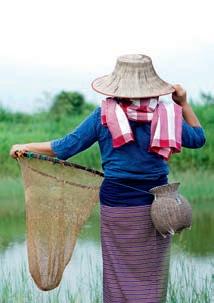
She will be talking about “AI with knowledge”. Large language models have democratised artificial intelligence (AI), and copilots and chatbots are changing most office jobs but despite their impact, they will not revolutionise aquaculture, Riemer-Sørensen argues. For that we need completely different types of AI.
Through examples from aquaculture and beyond, she will explain the challenges, provide intuitive insights into AI, and introduce the latest developments on industrial AI and their potential in aquaculture.
Signe Riemer-Sørensen is Senior Researcher and Research Manager for Analytics and AI in SINTEF. Her research evolves around overcoming challenges for implementing machine learning and artificial intelligence in a broad range of industrial settings where physics plays a role and data is often sparse and noisy. The solutions integrate domain knowledge into the AI, in so-called “hybrid AI”, fostering robust, explainable and trustworthy models.
This final plenary will be followed by the AQUA 2024 Poster Awards, overseen by the AQUA 2024 Programme co-chairs, Luisa Valente (CIIMAR, Portugal), Lorenzo Juarez (WAS, USA), Kjell Maroni (FHF, Norway) and Anne Cooper (ICES, Denmark). This will see the best online presentations of the conference judged by an expert panel.
A regular feature of EAS events is the Industry Forum and the Innovation Forum and these will take place during AQUA 2024.
The Industry Forum will be held all day on Tuesday 27 August and will address the main event theme, with key questions about the status and future of the sector with regards to adaptation to climate change, mitigation of its effects, circular approaches and other externalities.
It will be divided into several panel discussions, overseen by master of ceremonies for the day, Lise Walbom, CEO, Food Nation Denmark.
The AQUA 2024 Innovation Forum is being co-organised by EAS, EATiP (European Aquaculture Technology and Innovation Platform) and the European Commission.
It will be held all day on Wednesday 28 August and will take the title “Exploring Inter-Regional Collaboration & Innovation Transfer vehicles for Aquaculture.”
The Forum will explore collaboration for innovation transfer through the lens of EU policy and initiatives, but also at the global level. It comprises four sessions, with a mix of presentation and interactive discussions, to address key questions.
Session 1: European Aspirations for Inter-Regional Innovation transfer
Session 2: Inter-Regional Innovation Landscape in Practice: case studies on how innovation transfer vehicles promote advances in aquaculture
Session 3: Innovation Transfer Within the Aquaculture Research Community
Session 4 – Facilitation, Funding Models and Future Calls for Inter-regional innovation transfer.
The detailed programmes for both forums are currently being finalised and will be online at the events website www.aquaeas.org in early July.
Several special sessions at AQUA 2024 will seek to bridge the gap between science and industry.
• Quantitative Atlantic Salmon Health Assessment.
• EUROshrimp Forum.
• Aquaculture Stewardship Council workshop on “Future aquafeed supply chains in a transitioning industry and a changing climate“.
• Host Resistance to Sea Lice
• Light and Fish – And Light and other organisms
• IMTA and low-trophic aquaculture.
As above, the detailed programmes of these sessions will be online at the events website in July.










The AQUA 2024 exhibition is just about sold out, with more than 240 booths from suppliers and operators covering all aspects of aquaculture production at the global level. All coffee breaks and happy hours will be held in the exhibition hall to maximise interaction and some 1,400 trade show visitors are expected.
Fish Farmer will be among the exhibitors represented, and visitors to our stand will have the chance to win the magazine’s daily prize draw.
On the Monday preceding the event, the organisers are offering several tours.
• AQ24 A_DTU: Tour high-tech facilities at the Danish Technical University (DTU) National Food Institute – side streams and research into new ingredients from marine raw materials. Monday, August 26. Morning. Cost: €25 per person. Maximum 30 persons
• AQ24 B_OXYGUARD: Visit OxyGuard International’s Danish headquarters. Monday, August 26. Morning. Cost: €25 per person. Maximum 30 persons
• AQ24 C_MAREL: A visit to the MAREL Progress Point global Demo Center, to see cutting-edge solutions and software for fish processing. Monday, August 26. Morning. Cost: €25 per person. Maximum 50 persons




















• AQ24 D_AQUARIUM: A behind the scenes tour of the Danish National Aquarium (Den Blå Planet) – Northern Europe’s largest aquarium. Monday, August 26. Afternoon. Cost: €60 per person. Maximum 50 persons. Factsheets on all tours are available on the “Travel” top menu of www.aquaeas.org and registrants can sign up for them during the registration process.






Early Bird registration for AQUA 2024 is at www. aquaeas.org/Registration/ Submit/AQUA24E







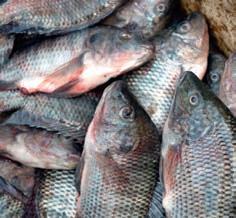
As our knowledge increases, so does our potential ability to offer Green Solutions ”
This page from the top: Girl with rainbow trout; Blue foods are key to the developing world’s economy; Signe Riemer-Sørensen; Tilapia are among the most widely farmed fish, worldwide; Blue mussels


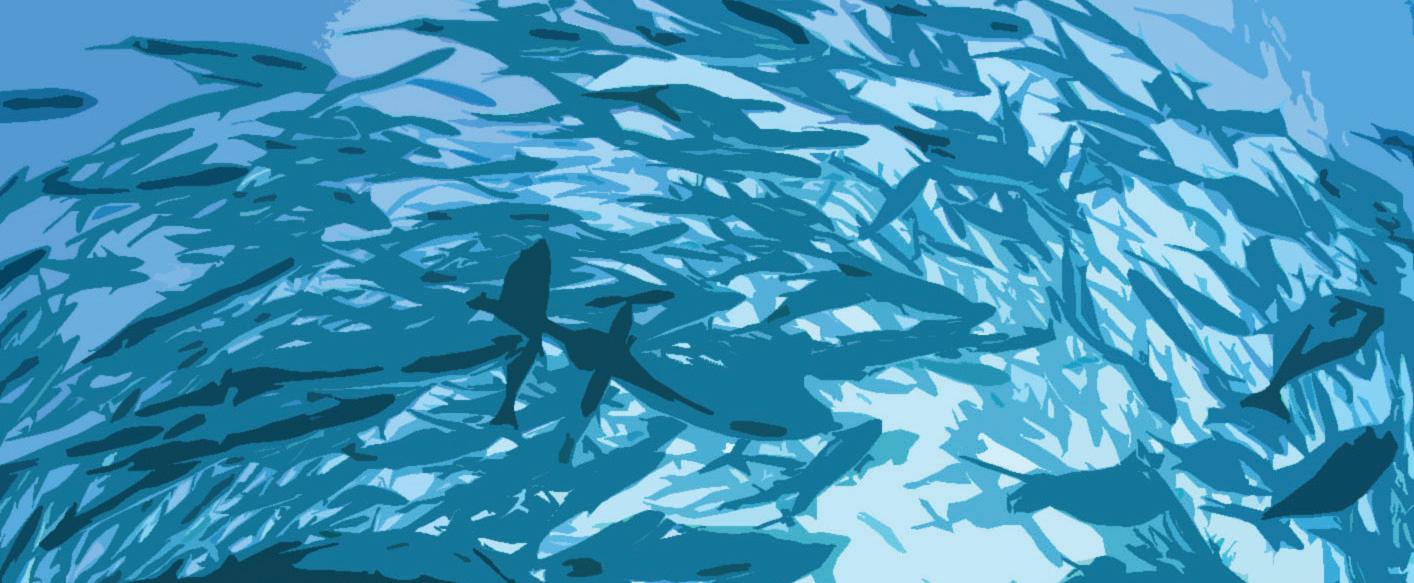
∫ Measures up to 8 parameters in 2 minutes.
∫ Only 3ml of water required for reagent disk.
∫ User-friendly, touch-screen operation.
∫ Rugged, portable and water resistant.
∫ Auto record keeping of results and Bluetooth® capability.
∫ Suitable for use with fresh water, salt water and brackish water.
∫ Faster and more accurate than traditional methods.

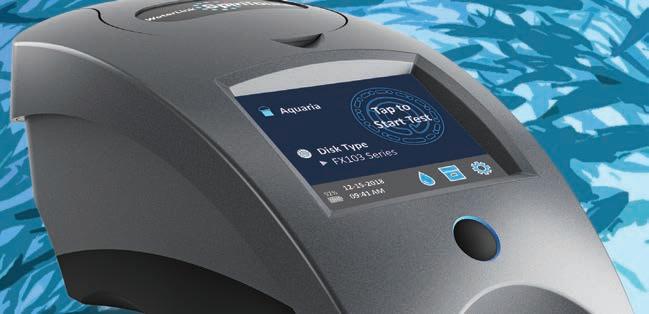




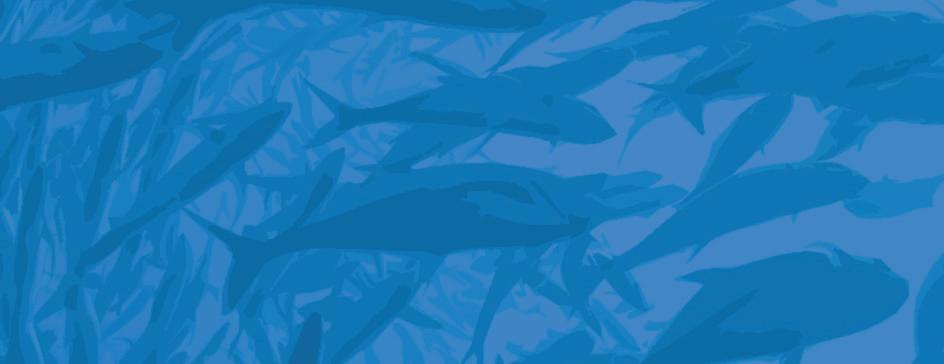
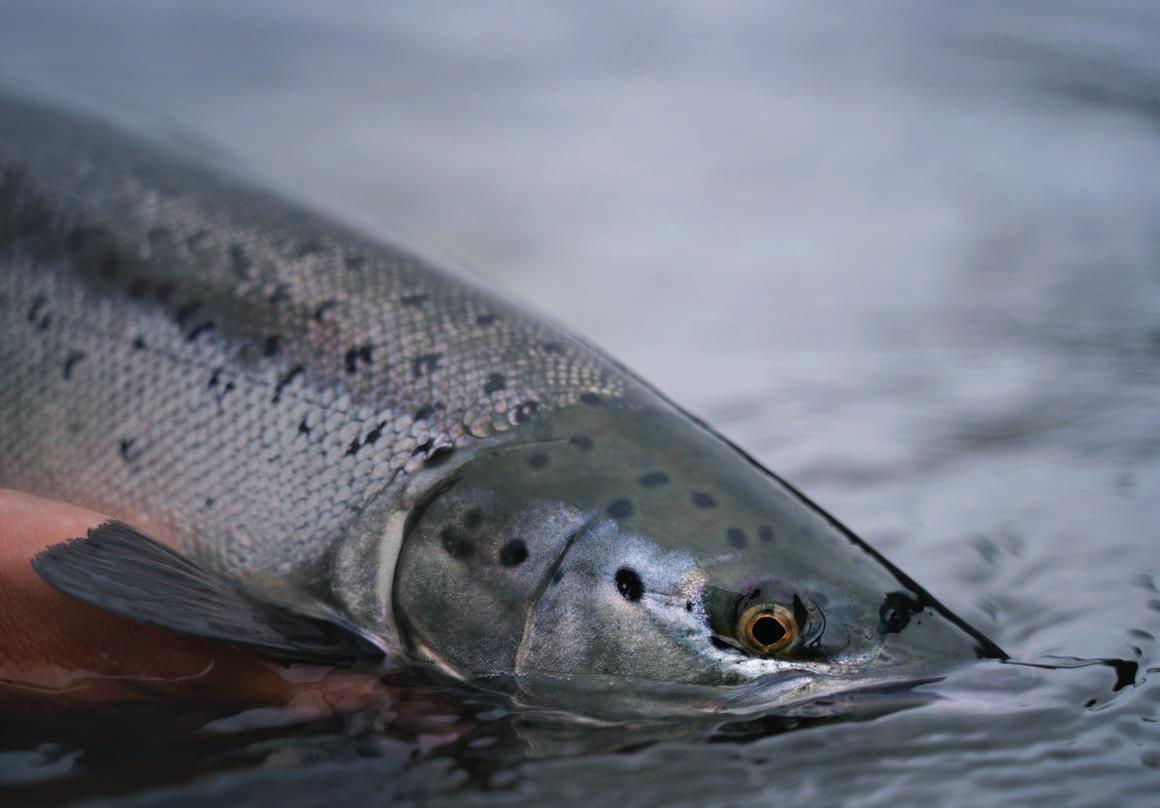
In the face of growing global challenges, Blue Planet Ecosystems is setting new standards in sustainable aquaculture with its groundbreaking systems. As the global population and calorie intake soar, traditional aquaculture practices are proving insufficient and environmentally taxing. Blue Planet Ecosystems’ mission is to provide a reliable protein source while safeguarding biodiversity
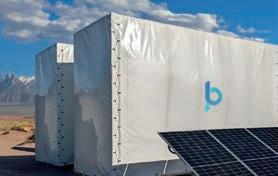

LARA: Innovative Aquaculture Solutions
LARA, short for Land-based Automated Recirculating Aquaculture, is a revolutionary system transforming seafood production. This modular, autonomous system leverages advanced engineering, data science, and biology to enable local, sustainable food production. Producing up to two tons of seafood per unit annually, LARA is deployable close to consumers, ensuring fresh, sustainable produce with minimal environmental impact.
Equipped with a self-optimising control system enhanced by big data, AI, and computer vision, LARA ensures efficient and sustainable aquaculture management. Continuously monitoring and adjusting water quality and other critical parameters, its scalable and modular design suits any operation size.
Okti: The Smart Solution for Aquatic Health Okti is an intelligent, stand-alone system designed to enhance





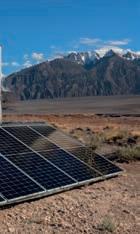
aquaculture operations through advanced sensor technology and automation. It provides real-time monitoring and management of essential water parameters like dissolved oxygen, pH, temperature, and conductivity. Features include a livestream camera, alert system, and task management, all accessible via a user-friendly interface. Additional options for redox potential, total gas pressure, and CO2 monitoring ensure comprehensive oversight. With continuous, real-time access, Okti enables efficient, sustainable aquaculture with minimal on-site supervision.
Blue Planet Ecosystems is dedicated to the highest standards of environmental, social, and governance (ESG) compliance and animal welfare. These systems ensure disease-free, antibioticfree environments where aquatic life thrives naturally, producing healthier, more nutritious seafood.
For more information, visit www.blueplanetecosystems.com


The team at Sundew is dedicated to applying synthetic biology and precision fermentation to the problems of aquatic ecosystems. Our lead product is an effective, natural and ecologically friendly solution for protozoan parasites.
To find out more about how we can help you, come and talk to us at Booth 189 at Aqua 2024 or email our CEO, Giovanni Salerno at gs@sundew.bio



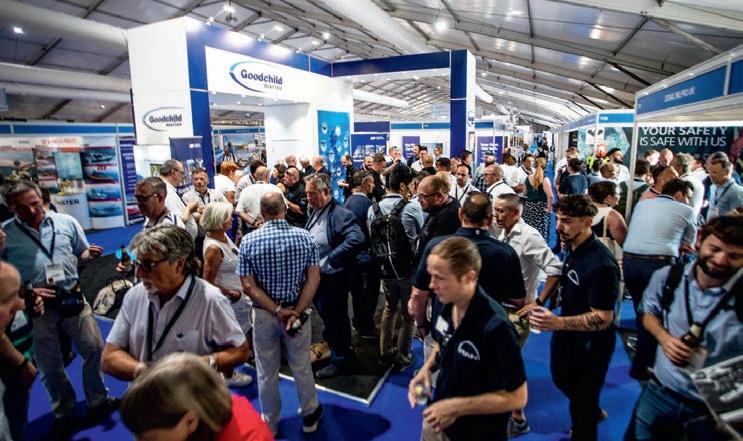
Aquaculture was a
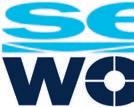
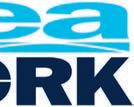

THE 25th edition of the Seawork exhibition and conference held in June 2024, Europe’s largest small commercial marine show, included as usual several companies that are associated with operations in the aquaculture sector.
The show took place in Southampton, on the south coast of England, between 11 and 13 June. It was officially opened by HRH Princess Anne, The Princess Royal. Audience numbers showed a steady increase on previous editions with 7584 visitors from 45 countries.
One of the leading Seawork exhibitors linked with aquaculture was the global shipbuilding group Damen Shipyards Group. As in previous years the group debuted a new model which this year was the fully-electric FCS 3210 E. This represents the next step forward in crew transfer solutions, paving the way to zero emissions transportation of crew and cargo to offshore locations.
Damen developed the FCS 3210 in response to feedback from the market calling for a larger crew transfer/cargo vessel. The design is based on Damen’s successful FCS 2710. It features the same combination of Damen’s AxeBow hull shape with a rounded tunnel.
This working craft offers optimal comfort, reduced wet deck slamming and minimal resistance in the water. With the increased length of the FCS 3210, this effect is even
further pronounced ensuring increased uptime. Aft, the FCS 3210 offers increased space for a larger deckhouse and more deck capacity.
Shortly after the introduction of the FCS 3210, Damen received an order for three hybrid diesel-electric versions and following this, Damen has taken the next step forward with the development of a fully electric, zero emissions version.
The vessel features a full electrical Volvo IPS system, enabling it to sail exclusively on battery power. With this, the FCS 3210 E is able to sail at high speeds to offshore locations up to 25 nautical miles from shore. On arrival, it will recharge at a charging system integrated to a turbine, substation or SOV before returning to shore. To give operators the flexibility to operate the FCS 3210 at locations farther from shore.
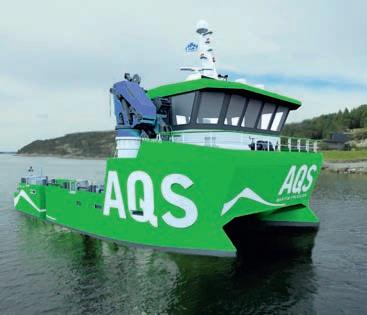
In a key conference session Damen presented its views on “Fuels of the future”. Director of Products in Damen’s Workboats division, Joost Mathôt, reviewed the multiple options fuelling the debate. He highlighted that all around the world, new regulations are being introduced that that will require maritime operators to report – and reduce – the carbon impact of their fleets.
The new regulations are a major challenge because carbon reduction technology requires an increase in CAPEX – and frequently OPEX, too – at a time when it offers no increase in earning potential. A further challenge, in most cases, is that the technology has not yet reached a state of maturity so, as of now, it is not known what the future maritime energy transition will look like. Range anxiety is another issue to be addressed.
Mathôt acknowledged the difficulty of finding an answer. He emphasised that none of the currently available alternative fuel types provides a definitive solution. Plus, the origins of the fuels raise further questions. He indicated, however, that this is not a reason not to act. Indeed, Damen, with its goal to become the most sustainable maritime solutions provider, is doing all it can. It is, in fact, exploring all possible options and he reported that the group had successfully delivered a number of fully electric vessels, and is now constructing more.
Ian Ellis, Managing Director of MacDuff Ship Design, told Fish Farmer: “Little has changed over the last year in operations and smaller vessels, but the drive to clean technology does seem required. One area which was not noted before and is a potential benefit for vessels with batteries is the potential to run on battery and not need to run diesel engines at site.”
He explained: “We have seen the delivery of AQS Trym in the early part of the year which has a set up as above. We have a number of vessels currently in build for aquaculture sector both in the UK and Norway and much of this is driven by the larger infrastructure and cage sizes.
This increase has led to higher loads during site maintenance and a requirement for higher capacity cranes and deck equipment suitable for operation with the new sites whilst maintaining or improving crew safety. This is all shown in the AQS Trym with the extensive deck package fitted.
“Even in the smaller site boats,” he reported, “this requirement is being seen and the older vessels are not suitable for the fitting of the larger cranes and deck equipment leading to a new breed of site boats. There is also a demand for improved efficiency and need for boats which are capable of performing specific tasks such as net cleaning and ensilage.”
Ellis remarked: “We are looking forward to an exciting year with these developments and working with vessel operators and owners to develop the new generation of vessels suitable for the future. The first of these can be seen in a new 15m catamaran that we have developed with Tor Group International and Skagen Ship Consulting. The vessel has now been fully developed to carry a 50 tm [tonne/metre] crane and optional further deck equipment. Tor Group have started building the first two vessels as stock vessels.”
In respect of AlphaGeo and the products it markets linked to aquaculture, Adrian Fowler, Technical Services Manager, said:
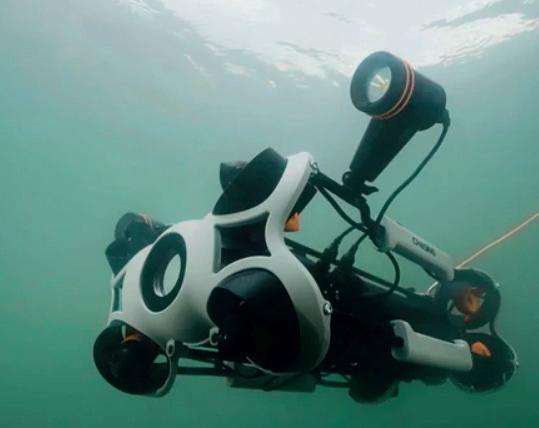





“At Seawork 2024, Alphageo received notable attention for its contributions to the aquaculture sector.
“The company showcased its advanced underwater ROVs [remotely operated vehicles] and underwater drone technologies, which are pivotal in the maintenance and monitoring of aquaculture operations. Specific mentions from the show highlighted Alphageo’s innovative solutions designed to enhance productivity and sustainability within the aquaculture industry.”
Alphageo is deeply involved in the aquaculture industry, primarily through its distribution and support of advanced underwater ROVs and drones. These technologies are critical for the inspection and maintenance of fish farms, allowing for precise monitoring of fish health, water quality, and structural integrity of nets and cages. The partnership with Chinese manufacturer Chasing has been particularly fruitful, with Chasing’s high-quality underwater drones being marketed effectively in the UK and other regions.
In regards to this year, Fowler indicated: “In 2024, Alphageo experienced significant business growth in the aquaculture sector. This impressive performance reflects the increasing adoption of advanced technologies in aquaculture for operational efficiency and sustainability. The business trend for Alphageo is positive, with a steady growth trajectory observed over the past few years.”
He added: “The demand for underwater drones and ROVs in aquaculture is on the rise, driven by the industry’s need for advanced monitoring and maintenance solutions. This growth is expected to continue as more aquaculture operations recognize the benefits of these technologies.”
Seawork 2025 is set to be held on June 10-12, 2025 and organisers Mercator Media report record re-bookings already, year on year. For details see seawork.com


We are looking forward to an exciting year
The latest aquaculture events, conferences and courses
AUGUST 24
AQUA 2024
www.aquaeas.org - www.was.org
Copenhagen, Denmark
August 26-30, 2024
Aquaculture conference and exhibition organised by the European and World Aquaculture Society.
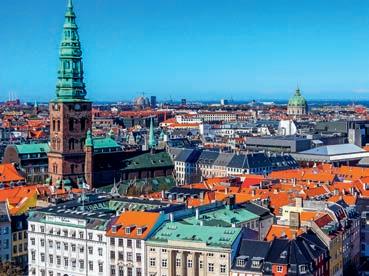
SEPTEMBER 24
SEAGRICULTURE
USA 2024
www.seagriculture-usa.com
Ketchikan, Alaska
September 11-12, 2024
Leading conference for the seaweed sector in the US.
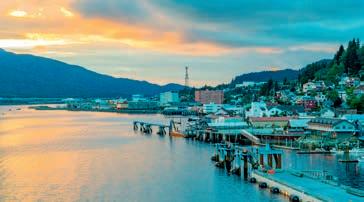
LATIN AMERICAN & CARIBBEAN AQUACULTURE 2024
www.was.org
Medellin, Colombia
September 24-27, 2024

NOVEMBER 24
SCOTTISH SEAWEED INDUSTRY ASSOCIATION
www.ssia.scot
Corran Halls, Oban UK
November 19-21, 2024
SSIA is an organization dedicated to the growth and innovation of the seaweed industry.
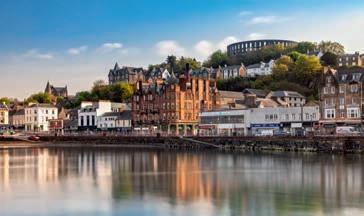
AFRAQ 2024
www.was.org
Hammamet, Tunisia
November 19-22, 2024
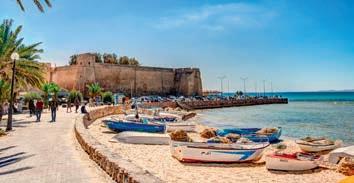
24
ALGAEUROPE 2024
www.algaeurope.org
Athens, Greece
December 10-13, 2024
Venue: Grandior Hotel Prague Conference on science, technology and business in the algae biomass sector.
MARCH 25
AQUACULTURE 2025
www.was.org
New Orleans, Louisiana USA
March 6-10, 2025
SEAGRICULTURE ASIAPACIFIC 2025
seagriculture-asiapacific.com
Adelaide, Australia 18-20 March 2025
APRIL 25
WORLD AQUACULTURE 2025 CHINA
www.was.org
Qingdao, China
April 24-27, 2025
MAY 25
AQUAFUTURE SPAIN 2025
www.aquafuturespain.com
Vigo, Spain
May 20-22, 2025
Venue: Ifevi Fairgrounds
An international meeting space for the Spanish aquaculture industry.
JUNE 25
WORLD AQUACULTURE SAFARI 2025
www.was.org
Entebbe, Uganda
June 23-26, 2025
25
AQUA NOR 2025
www.aquanor.no
Trondheim, Norway
August 19-21, 2025
The world’s largest aquaculture technology showcase.
25
AQUACULTURE EUROPE 2025
www.aquaeas.org
Valencia, Spain
September 22-25, 2025
OCTOBER 25
LACQUA 2025
www.was.org
Puerto Varas, Chile
October 6-9, 2025

Moredun Scientific are now able to offer a range of laboratory assays to measure functional immunity in fish. These assays can be used for a variety of purposes such as assessing the potency of vaccines and vaccine protocols and measuring the effect of functional feed and feed additives on the fish immune system. They can also be used in understanding the factors that affect the virulence of pathogen isolates, allowing informed disease control strategies, and in developing genetic markers of immune function for breeding programmes, to improve resistance to infectious disease. www.moredun-scientific.com
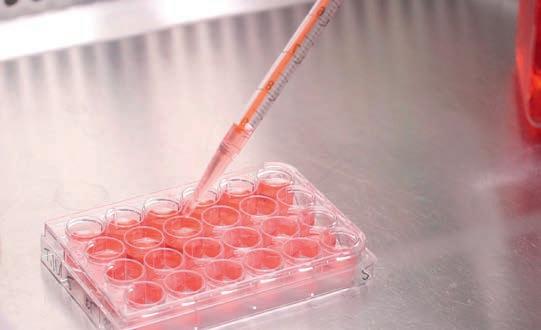
SpinTouch FX can analyse fresh, salt and brackish water
Utilising proven photometric technology that has proven to be gamechanging in global water testing applications, the SpinTouch FX tests eight parameters – including ammonia, nitrate and nitrite – with one water sample, simultaneously, within two minutes. The genius lies in the disc, which uses precisely measured reagents meaning results are easy to obtain, accurate and repeatable. Portable, rugged and with results displayed on-screen, the SpinTouch FX is the new go-to analyser for on-site testing – helping fish farmers to achieve accurate results thereby maintaining consistency of environment. www.lamotte-europe.com
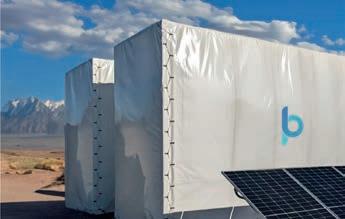


LARA is transforming aquaculture with sustainable, highefficiency seafood production
Blue Planet Ecosystems has developed LARA (pictured), a groundbreaking system redefining sustainable aquaculture. With the global population rising, traditional practices are falling short. LARA, short for Landbased Automated Recirculating Aquaculture, offers innovative solutions by leveraging advanced engineering, data science, and biology. This modular, autonomous system produces up to two tons of seafood per unit annually, deployable close to consumers for minimal environmental impact. Enhanced by big data, AI, and computer vision, LARA ensures optimal conditions for aquatic life. Committed to ESG compliance and animal welfare, LARA supports disease-free, antibiotic-free environments, producing healthier, nutritious seafood while safeguarding biodiversity. www.blueplanetecosystems.com
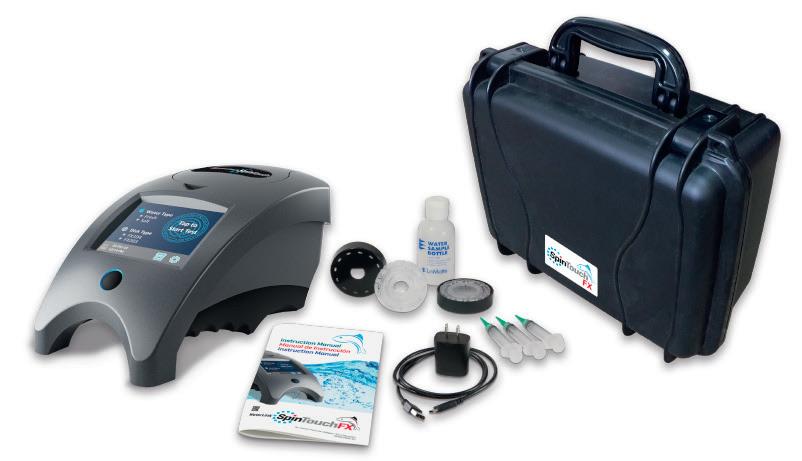

Leading ocean technology company RS Aqua has launched a new range of load sensors for the aquaculture industry. The smartlink® EE sensors are designed for live load sensing in aquaculture loading operations, providing unparalleled accuracy, safety and efficiency. The sensors in the smartlink® EE range, featuring the 2t ee and 5t ee models, are made from titanium and deliver real-time, downloadable data via a user-friendly app. www.rsaqua.co.uk

















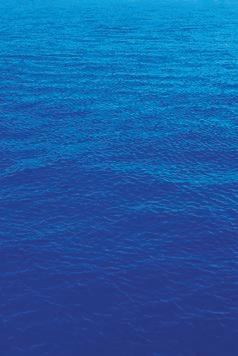

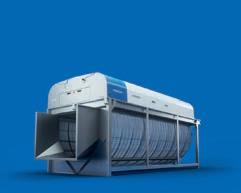





























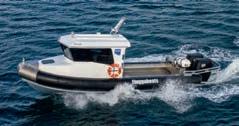





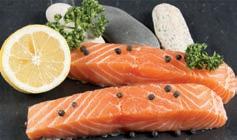

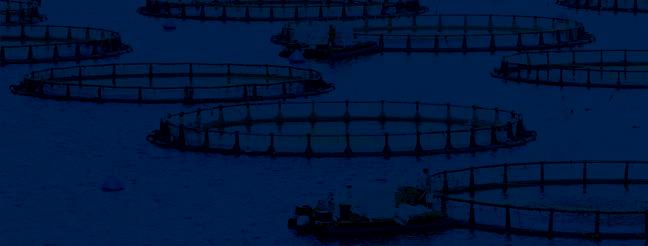
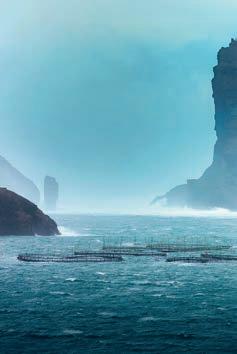



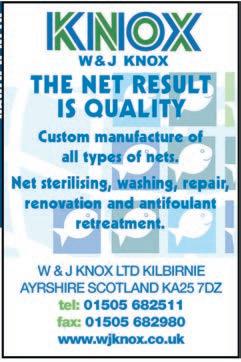
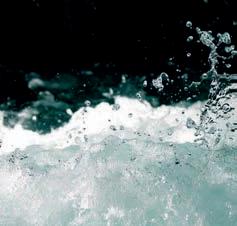






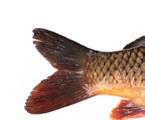
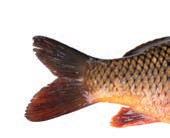

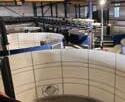

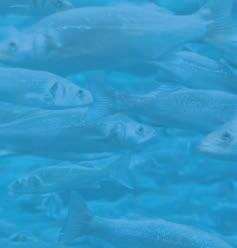














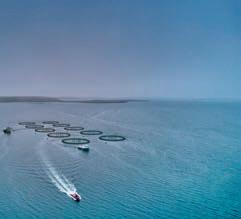
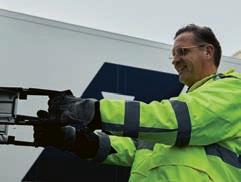
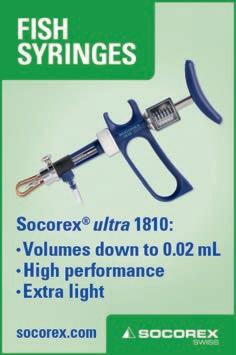

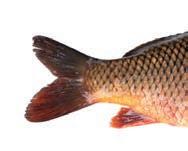





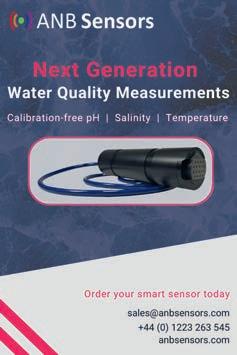




By Nick Joy
THE climate for fish sales and prices globally is generally set fair, with the odd bump. This is in stark contrast to the outlook for production globally, especially for salmon.
The Canadian government isn’t just making life hell for agriculture but also for salmon farming. Then we have the new Norwegian sea lice system, closely followed by the Scottish. Neither set of regulators are even vaguely willing to debate their systems with anyone outside their circle, which tells you a great deal about the science involved. I know that in my day, the large companies were unwilling to challenge government in any meaningful way, and I suppose the position is similar now. I wish it were not so.
Maybe it would be better to dwell on something else more interesting. When we started Loch Duart all those years ago, differentiation was on our minds. There had been organic farms, and there still are, but the organic standard being applied to intensive fish culture makes even less sense than it does with cattle or sheep. It is fairly simple. The principle of organic farming means that the ability to treat animals for illness has to be restricted; how can this be compatible with welfare? So we avoided organic.
The difficulty of how to differentiate, when you are a small company, becomes stark when having someone else putting a rubber stamp on your product is impossible. So we decided to go down our own brand route, knowing how difficult it would be but also knowing that the rewards would be commensurate.
“Organic salmon” can be substituted by anyone else who wishes to produce it. If you go down the brand route, you own the brand and its inherent value, which leads us to the next problem.
If you can’t get a stamp from an external organisation, which I wouldn’t necessarily support, then on what basis can you be different? We chose, primarily: sustainability, naturalness of production and finally – and most importantly – taste. The key question is whether it connects with consumers and customers.
I have two quick stories to illustrate this. First, the people producing the TV show Landward decided they wanted to interview us and I got the short straw. The first question I was asked on camera was: “So you call yourself sustainable. Why do you think that other farms aren’t sustainable?”
A classic journalist question, steeped in cynicism and delivered by a master. My reply was: “You have to be a hell of cynic to see the world that way. Just because we call ourselves sustainable doesn’t say anything about anyone else. It just tells our customers what we are focussing on!”
In a meeting in Nick Nairn’s cook school, I met all the buyers from the supermarkets. They said that our thinking didn’t resonate with them at that time. My reply was that it was our job to get our message to the consumer for two reasons. First, it made us hard to substitute and secondly it meant that every enactor between us and our consumers became service providers if we got our message through. Surprisingly this did not please our supermarket colleagues. If you differentiate, there will be people who disapprove. In quite a lot of cases these are the people who will benefit most if you do not succeed. The first principle of supermarkets is to reduce difference between competitors within a sector. They will tell you that this is what the customer wants, but it is not. It is what they want. If your product is undifferentiable, then they can pressure your price because your product can easily be swapped for another. The situation not only suits them, but is actively
We decided to go down our own brand route, knowing how difficult it would be
designed and pursued by them.
Of course the prize to be gained is consumer recognition and to achieve this you have to have a number of things. The first is a genuine difference, measurable and recognisable to the final user.
After that comes a message or story which appeals to the consumer. Finally, and one with which we are all blessed, a good provenance. Of course citizens of any country think they have good provenance, but here in Scotland we have one which is recognised and loved all around the world. Is there a single salmon company using a truly Scottish name, however? Oh yes there is one!
The time to talk about differentiation is now because, according to the latest figures, global production is starting to stagnate. Add to that we are now a mature industry and have seen consolidation on a massive scale. I am not in any way suggesting that this should be reversed, but large companies should see advantage for their profitability in producing fish aimed at different sectors of the market. Salmon produced to the lowest common denominator cannot be good in the long term. We are not just producing tasteless protein. If we do we will be replaced by chicken, as it’s cheaper and easier to produce!


















































































































